Huawei Technologies E620 HSDPA/WCDMA/EDGE/GPRS/GSM Data Card User Manual confidentiality letter
Huawei Technologies Co.,Ltd HSDPA/WCDMA/EDGE/GPRS/GSM Data Card confidentiality letter
User Manual
Wonderful Communication, Mobile Life.
Welcome to HUAWEI 3G Data Card from Huawei Technologies Co., Ltd.
HUAWEI 3G Data Card
User Manual

Copyright © 2006 Huawei Technologies Co., Ltd.
All Rights Reserved
No part of this manual may be reproduced or transmitted in any form
or by any means without prior written consent of Huawei Technologies
Co., Ltd.
Trademarks
and HUAWEI are trademarks of Huawei Technologies Co., Ltd. All
other trademarks mentioned in this manual are the property of their
respective holders.
Notice
The information in this manual is subject to change without notice.
Every effort has been made in the preparation of this manual to ensure
accuracy of the contents, but all statements, information, and
recommendations in this manual do not constitute the warranty of any
kind, expressed or implied.
Statement
This device complies with Part 15 of the FCC Rules and with RSS-210
of Industry Canada.
Operation is subject to the following two conditions:
l this device my not cause harmful interference, and
l this device must accept any interference received, including
interference that may cause undesired operation.
This equipment has been tested and found to comply with the limits for
a Class B digital device, pursuant to Part 15 of the FCC Rules. These
limits are designed to provide reasonable protection against harmful
interference in a residential installation. This equipment generates,
uses and can radiate radio frequency energy and, if not installed and
used in accordance with the instructions, may cause harmful
interference to radio communications. However, there is no guarantee
that interference will not occur in a particular installation. If this
equipment does cause harmful interference to radio or television
reception, which can be determined by turning the equipment off and
on, the user is encouraged to try to correct the interference by one or
more of the following measures:
l Reorient or relocate the receiving antenna.
l Increase the separation between the equipment and receiver.
l Connect the equipment into an outlet on a circuit different from
that to which the receiver is connected.
l Consult the dealer or an experienced radio/TV technician for
help.
Notice
Changes or modifications made to this equipment not expressly
approved by COMPANY may void the FCC authorization to operate
this equipment.
RF Exposure Notice for licensed PCMCIA Cards
Caution
The PC Card has been tested for compliance with FCC / IC RF
exposure limits in the laptop computer(s) configurations with side
PCMCIA slot and can be used in laptop computers with substantially
similar physical dimensions, construction, and electrical and RF
characteristics.
Notice
If this PC Card is intended for use in any other portable device, you
are responsible for separate approval to satisfy the SAR requirements
of Part 2.1093 of FCC rules.
The external antenna must be installed and operated at a minimum
distance of 20cm between the radiator and your body. This transmitter
and its antenna(s) must not be co-located or operating in conjunction
with any other antenna or transmitter.
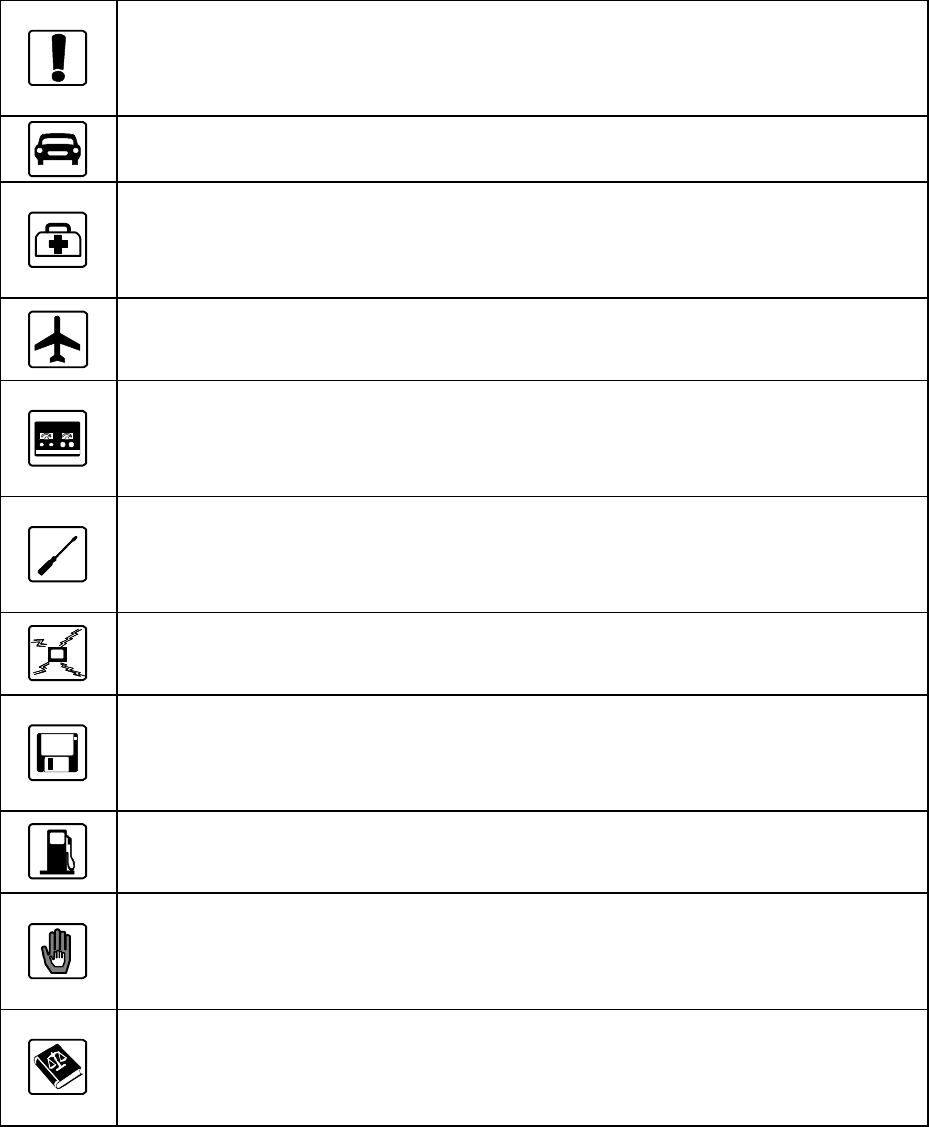
Safety Precautions
Before using the wireless data card, please read the safety precautions
carefully and also let your children know these, so that you can use your
wireless data card correctly and safely. For details, see the section “Warnings
and Precautions”.
Do not switch on your wireless data card when it is prohibited to
use wireless device or when the wireless data card may cause
interference or danger.
Do not use your wireless data card while driving.
Follow any rules or regulations in hospitals and health care
facilities. Switch off your wireless data card near medical
apparatus.
Switch off your wireless data card in aircraft. The wireless data
card may cause interference to control signals of the aircraft.
Switch off your wireless data card near high-precision electronic
devices. The wireless data card may affect the performance of
these devices.
Do not attempt to disassemble your wireless data card or its
accessories. Only the qualified personnel is allowed to service or
repair the wireless data card.
Do not place your wireless data card and its accessories in
containers with strong electromagnetic field.
Do not place magnetic storage media near your wireless data
card. Radiation from the wireless data card may erase the
information stored on them.
Do not put your wireless data card in a high-temperature place or
use it in a place with flammable gas such as a gas station.
Keep your wireless data card and its accessories away from
children. Do not allow children to use your wireless data card
without guidance.
Observe any laws or regulations on the use of wireless data cards.
Respect others’ privacy and legal rights when using your wireless
data card.
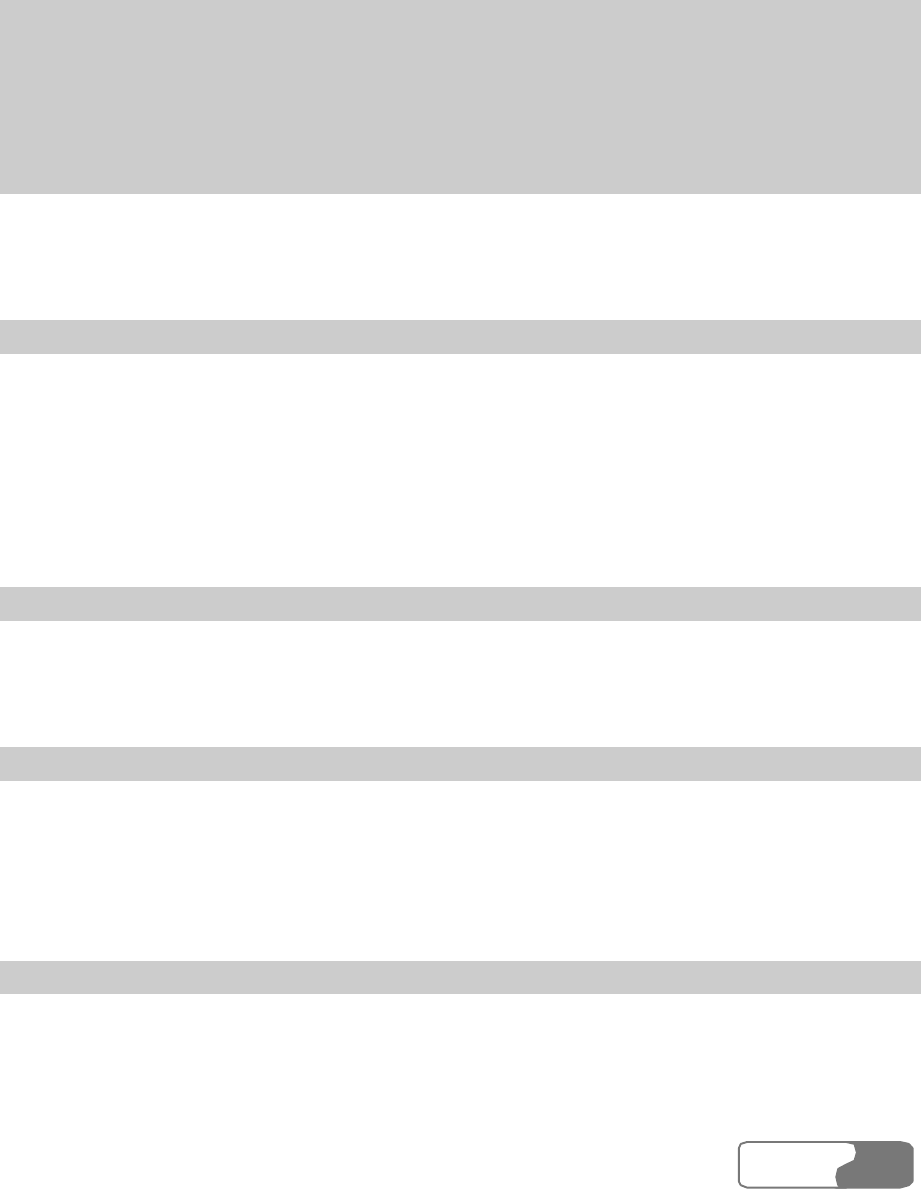
HUAWEI
i
Contents
1 Overview...............................................................................................1
2 What’s in Your Packing Box...................................................................2
3 Getting to Know Your Data Card............................................................3
4 Getting Started.......................................................................................5
Laptop Configuration Requirements..................................................5
Preparing the Data Card....................................................................5
5 Installation Guide...................................................................................7
Installing the Data Card Management................................................7
Installing the Data Card Hardware....................................................7
Removing the Data Card...................................................................8
Uninstalling the Data Card Management...........................................9
6 Descriptions of the Data Card Management GUI....................................10
Start the Data Card Management......................................................10
Introduction to the Main Screen.......................................................10
7 Internet Services....................................................................................14
Browse the Internet.........................................................................14
View Connection Information..........................................................14
Volume Statistic..............................................................................15
8 Message Services..................................................................................17
Write Messages...............................................................................17
Outbox............................................................................................18

Conten
ts
HUAWEI
ii
Inbox..............................................................................................21
Draft...............................................................................................25
Trash...............................................................................................26
Report.............................................................................................28
Import Messages.............................................................................29
9 Phone Book Management......................................................................31
Information Management.................................................................31
Export/Import Management.............................................................37
10 Settings and Information Query...........................................................40
Message Settings.............................................................................40
Network Settings.............................................................................42
Connection Settings.........................................................................44
System Settings...............................................................................46
PIN Management............................................................................47
Upgrade In-Service.........................................................................50
View Diagnostics Information..........................................................51
About HUAWEI 3G Data Card........................................................52
11 Technical Parameters...........................................................................53
12 FAQ on HUAWEI 3G Data Card..........................................................55
13 Warnings and Precautions....................................................................57
Electronic Device............................................................................57
Hospital..........................................................................................57
Area with flammables and Explosives..............................................57
Traffic Safety..................................................................................58
Storage Environment.......................................................................58

Contents
HUAWEI
iii
Children Safety...............................................................................59
Operating Environment...................................................................59
Cleaning and Maintenance...............................................................59
Environmental Care.........................................................................60
Certification Information (SAR)......................................................60
14 Abbreviations......................................................................................62

HUAWEI
1
1 Overview
Welcome to the HUAWEI 3G Data Card. With this product, you can easily
access the following:
Internet Services
You can access the Internet by connecting to networks, and surf the Internet
conveniently.
Message Services
HUAWEI 3G Data Card Management provides message services, and
features the large storage capacity, and easy manageability. You can edit,
receive and send messages through message records directly on your laptop
after inserting the SIM/USIM card.
Phone Book Management
You can transfer the phone book information of a large capacity to your
laptop. You can create, modify, and delete the phone book information, and
also send messages through the phone book directly. The Data Card
Management also supports the importing or exporting of phone book
information to facilitate information management.
Settings and Information Query
You can build a personalized platform, set the HUAWEI 3G Data Card and
query or modify settings at any time.

HUAWEI
2
2 What’s in Your Packing Box
Your 3G Data Card packing box contains:
l A HUAWEI 3G Data Card
l A CD-ROM containing an installing program, PDF documents of User
Manual and Quick Start
l A guide book for Quick Start
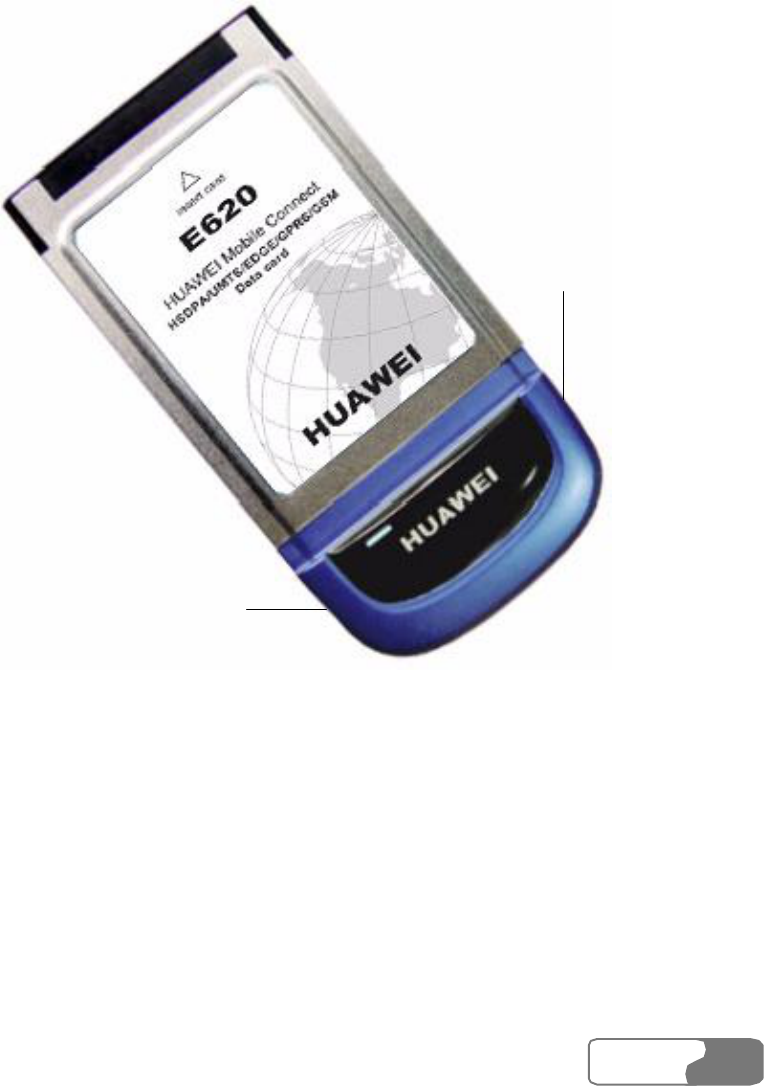
HUAWEI
3
3 Getting to Know Your Data Card
The following is an illustration of a HUAWEI 3G Data Card:
Earphone
Jack
Antenna
Jack
Note
This is a schematic picture of a HUAWEI 3G Data Card. Your Data Card
may be different from this one. It is subject to your actual one.

3
Getting to Know Your Data Card
HUAWEI
4
Indicator
Status indicator of the Data Card displays green or blue light.
Green light
l When the Data Card is inserted into the PCMCIA slot of your laptop, the
green indicator lights.
l When the Data Card is searching for the network, the green indicator
lights.
l When the Data Card registers to 3G network, the green indicator lights.
l When the Data Card works for any ongoing data transmission in the
network mode of 3G (HSDPA / WCDMA), green indicator blinks. The
status of the indicator is on for 100 ms and off for 100 ms.
Blue light
l When the Data Card registers to GSM network, the blue indicator lights.
l When the Data Card works for any ongoing data transmission in the
network mode of 2G (GPRS/EDGE), the blue indicator blinks. The status
of the indicator is on for 100 ms and off for 100 ms.

HUAWEI
5
4 Getting Started
Laptop Configuration Requirements
To use the Data Card, the following are required for your laptop:
l A type II PCMCIA Card slot supporting CARDBUS.
l A 133 MHZ Pentium processor or above. 500 MHz Pentium or the
microprocessor with higher frequency is recommended.
l 32 MB RAM or above. The memory of 128 MB or above is
recommended.
l 30 MB idle hard disk or above.
l Windows XP or Windows 2000 operating system.
l Display resolution of 800 % 600 pixels or above. Display resolution of
1024 % 768 pixels is recommended.
Preparing the Data Card
1. Take out the HUAWEI 3G Data Card from the protective cover.
2. As shown in the following figure, insert the SIM/USIM card into the slot
on the back of the Data Card, and make sure the golden contact on the card is
facing downwards.
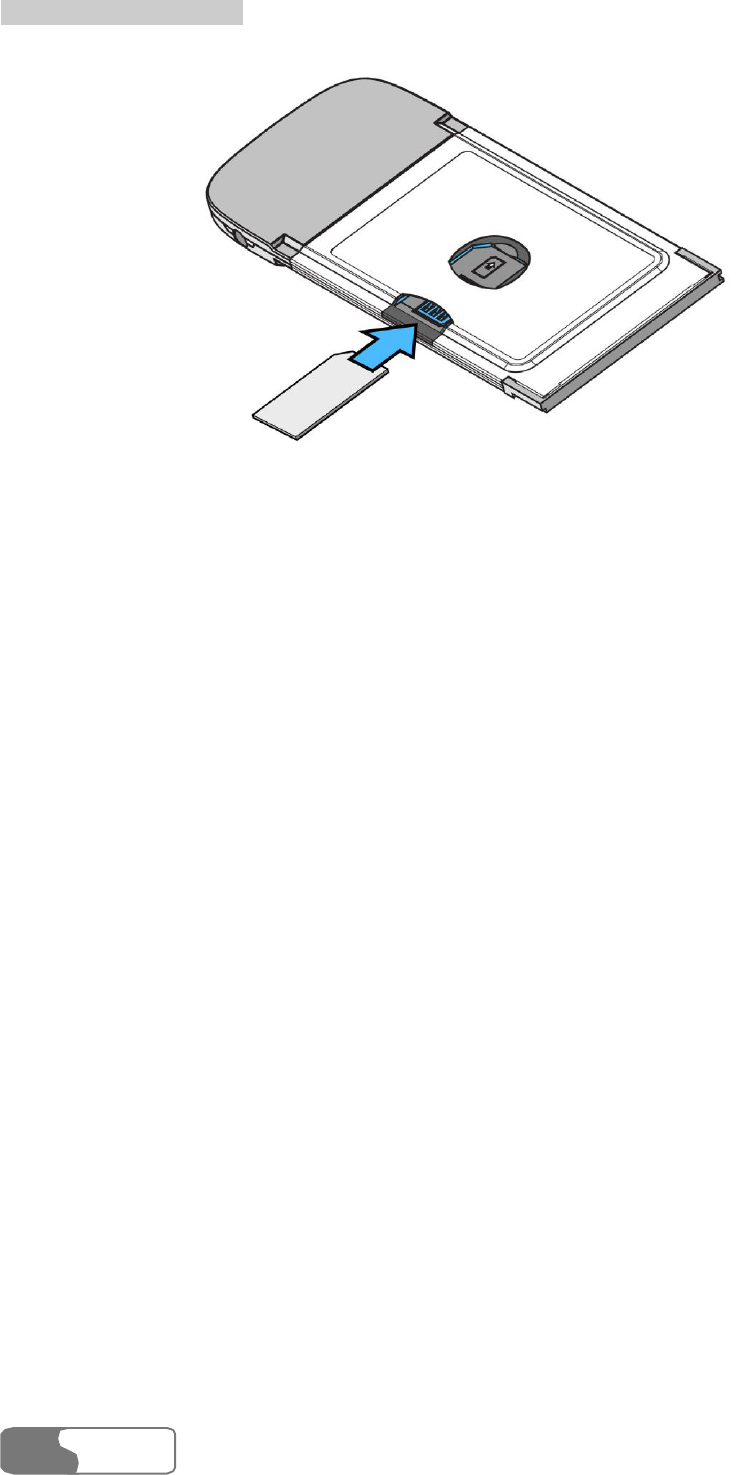
4
Getting Started
HUAWEI
6
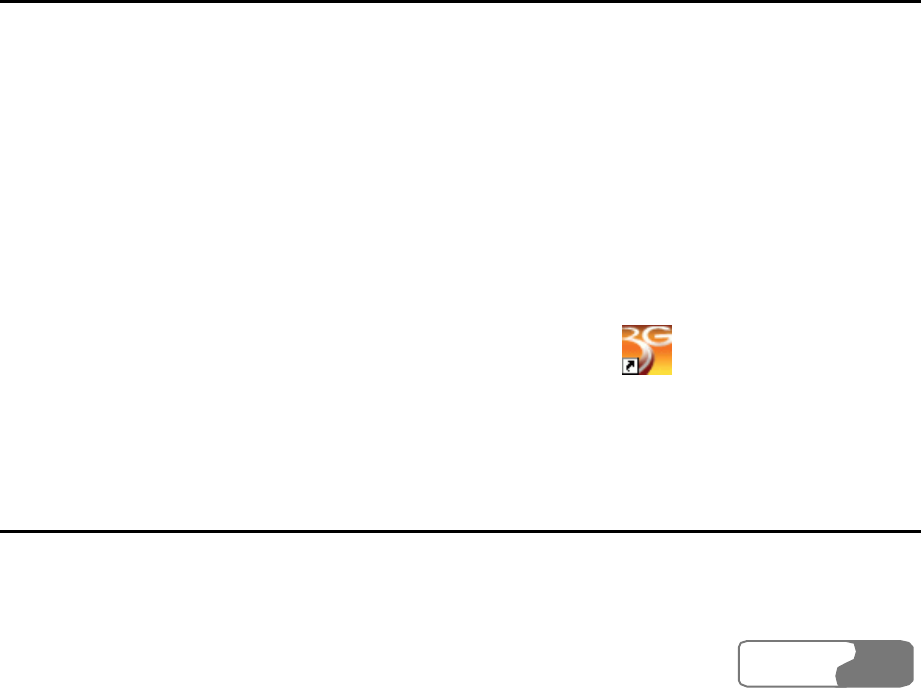
HUAWEI
7
5 Installation Guide
There are slight differences in the installation procedures between Windows
XP, Windows 2000. Install the Data Card according to the specific prompt
information, if any step in your installation differs from what is described.
Here, we will take the Windows XP operating system as an example.
Note
Make sure that the Data Card Management has been installed before the Data
Card is inserted into your laptop.
Installing the Data Card Management
1. Put the CD that contains the Data Card Management into the CD-ROM
drive of your laptop.
2. The installation procedures start automatically. If the AUTORUN
procedure does not respond, please browse the CD to find and run the
Setup.exe. Now the installation procedure should start automatically.
3. When the Choose Language dialog box appears, select the
corresponding language, and click OK.
4. Install the Data Card Management according to the instructions of the
setup program.
5. After successful installation, a shortcut icon for the Data Card
Management appears on the desktop.
Installing the Data Card Hardware
1. Insert the Data Card which contains the SIM/USIM card into the
PCMCIA slot of your laptop.
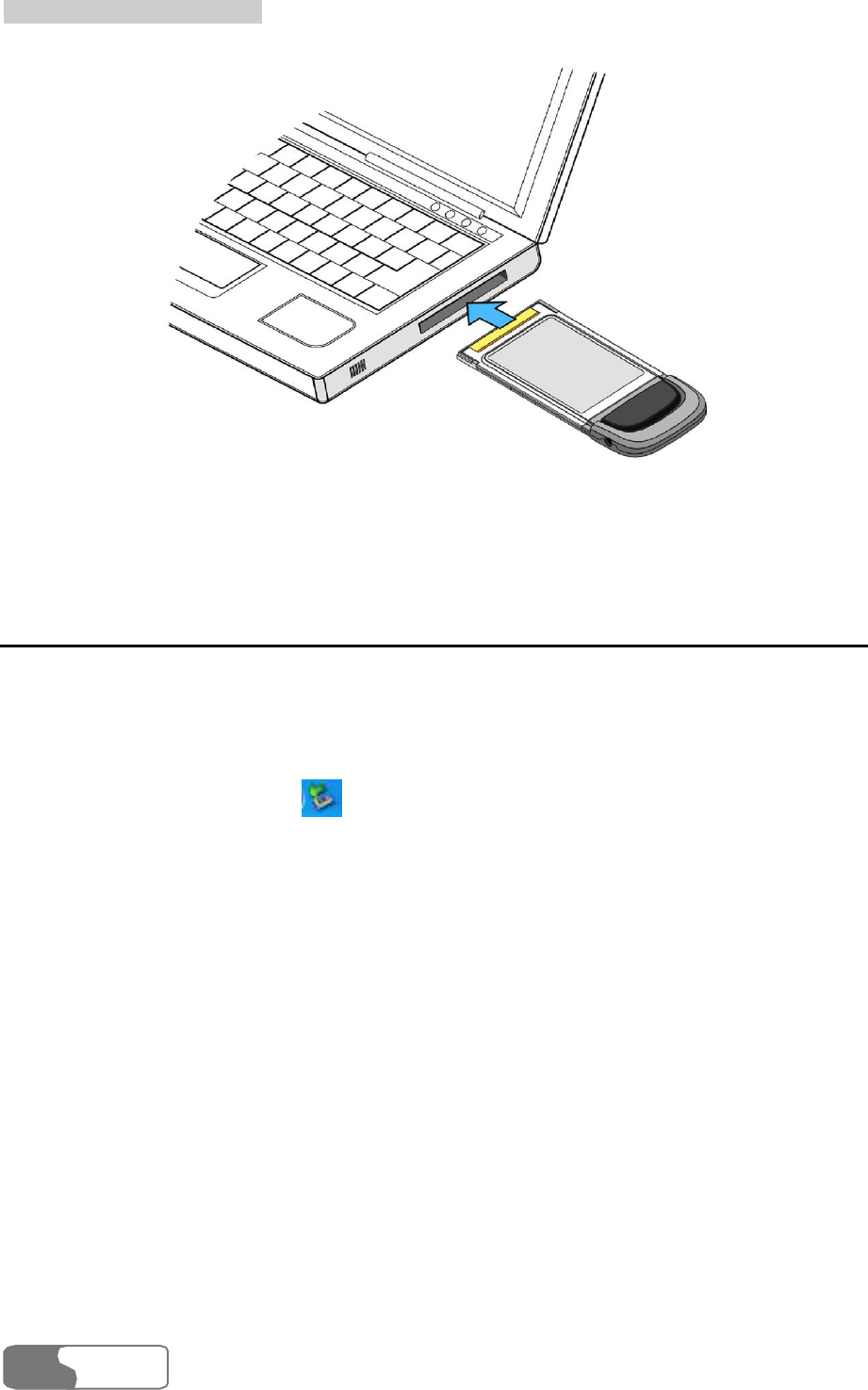
5
Installation Guide
HUAWEI
8
2. Now the system will find the new hardware and initialize the new
hardware Installation Shield Wizard automatically.
Removing the Data Card
To remove the Data Card from your laptop, please use the hardware
removing function of the Windows system to stop the operation of the Data
Card, and then pull it out. Follow the procedure below:
1. Double-click the icon on the lower right of your laptop screen; an
Unplug or Eject Hardware dialog box is displayed.
2. Stop the use of the Data Card hardware "NEC PCI to USB Open Host
Controller".
3. After the system prompts that it is safe to remove the device, pull out the
Data Card.
Note
l Do not remove the Data Card directly without following the above
procedures, lest your laptop may be harmed.
l Do not remove the Data Card when the operating system is in the
Hibernate or Standby mode.

5
Installation Guide
HUAWEI
9
Uninstalling the Data Card Management
There are two methods to uninstalling the Data Card Management:
l You can uninstall the Data Card Management through the Add/Remove
function of Control Panel in the operating system.
l You can select Programs/Huawei Data Card/Uninstall in the Start
menu to uninstall the Data Card Management.
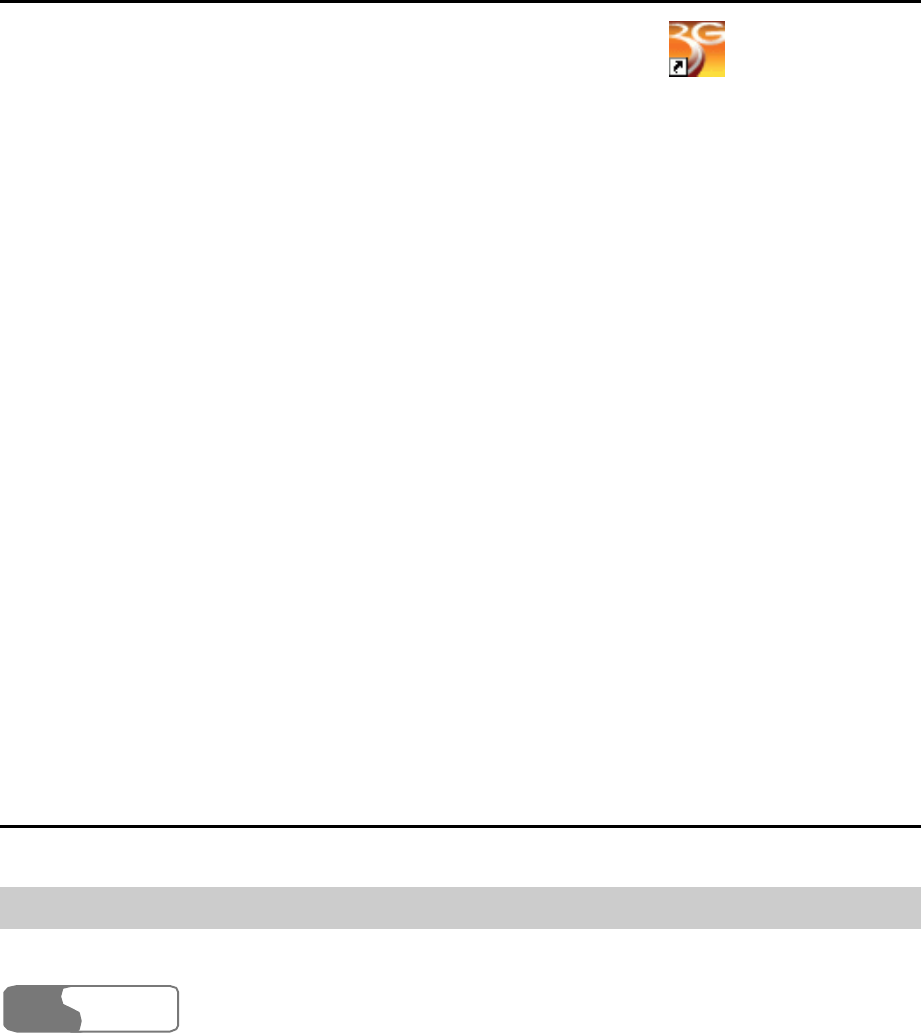
HUAWEI
10
6 Descriptions of the Data Card
Management GUI
Start the Data Card Management
1. To start the program, double-click the shortcut icon of the
HUAWEI 3G Data Card on the desktop.
2. If it prompts to enter the PIN (Personal Identification Number), enter a
valid PIN and click OK.
Note
l You have three chances to enter a valid PIN. If you enter a wrong
PIN thrice, your SIM/USIM card would be locked. If this happens, use the
PUK (PIN Unblocking Key) to unlock it.
l You have 10 chances to enter a valid PUK. If you enter a wrong
PUK ten times, your SIM/USIM card would cease to operate. If this happens,
contact your card carrier.
l When you failed to enter the valid PIN or the PUK, you can click
Cancel to cancel the validation operation. In this case, you can not use the
related functions of SIM/USIM card. For example, accessing the Internet,
sending and receiving messages, and reading messages in SIM/USIM card.
l The PIN and the PUK are provided by your SIM/USIM card
carrier. For information about how to modify, enable or disable the PIN, refer
to “PIN Management” on page 47.
Introduction to the Main Screen
Interface Overview
The interface, displayed after the HUAWEI 3G Data Card starts, is as
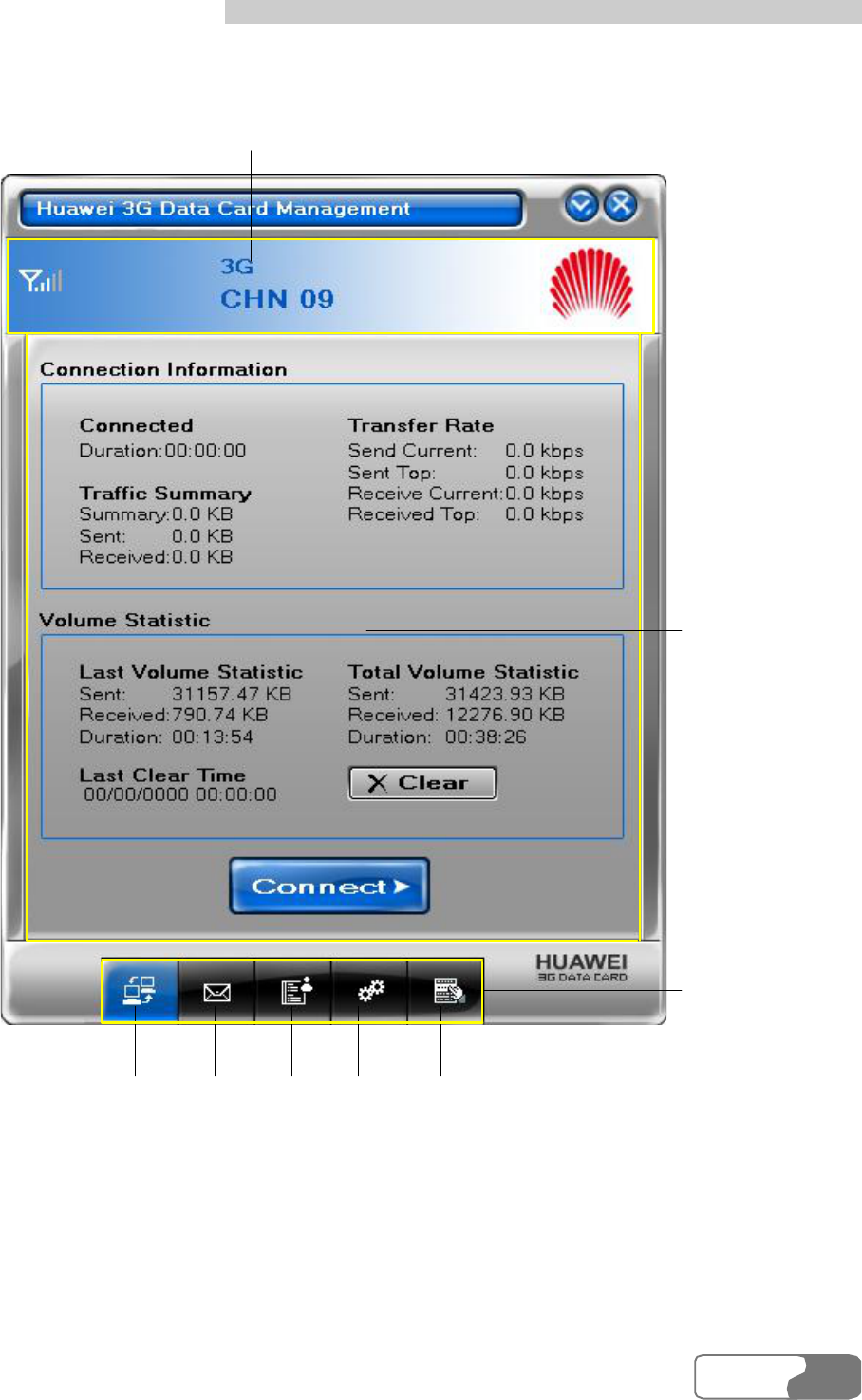
6
Descriptions of the Data Card Management G
UI
HUAWEI
11
follows:
Connection Phone
Book
Message SettingMain Menu
Operation Navigation Area
Status Display Area
User Work Area
The interface is divided into three parts. From the top to down, they are
Status Display Area, User Work Area, and Operation Navigation Area.
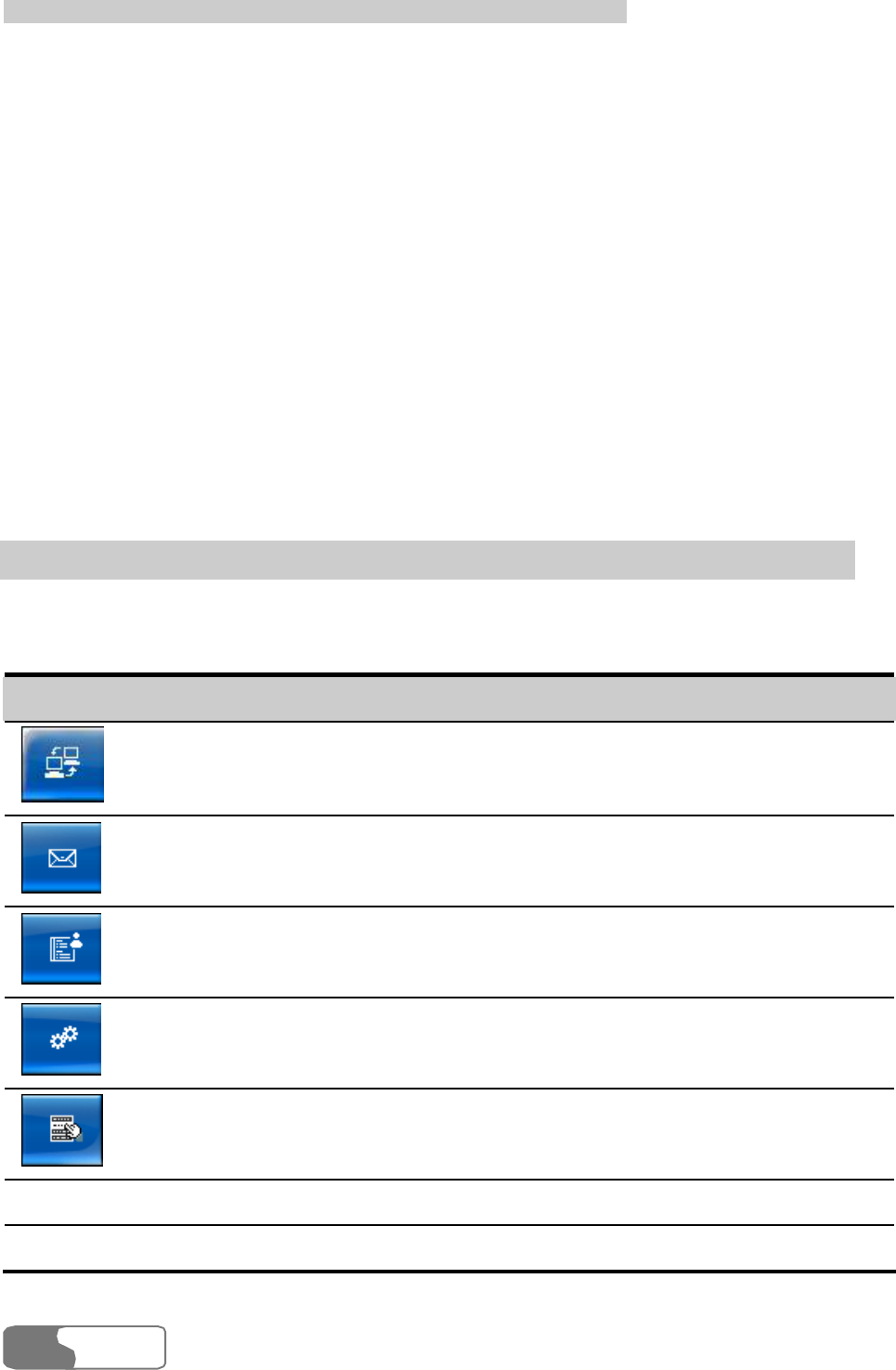
6
Descriptions of the Data Card Management GUI
HUAWEI
12
Status Display Area
The status display area displays the icon of network signals, the icon of
unread messages, the network modes and the information of current carriers
and so on.
User Work Area
The user work area often displays some data information and operating
interfaces. Different functions correspond to different work areas.
Operation Navigation Area
The operation navigation area displays the main function menu of the Data
Card Management, such as the internet service, SMS service, phone book
management and so on.
Shortcut Icons and Keys
The list below describes the shortcut icons and keys provided by the Data
Card Management.
Shortcut icon/key Description
/ <Alt + N>
To display the Connection interface.
/ <Alt + M>
To display the Message interface.
/ < Alt + P>
To display the Phone Book interface.
/ <Alt + S>
To display the Setting interface.
/ <Alt + W>
To display the Main Menu.
F1 To display the related topic of online help.
Alt + F4 To exit the Data Card Management.
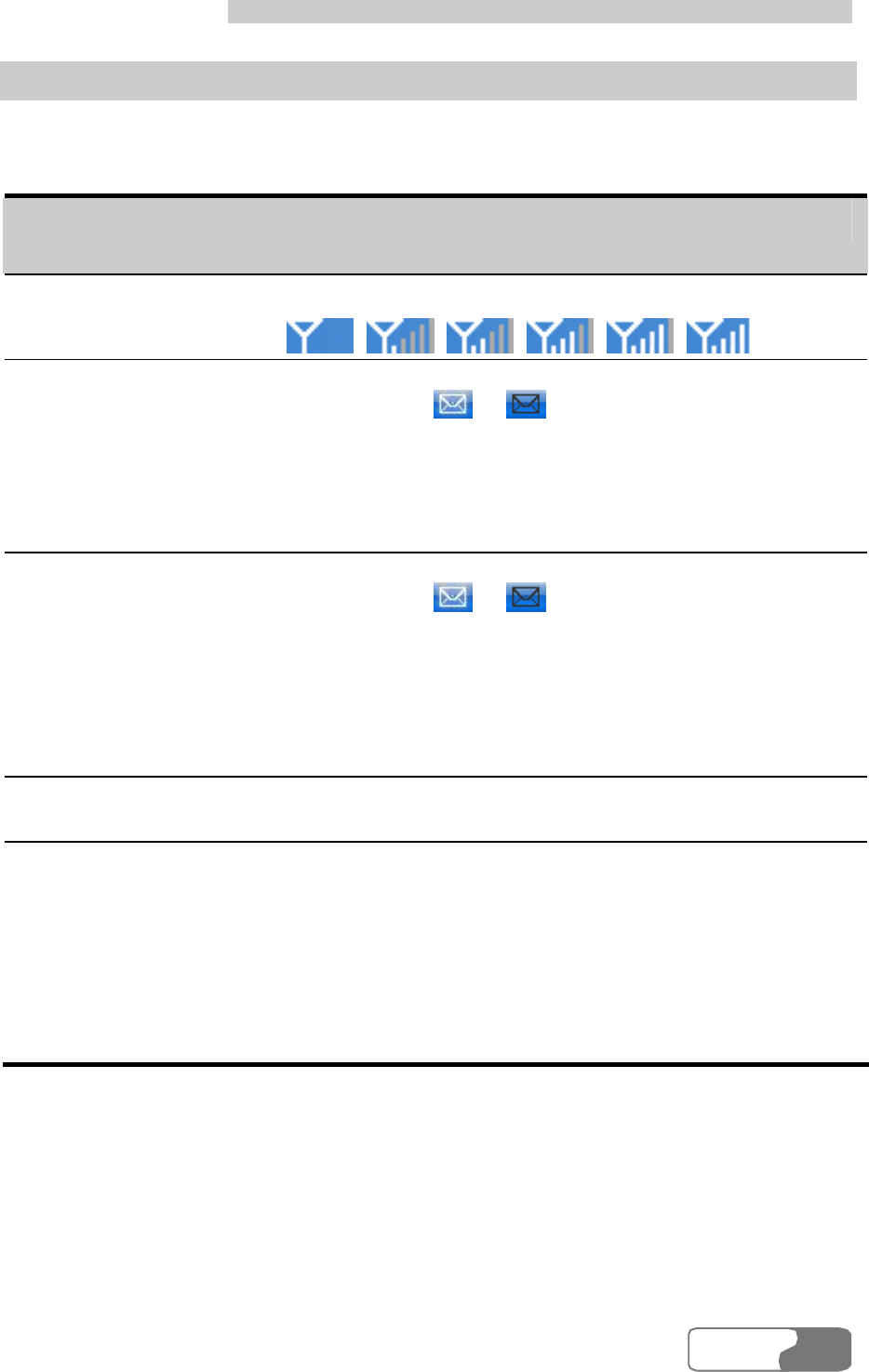
6
Desc
riptions of the Data Card Management GUI
HUAWEI
13
Status Information on the Screen
The status information shown on the screen depends on the service that is
going on. All the status information and their descriptions are listed below:
Status
information Description
Signals Signal strength indication in current network:
Unread messages When there are unread messages:
l The icons / flash in the status display
area. If you put the cursor on the icon, the total
number of unread messages is displayed.
l The Unread Message alert box is displayed in
the upper right corner of your laptop screen.
New messages When there are new messages:
l The icons / flash in the status display
area.
l The Prompt dialog box is displayed in the lower
right corner of your laptop screen. You can click
View in the dialog box to see the message in the
Inbox.
Carriers Displays the related information of the current
network carriers.
System mode Display the information of system mode.
The descriptions of status are as follows:
l GPRS/EDGE: 2G network, data service is
available.
l 3G: 3G network, high speed data services are
available.
l No display: No service.
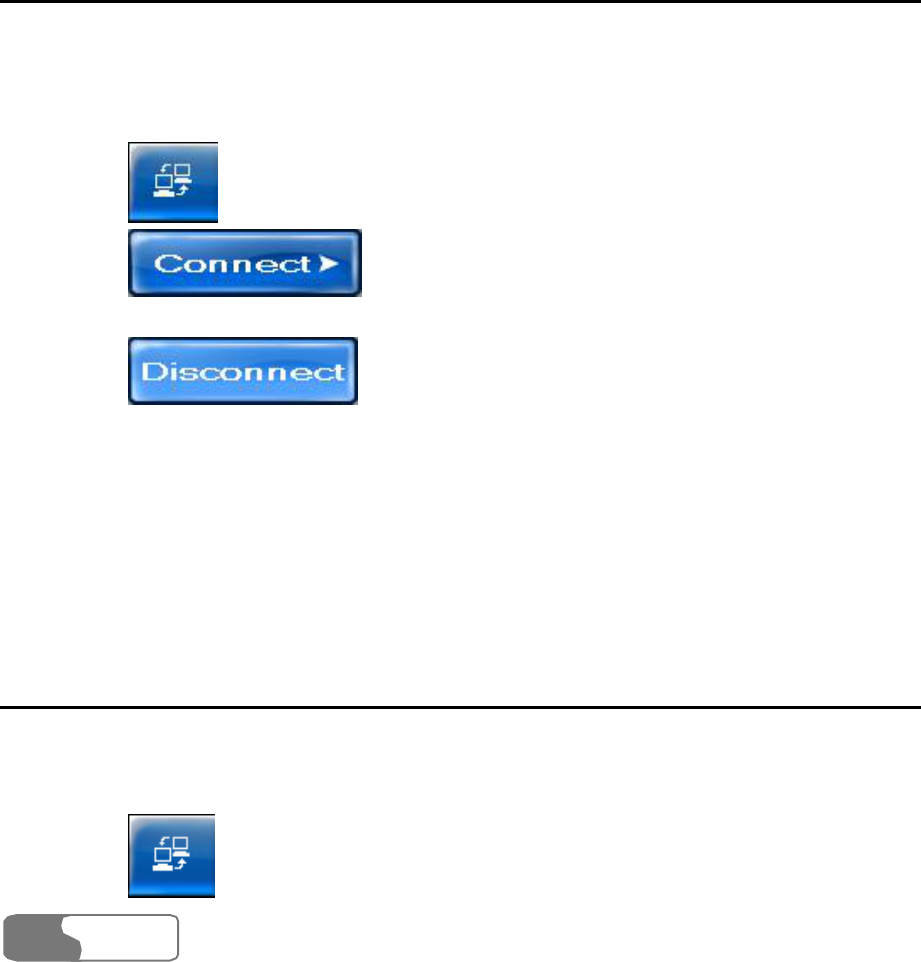
HUAWEI
14
7 Internet Services
You can access the Internet through the wireless networks of
HSDPA/WCDMA or GSM/GPRS/EGDE.
Browse the Internet
After setting the connection, you can connect to wireless network.
1. Set correct Connection configuration, refer to “Connection Settings” on
page 47.
2. Click to display the Connection interface.
3. Click to connect to wireless network.
4. Browse the Internet.
5. Click to disconnect from wireless network.
Note
After connecting to wireless network, you can start the internet explorer tools
in your laptop to browse the Internet.
View Connection Information
After connecting to a network, you can view the specific information of data
services in network.
1. Click to display the Connection interface.
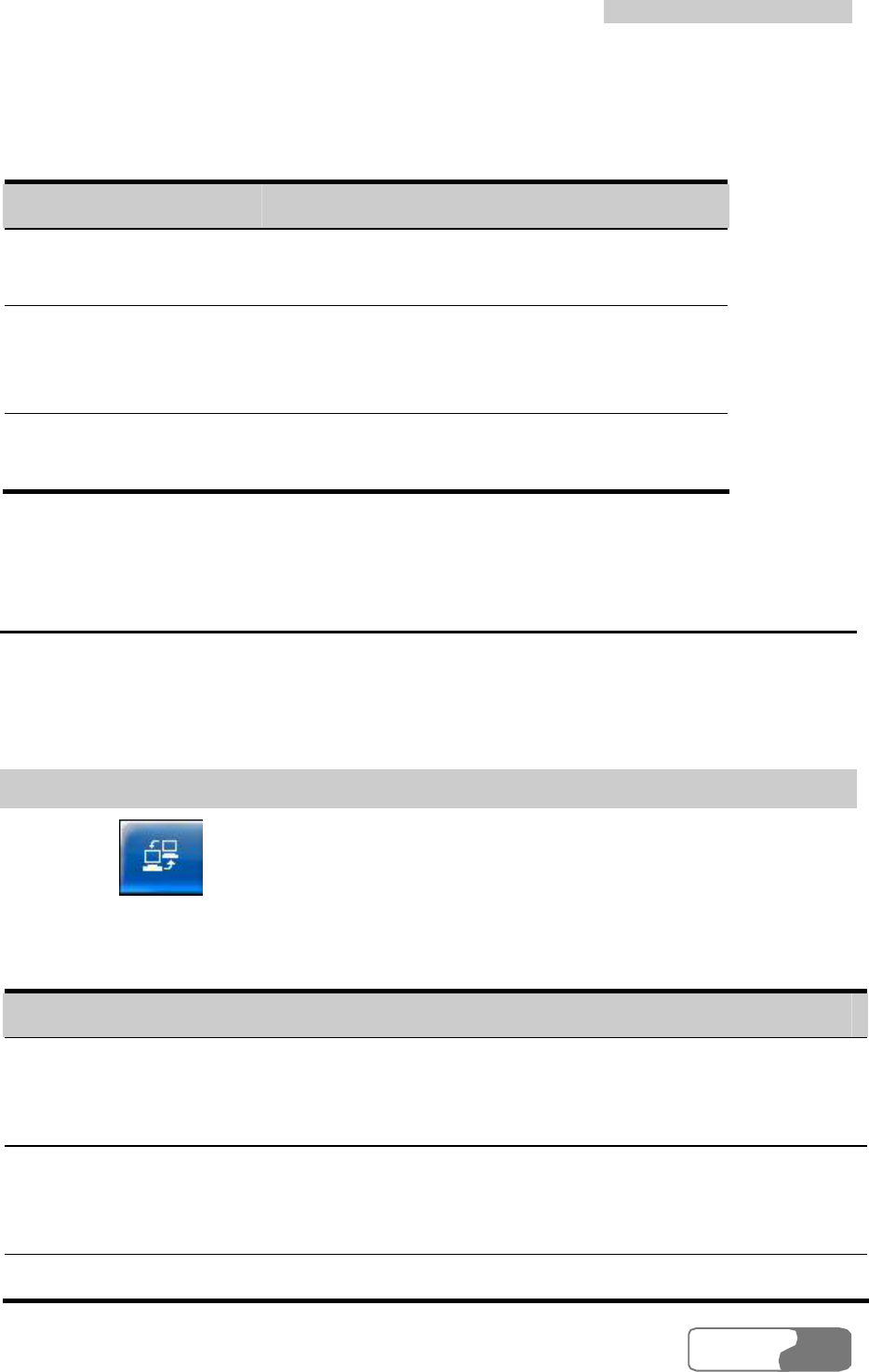
7
Internet Services
HUAWEI
15
2. View the specific information of data services in the Connection
interface.
All the connection parameters and their descriptions are listed below:
Parameter Description
Connected Display the duration when connecting
to wireless network.
Transfer Rate Display the current sending volume,
receiving volume, sent maximum
rate, and received maximum rate.
Traffic Summary Display the received, sent and
summary volume.
Volume Statistic
You can see the flow information in the Volume Statistic frame, when you
are browsing networks, including the sent volume, received volume.
View Statistic Data
1. Click to display the Connection interface.
2. Display the volume statistic data in the Volume Statistic frame.
All the volume statistic parameters and their descriptions are listed below:
Parameter Description
Last Volume
Statistic Displays the volume information when you browsed the
network last time, including the sent volume, the
received volume and the duration.
Total Volume
Statistic Displays all the total statistic information after clearing
the volume statistic information last time, including the
sent volume, received volume and the duration.
Last Clear Time
Displays the time of last clearance.
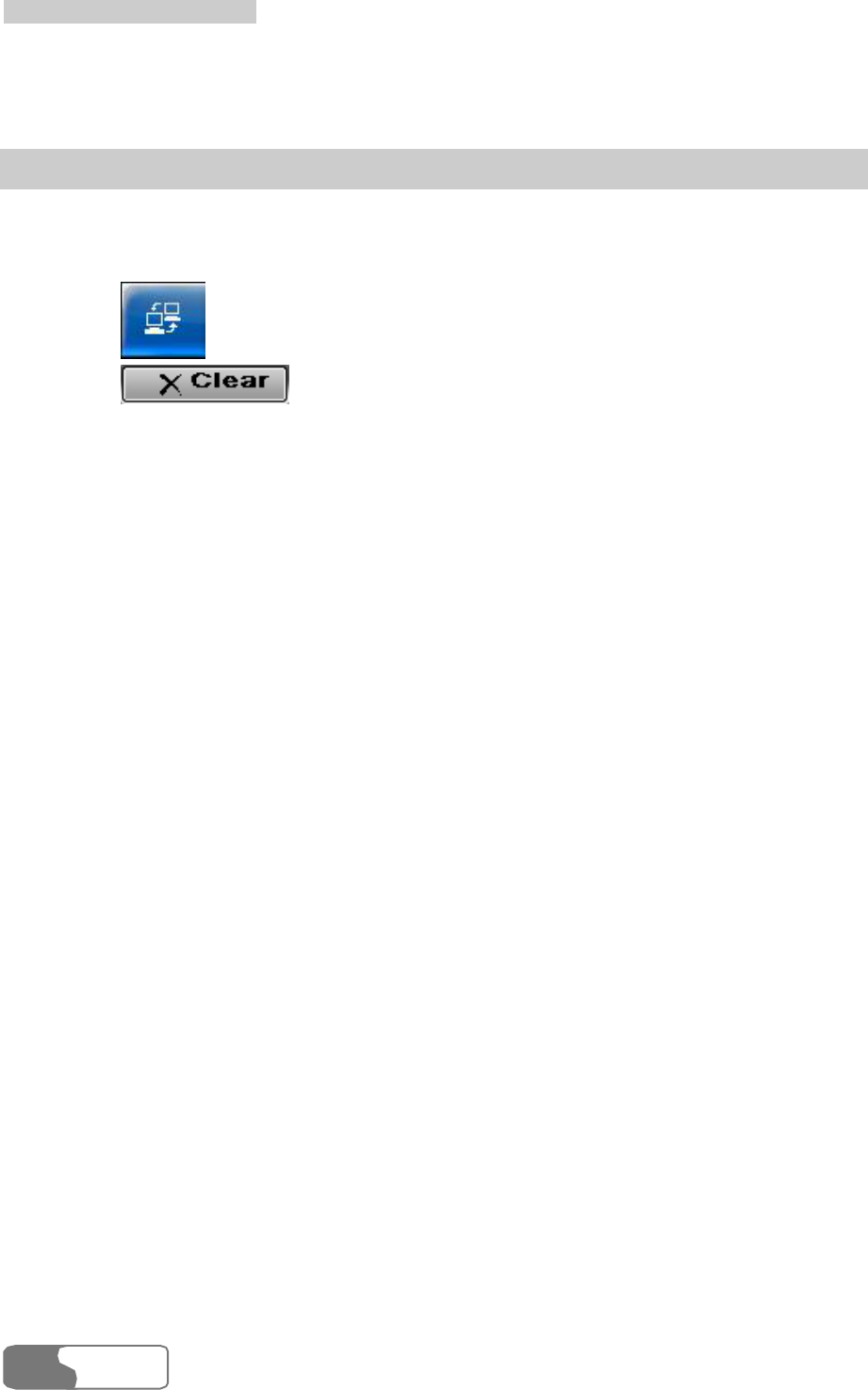
7
Internet Service
s
HUAWEI
16
Clear Statistic Data
You can clear the data of the last volume statistic, and the total volume
statistic data.
1. Click to display the Connection interface.
2. Click to display the Prompt dialog box.
3. Click OK to clear all the volume statistic data.
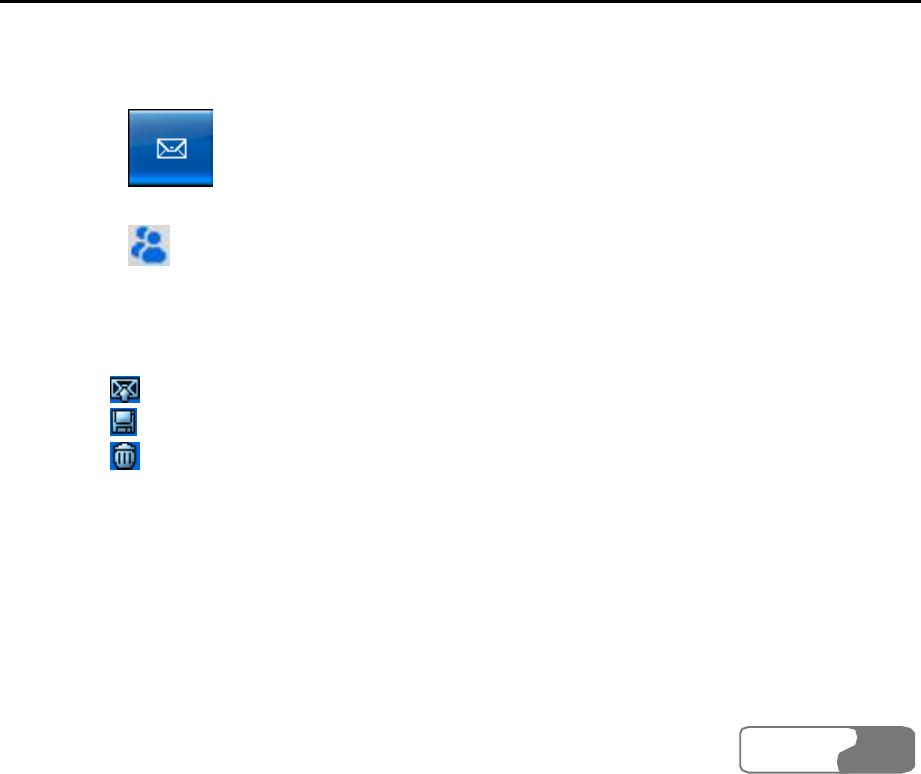
HUAWEI
17
8 Message Services
HUAWEI 3G Data Card supports the message services similar to mobile
phone, and has advantages such as large storage capacity and easy
manageability.
You can send and receive messages, save phone numbers to Phone Book,
and import messages from SIM/USIM cards to your laptop. You can also
perform operations such as message alert setting and advanced message
setting.
Write Messages
You can create messages in the write interface. After creating a message, you
can send it or save it in Draft.
1. Click to display the Message interface.
2. Select the Write tab page.
3. Click and select one or more contacts, or enter phone numbers in
the entry box directly.
4. Enter the message content in the edit area.
5. After editing the message, you can:
l Click to send the message.
l Click to save the message in Draft.
l Click to clear the entered phone number and message content.
Note
l No matter whether a message is sent successfully or not, the
message content is automatically saved in Outbox.
l You can send messages to a maximum of 20 phone numbers each
time. The phone numbers should be separated by semicolons.
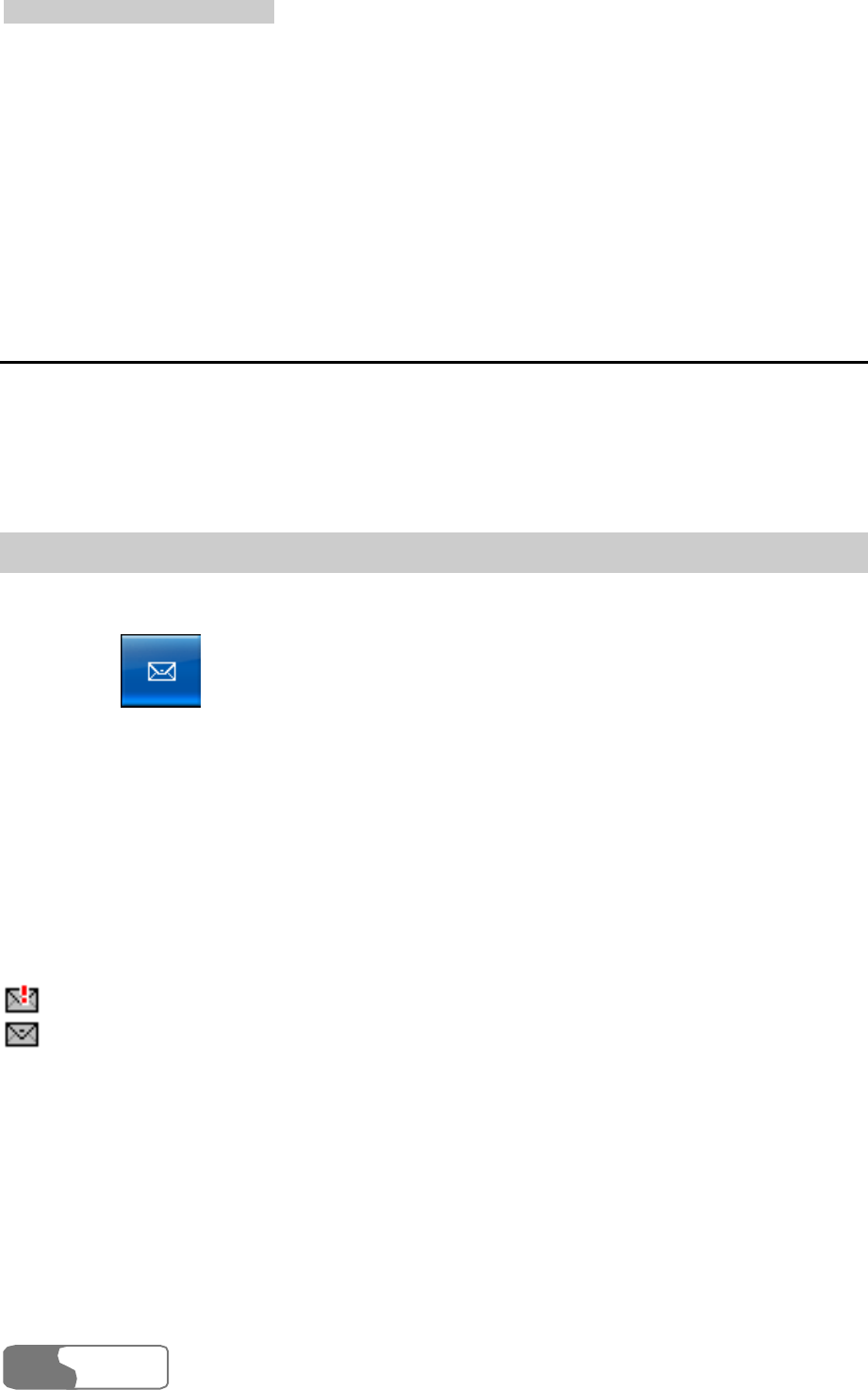
8
Message Services
HUAWEI
18
l You can edit the message content within 500 English characters
each time.
l Each message can hold a maximum of 160 English characters each
time. If the message content exceeds the maximum size for one message, the
content will be separated into multiple messages for sending.
Outbox
Outbox is used to save the sent messages, including the messages sent
successfully and unsuccessfully. In Outbox, you can check whether a
message is sent successfully, and perform the following operations:
View Messages
You can view the content and the status of messages in Outbox.
1. Click to display the Message interface.
2. Select the Outbox tab page to open Outbox.
3. Click Local or SIM/USIM to display the message list in local or
SIM/USIM card.
4. Double-click a message and view its specific information in the preview
area under the message list.
Note
l There are two icons in Outbox.
: Sending messages failed.
: Sending messages succeeded.
l You can show or hide the message preview area by
double-clicking a message record.
l When the message list in SIM/USIM card is displayed, you can
reread the messages in SIM/USIM card by pressing F5.
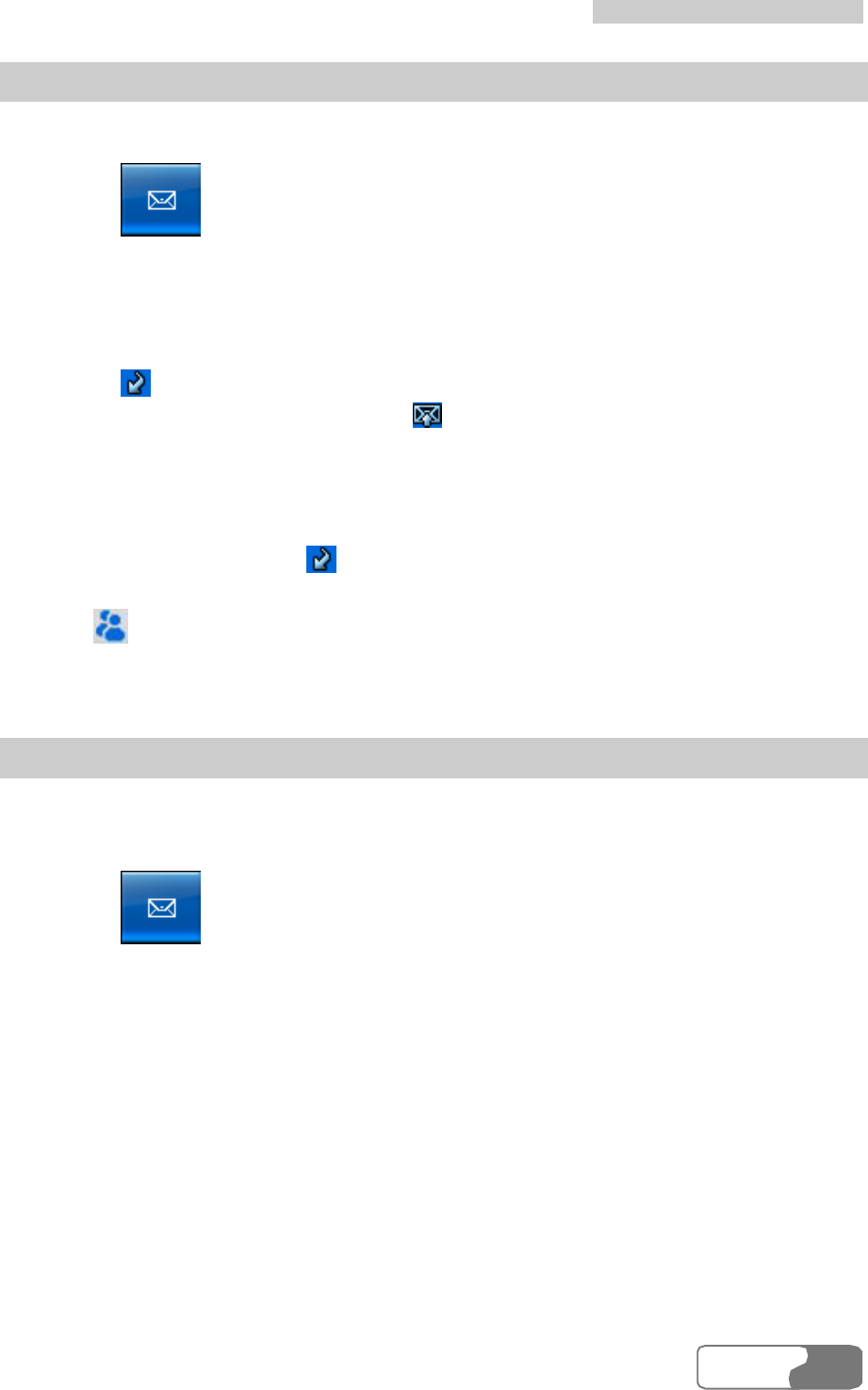
8
Message Services
HUAWEI
19
Send Messages
You can select one or more messages from Outbox to reply to them.
1. Click to display the Message interface.
2. Select the Outbox tab page to open Outbox.
3. Click Local or SIM/USIM to display the message list in local or
SIM/USIM card.
4. Select one or more messages in the list box which you want to reply to.
5. Click to display the Write interface.
6. After editing the message, click to send it.
Note
l You can reply to several messages at one time.
l When you click , the Data Card Management automatically
extracts your selected phone numbers and displays them in the entry box
behind .
Resend Messages
You can resend the important messages or the messages that were not
delivered successfully.
1. Click to display the Message interface.
2. Select the Outbox tab page to open Outbox.
3. Click Local or SIM/USIM to display the message list in Local or
SIM/USIM card.
4. Select a message you want to resend in the list box.
5. Right-click it and select Resend in the shortcut menu.
Note
You can only resend a message at one time.
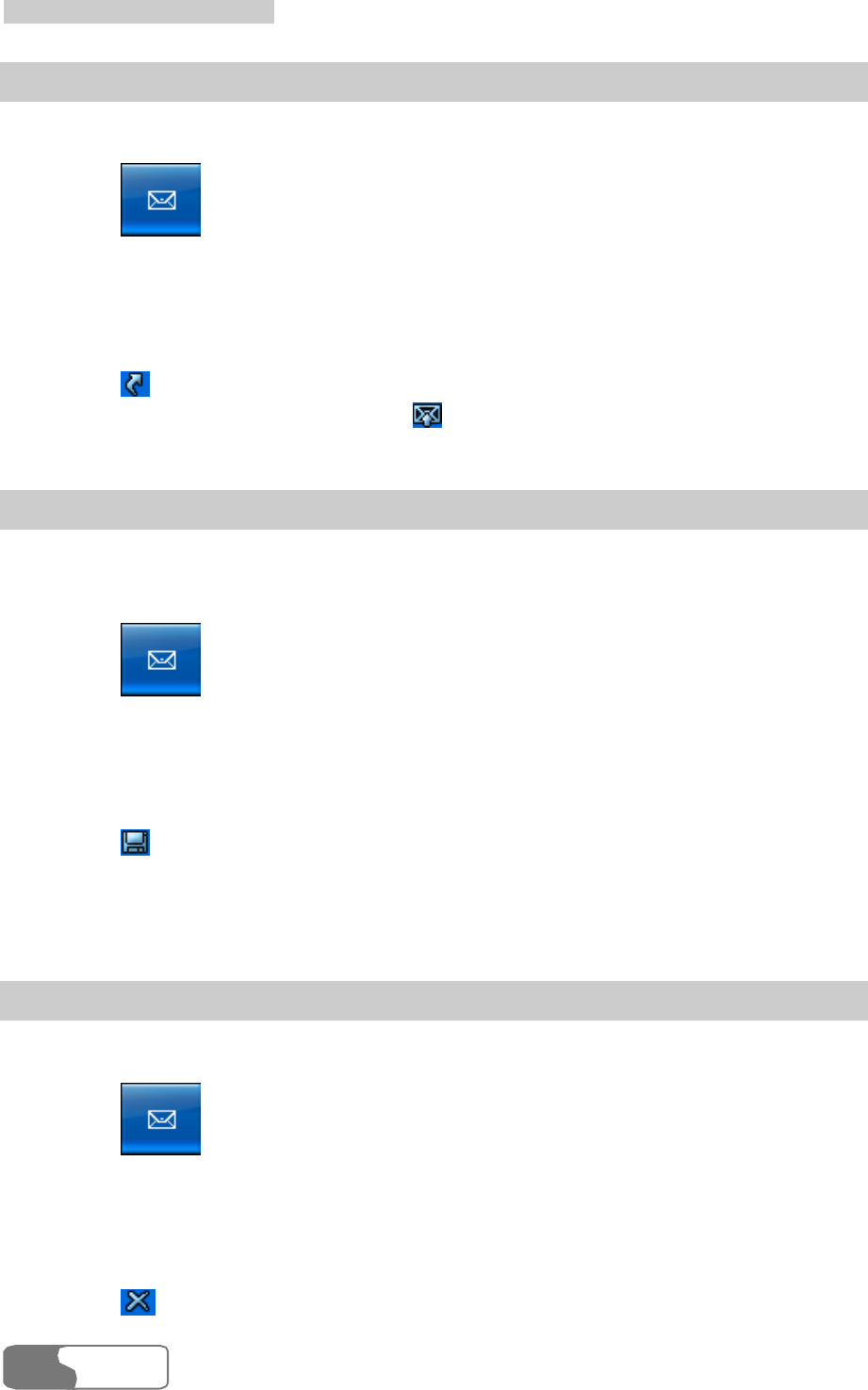
8
Message Services
HUAWEI
20
Forward Messages
You can select a message in Outbox to forward it.
1. Click to display the Message interface.
2. Select the Outbox tab page to open Outbox.
3. Click Local or SIM/USIM to display the message list in local or
SIM/USIM card.
4. Click a message in the list box.
5. Click to display the Write interface.
6. After editing the message, click to forward it.
Save Phone Numbers
You can select a message from Outbox and save the corresponding phone
number to Phone Book.
1. Click to display the Message interface.
2. Select the Outbox tab page to open Outbox.
3. Click Local or SIM/USIM to display the message list in local or
SIM/USIM card.
4. Click a message in the list box.
5. Click to display the New Contact Detail dialog box.
6. Enter the correct information and click OK to save the phone number of
the contact.
Delete Messages
You can delete the unwanted messages in Outbox.
1. Click to display the Message interface.
2. Select the Outbox tab page to open Outbox.
3. Click Local or SIM/USIM to display the message list in local or
SIM/USIM card.
4. Select one or more messages in the list box.
5. Click to display the Prompt dialog box.
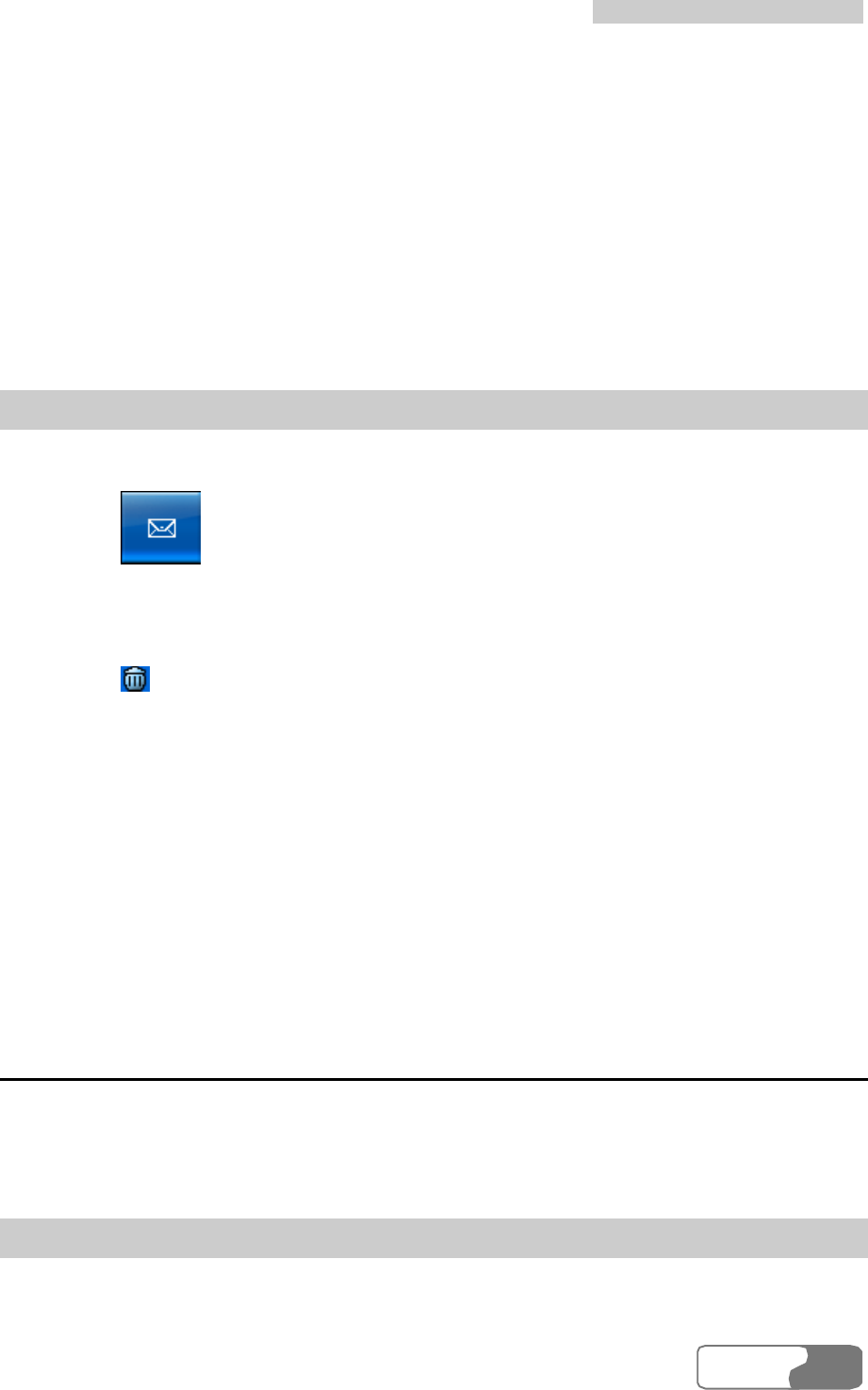
8
Message Services
HUAWEI
21
6. Click OK to remove the messages to Trash.
Note
l When you delete a message saved in the SIM/USIM card, the
message is permanently deleted and not removed to Trash.
l When you delete a message saved in Local, the message is directly
removed to Trash.
Clear Messages
You can clear all the messages in Outbox.
1. Click to display the Message interface.
2. Select the Outbox tab page to open Outbox.
3. Click Local or SIM/USIM to display the message list in local or
SIM/USIM card.
4. Click to display the Prompt dialog box.
5. Click OK to remove all the messages to Trash.
Note
l When you clear all the messages saved in the SIM/USIM card, the
messages are permanently deleted and not removed to Trash.
l When you clear all the messages saved in Local, the messages are
directly removed to Trash.
Inbox
Inbox is used to save your received messages. In Inbox, you can perform the
following operations:
View Messages
You can view the content and status of messages in Inbox.
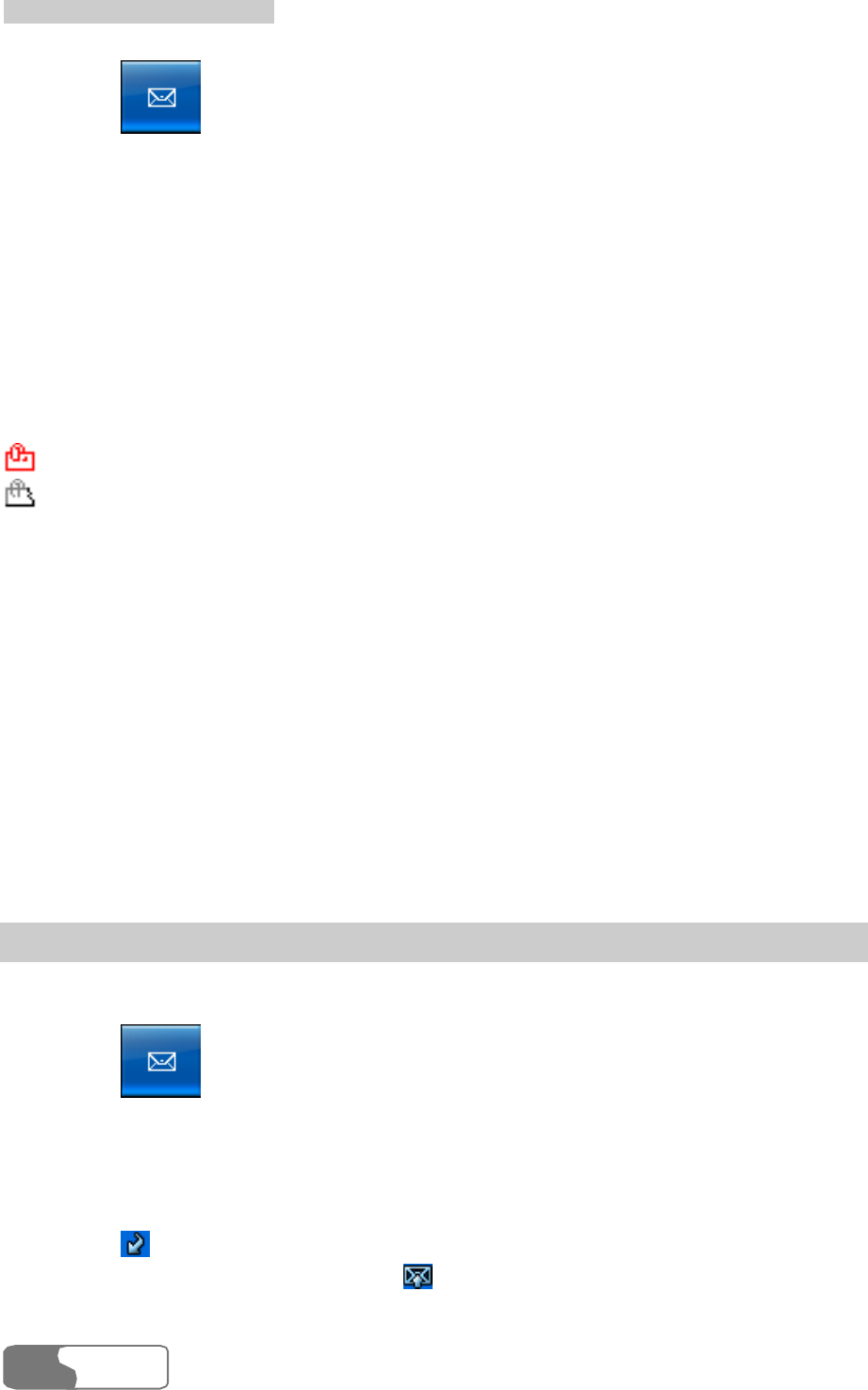
8
Message Services
HUAWEI
22
1. Click to display the Message interface.
2. Select the Inbox tab page to open Inbox.
3. Click Local or SIM/USIM to display the message list in local or
SIM/USIM card.
4. Select a message in the list box.
5. Double-click a message and view its specific information in the preview
area under the message list.
Note
l There are two icons in Inbox.
: Unread messages.
: Read messages.
l You can show or hide the message preview area by
double-clicking a message.
l If the preview area is not showed, double-click an unread message,
the status of the message record changes into read status.
l If the preview area has been showed, click an unread message, the
status of the message record changes into read status.
l If SIM/USIM card is full, the new incoming messages can not be
received, and the Prompt dialog box is displayed.
l When the message list in SIM/USIM card is displayed, you can
reread the messages in SIM/USIM card by pressing F5.
Reply Messages
You can reply to messages saved in Inbox.
1. Click to display the Message interface.
2. Select the Inbox tab page to open Inbox.
3. Click Local or SIM/USIM to display the message list in local or
SIM/USIM card.
4. Select a message in the list box.
5. Click to display the Write interface.
6. After creating a message, click to send it.
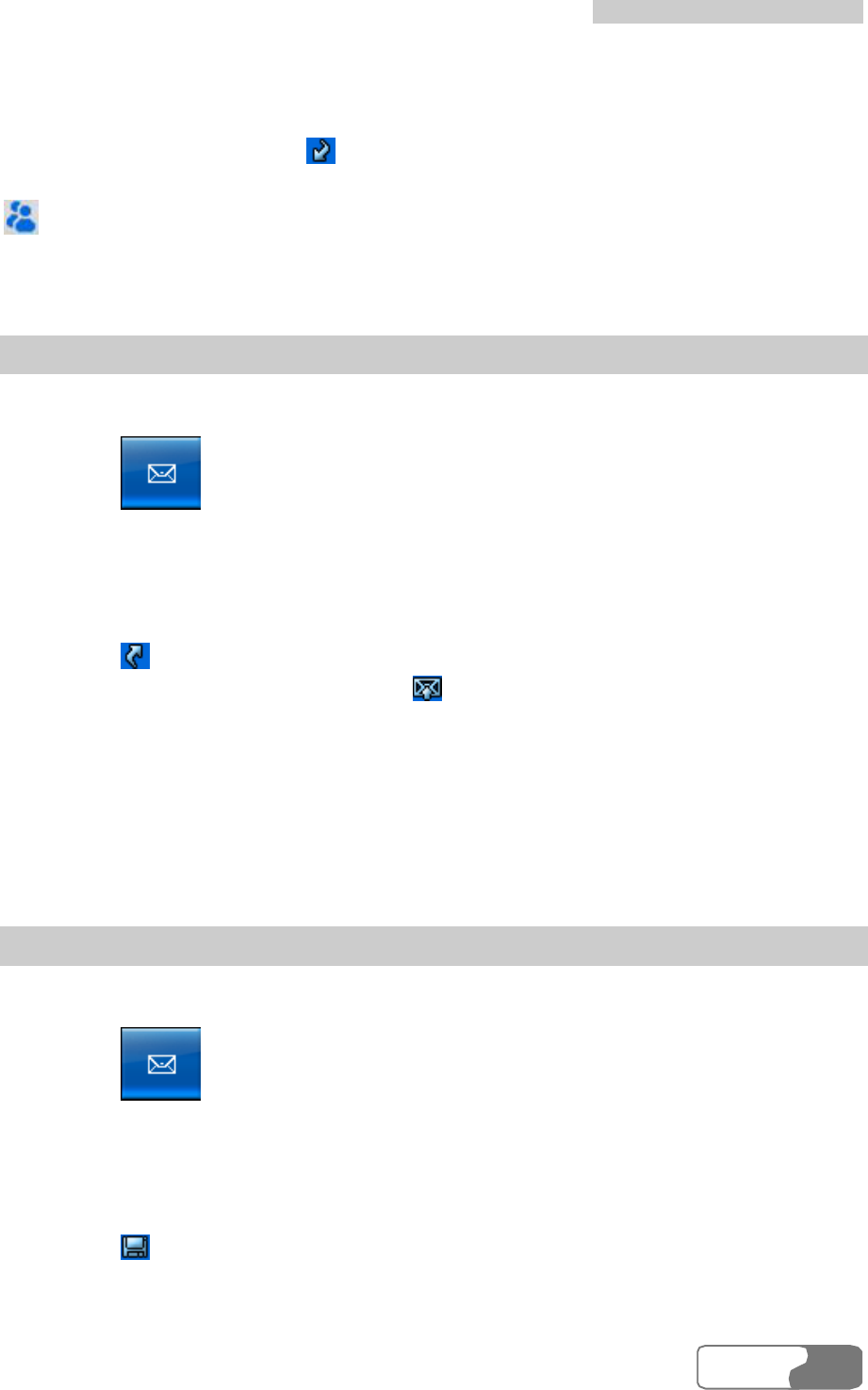
8
Message Services
HUAWEI
23
Note
l You can only reply to a message each time.
l When you click , the Data Card Management automatically
extracts your selected phone number and displays it in the entry box behind
.
Forward Messages
You can forward messages saved in Inbox.
1. Click to display the Message interface.
2. Select the Inbox tab page to open Inbox.
3. Click Local or SIM/USIM to display the message list in local or
SIM/USIM card.
4. Select a message in the list box.
5. Click to display the Write interface.
6. After editing the message, click to send it.
Note
You can only forward one message to one or more contacts at a time.
Save Phone Numbers
You can select phone numbers of messages, and save them to Phone Book.
1. Click to display the Message interface.
2. Select the Inbox tab page to open Inbox.
3. Click Local or SIM/USIM to display the message list in local or
SIM/USIM card.
4. Select a message in the list box.
5. Click to display the New Contact Detail dialog box.
6. Enter the correct information and click OK to save the phone number of
the contact.
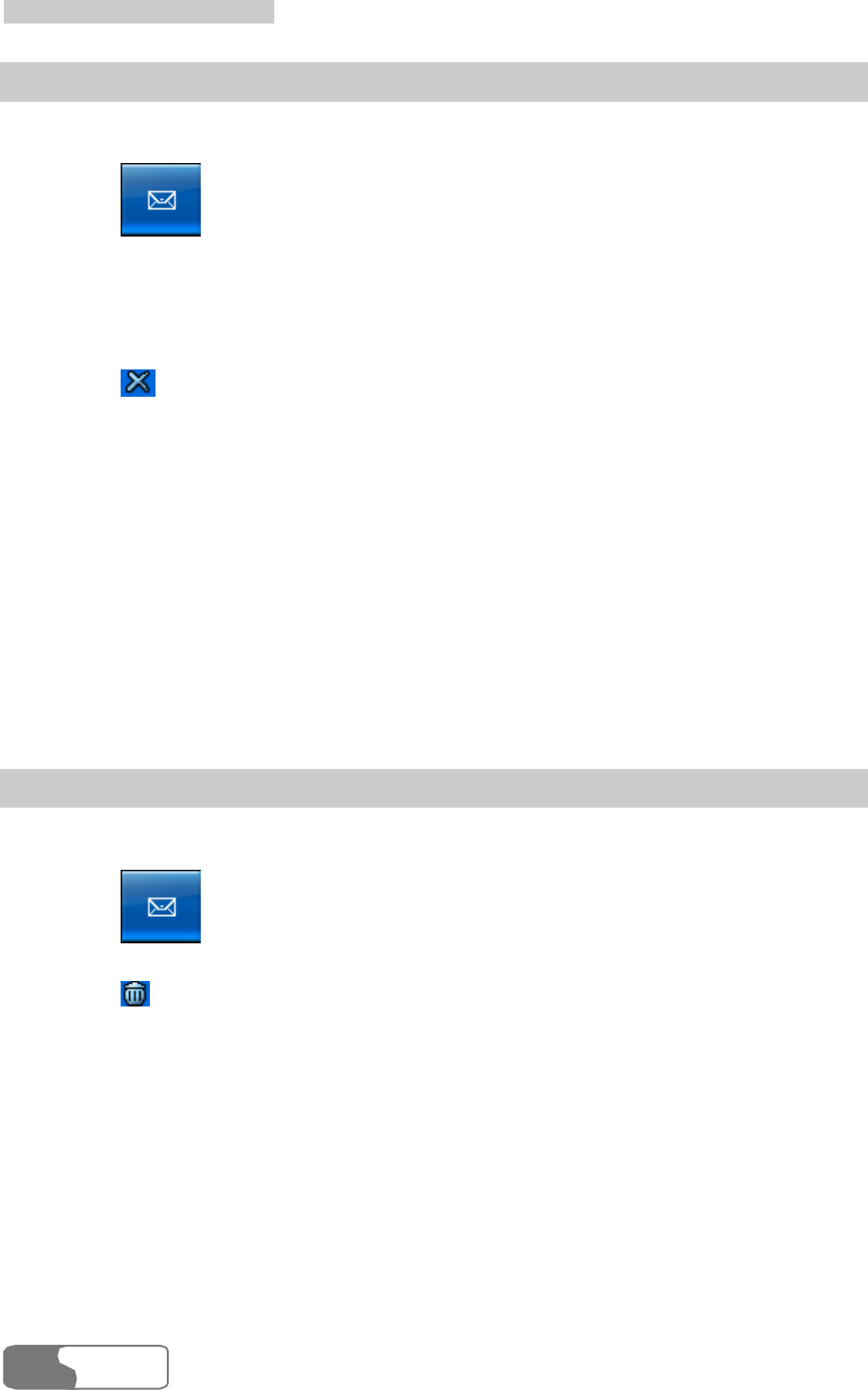
8
Message Services
HUAWEI
24
Delete Messages
You can delete the unwanted messages in Inbox.
1. Click to display the Message interface.
2. Click the Inbox tab page to open Inbox.
3. Click Local or SIM/USIM to display the message list in Local or
SIM/USIM card.
4. Select one or more messages to be deleted in the list box.
5. Click , or right-click the records to select Delete in the shortcut menu
to display the Prompt dialog box.
6. Click OK to remove the messages to Trash.
Note
l When you delete a message saved in the SIM/USIM card, the
message is permanently deleted and not removed to Trash.
l When you delete a message saved in Local, the message is directly
removed to Trash.
Clear Messages
You can clear all the messages in Inbox.
1. Click to display the Message interface.
2. Select the Inbox tab page to open Inbox.
3. Click to display the Prompt dialog box.
4. Click OK to remove all the messages to Trash.
Note
l When you clear all the messages saved in the SIM/USIM card, the
messages are permanently deleted and not removed to Trash.
l When you clear all the messages saved in Local, the messages are
directly deleted and removed to Trash.
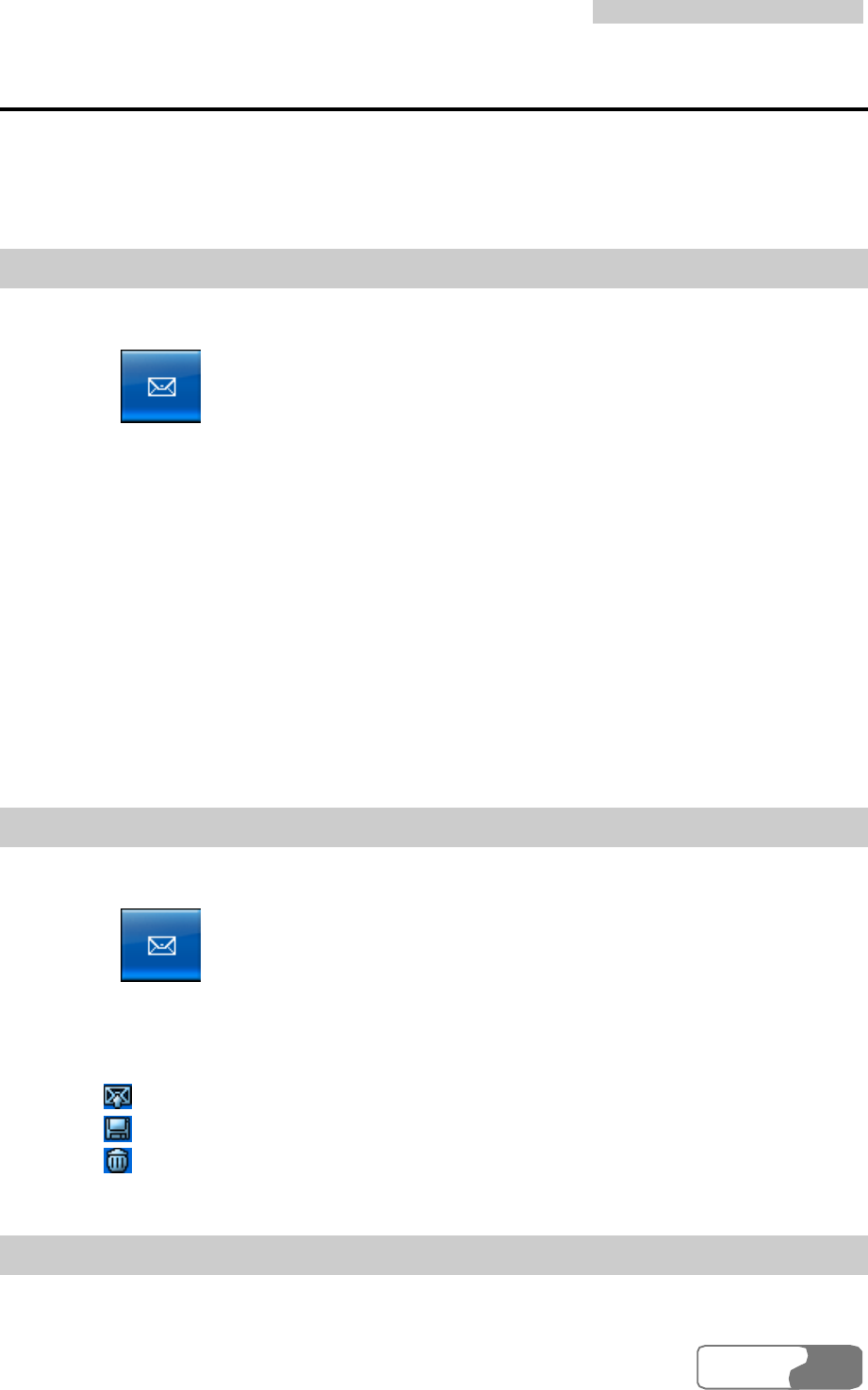
8
Message Services
HUAWEI
25
Draft
You can save the draft of messages in Draft, and perform the following
operations:
View Messages
You can view the messages in Draft.
1. Click to display the Message interface.
2. Select the Draft tab page to open Draft.
3. Right-click a message and select Display Preview in the shortcut menu.
4. Select a message in the list box.
5. View the message in the preview area.
Note
If you want to hide the preview area, you can right-click a message and
select Hide Preview in the shortcut menu.
Edit Messages
You can edit the messages in Draft.
1. Click to display the Message interface.
2. Select the Draft tab page to open Draft.
3. Double-click a message to display the Write interface.
4. After editing the content, you can perform the following operations:
l Click to send the message.
l Click to save the message in Draft.
l Click to clear the entered phone number and message content.
Delete Messages
You can delete the unwanted messages in Draft.
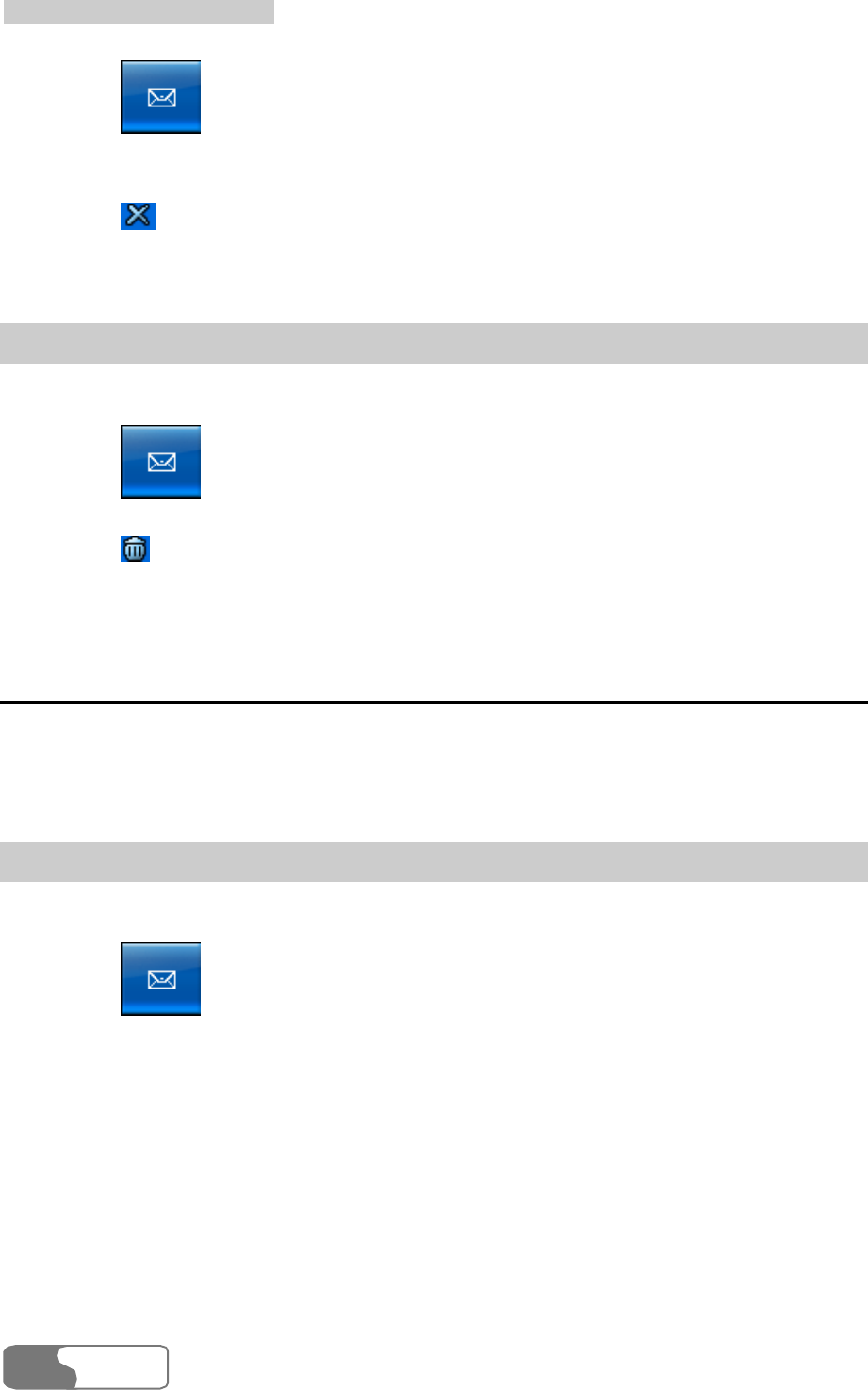
8
Message Services
HUAWEI
26
1. Click to display the Message interface.
2. Select the Draft tab page to open Draft.
3. Select one or more messages to be deleted in the list box.
4. Click to display the Prompt dialog box.
5. Click OK to remove the messages to Trash.
Clear Messages
You can clear all the messages in Draft.
1. Click to display the Message interface.
2. Select the Draft tab page to open Draft.
3. Click to display the Prompt dialog box.
4. Click OK to remove all the messages to Trash.
Trash
Trash is used to save the messages deleted from Local, not from SIM/USIM
cards. In Trash, you can perform the following operations:
View Messages
You can view the deleted messages in Trash.
1. Click to display the Message interface.
2. Select the Trash tab page to open Trash.
3. Double-click a message record and view its content in the preview area
under the message list.
Note
You can show or hide the message preview area by double-clicking a
message record.
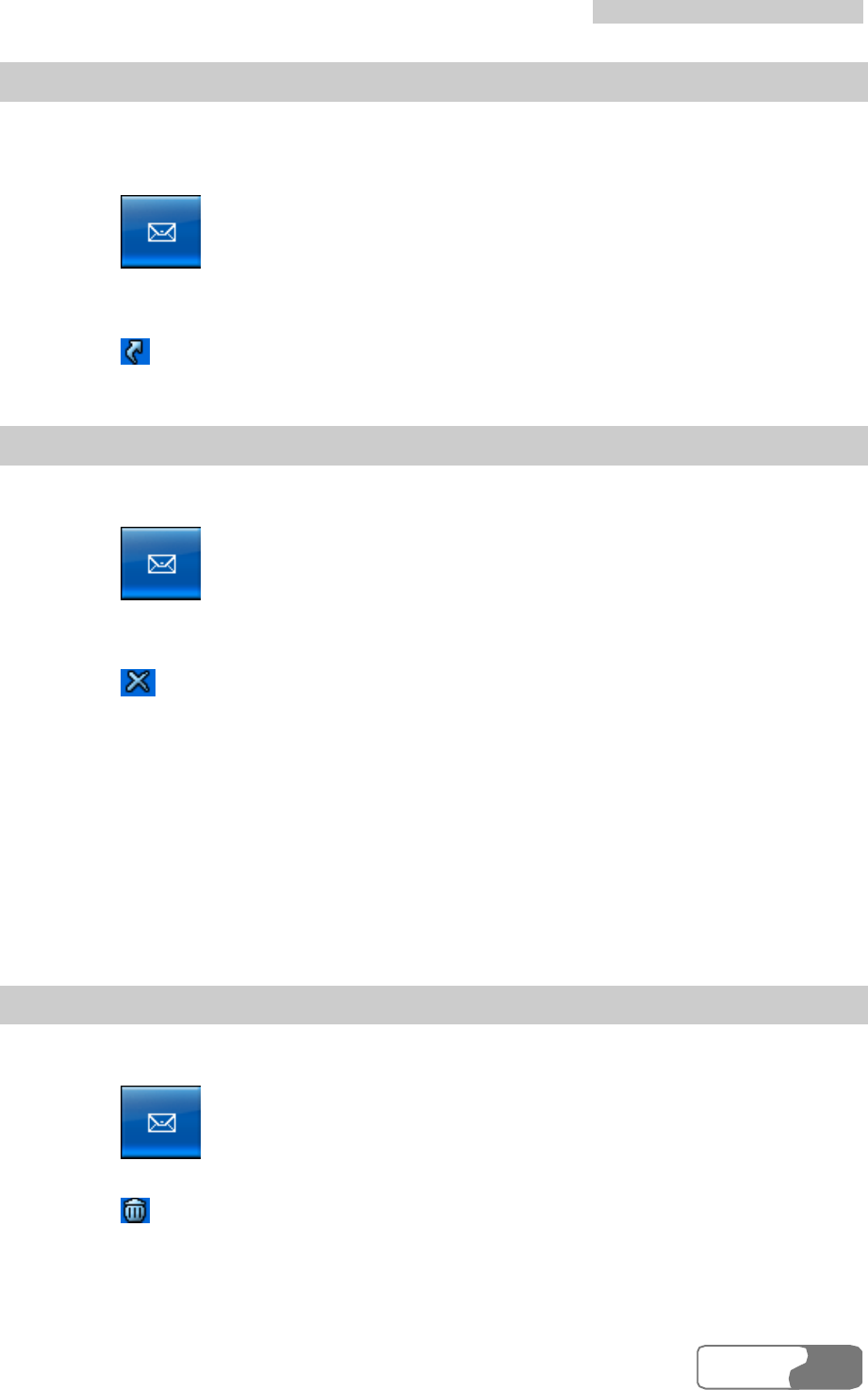
8
Message Services
HUAWEI
27
Recover Messages
You can recover the messages in Trash to the saving places where they were
deleted before.
1. Click to display the Message interface.
2. Select the Trash tab page to open Trash.
3. Select a message in the list box.
4. Click to recover it.
Delete Messages
You can delete the unwanted messages in Trash.
1. Click to display the Message interface.
2. Select the Trash tab page to open Trash.
3. Select a message to be deleted in the list box.
4. Click to display the Prompt dialog box.
5. Click OK to delete the messages in Trash permanently.
Note
When you delete the messages in Trash, the messages are deleted
permanently.
Clear Messages
You can clear all the messages in Trash.
1. Click to display the Message interface.
2. Select the Trash tab page to open Trash.
3. Click to display the Prompt dialog box.
4. Click OK to clear all the messages in Trash permanently.
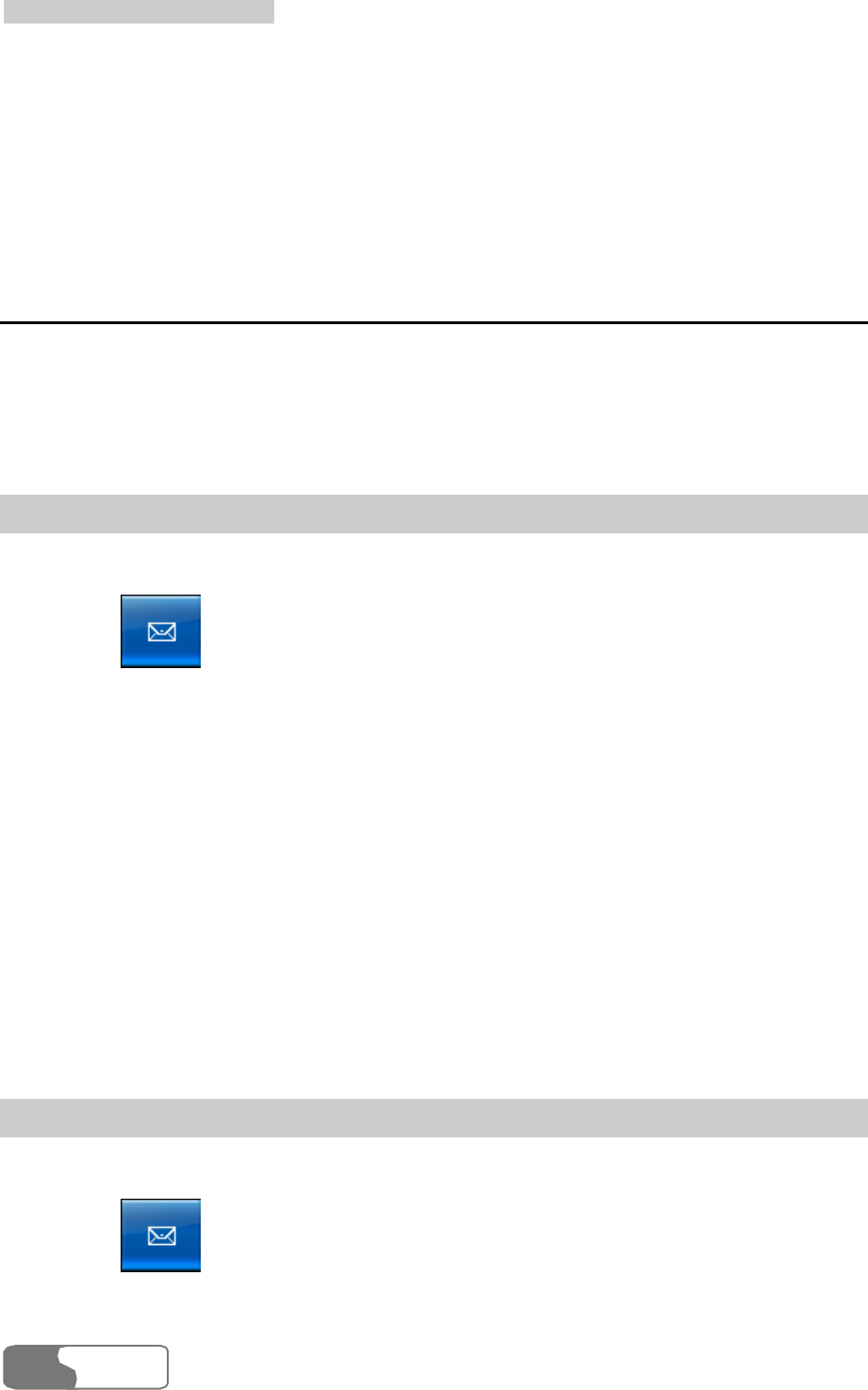
8
Message Services
HUAWEI
28
Note
When you clear all the messages in Trash, the messages are deleted
permanently.
Report
If you activate the message report, refer to Advanced Message Settings on
page 41, you can receive return notifications after sending messages. In
Report, you can perform the following operations:
View Messages
You can view the results for sending messages in Report.
1. Click to display the Message interface.
2. Select the Report tab page to open Report.
3. Click Local or SIM/USIM to display the message list in local or
SIM/USIM card.
4. Double-click a message record and view its specific information in the
preview area under the message list.
Note
l You can show or hide the preview area by double-clicking a
message.
l When the message list in SIM/USIM card is displayed, you can
reread the messages in SIM/USIM card by pressing F5.
Delete Messages
You can delete the unwanted messages in Report.
1. Click to display the Message interface.
2. Select the Report tab page to open Report.
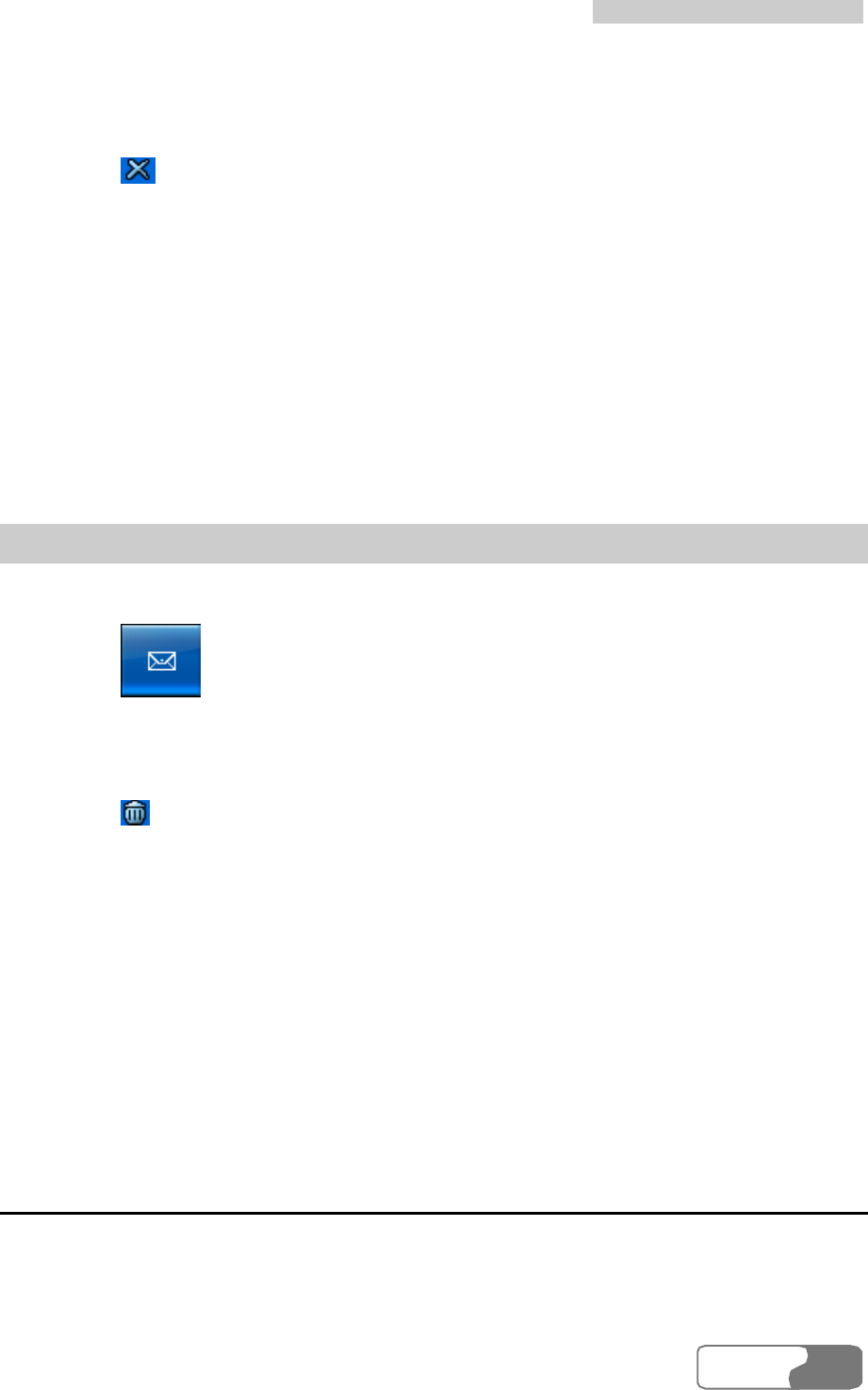
8
Message Services
HUAWEI
29
3. Click Local or SIM/USIM to display the message list in local or
SIM/USIM card.
4. Select one or more messages in the list box.
5. Click to display the Prompt dialog box.
6. Click OK to remove the messages to Trash.
Note
l When you delete the messages saved in the SIM/USIM card, the
messages are permanently deleted and not removed to Trash.
l When you delete the messages saved in Local, the messages are
directly removed to Trash.
Clear Messages
You can clear all the messages in Report.
1. Click to display the message interface.
2. Select the Report tab page to open Report.
3. Click Local or SIM/USIM to display the message list in local or
SIM/USIM card.
4. Click to display the Prompt dialog box.
5. Click OK to remove all the messages to Trash.
Note
l When you clear all the messages saved in the SIM/USIM card, the
messages are permanently deleted and not removed to Trash.
l When you clear all the messages saved in Local, the messages are
directly removed to Trash.
Import Messages
You can import Outbox and Inbox messages from SIM/USIM cards to your
laptop.

8
Message Services
HUAWEI
30
1. Click to display the Message interface.
2. Select the Inbox or Outbox tab page.
3. Select SIM/USIM to display the message list of SIM/USIM card.
4. Select a few message records in the list.
5. Right-click the records and perform the following operations in the
shortcut menu:
l Select Import to import the selected message to Local.
l Select Import All to import all the messages in SIM/USIM list to Local.
6. Click OK in the Prompt dialog box.
Note
l Press and hold Ctrl and then click the messages to select one or
more messages, or press Ctrl + A to select all the messages.
l After the messages in the SIM/USIM card are imported, the
messages will be deleted from the SIM/USIM card.
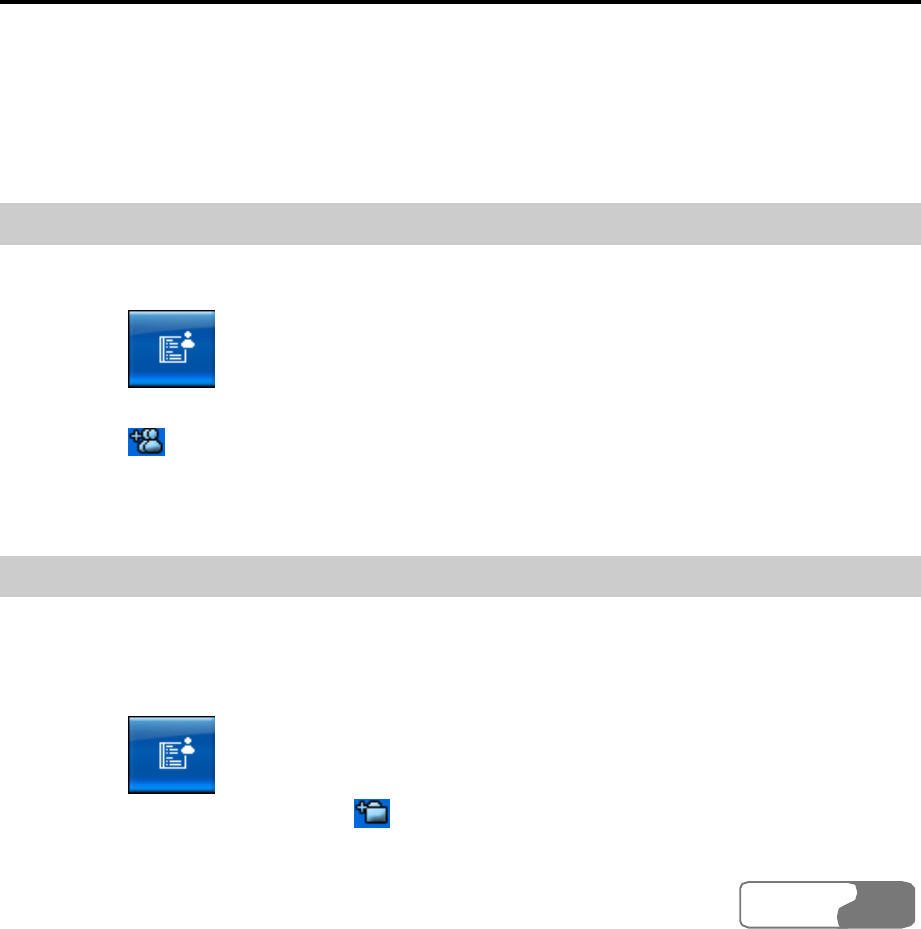
HUAWEI
31
9 Phone Book Management
The HUAWEI 3G Data Card supports to manage the information of contacts
and groups, export/import the contacts information, and send messages in
phone book. You can perform the following management:
Information Management
You can manage the information in Local and SIM/USIM Card. You can
also directly send messages in Phone Book.
In Phone Book, you can perform the following operations:
Create Groups
You can add new groups to manage contacts by class.
1. Click to display the Phone Book interface.
2. Select Local in the left group tree.
3. Click , and a new group is displayed.
4. Name the group as desired.
Modify Groups
You can modify group names and change members in groups.
Rename Group Names
1. Click to display the Phone Book interface.
2. Select a group, and click .
3. Rename the group in the text box.
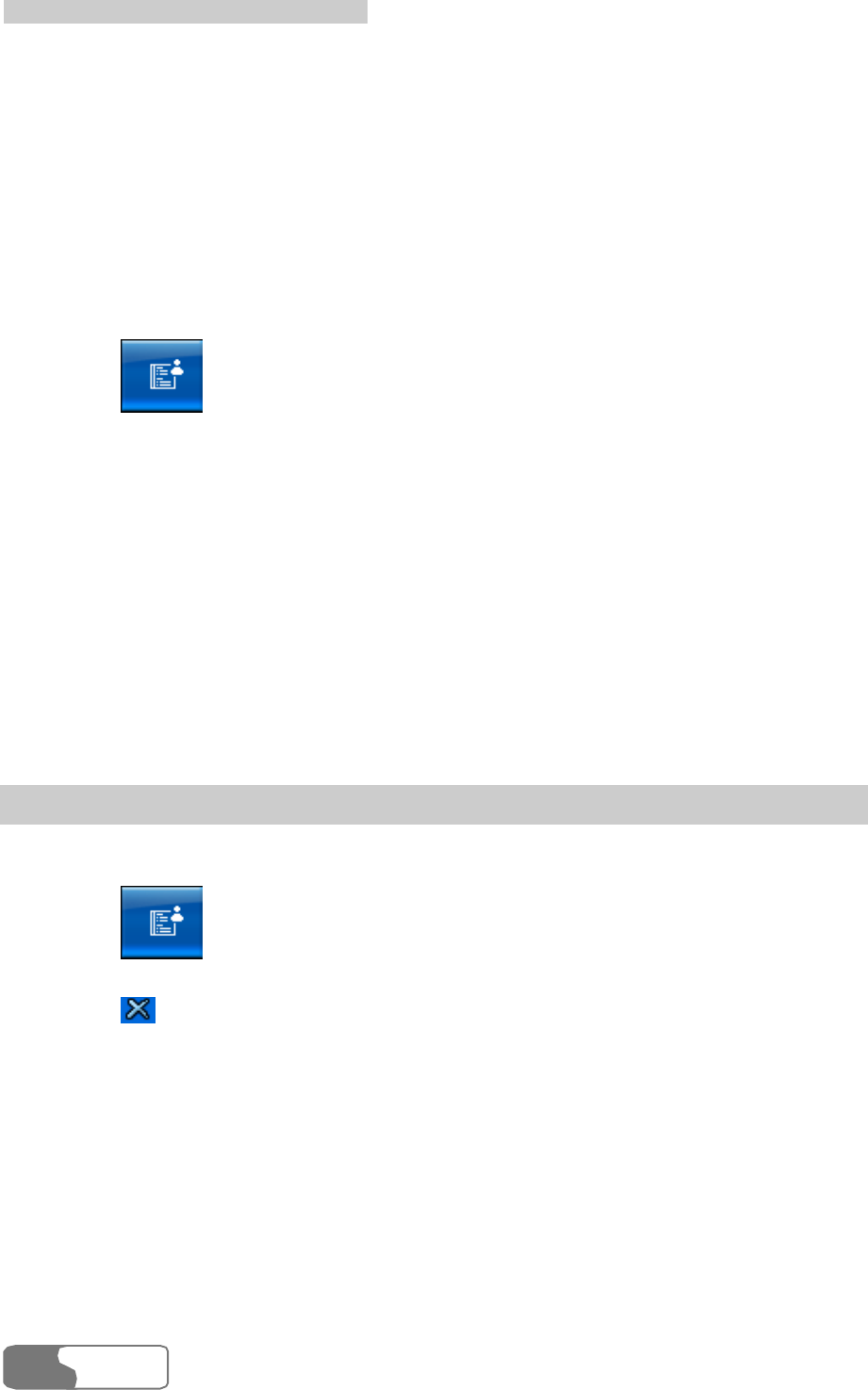
9
Phone Book Ma
nagement
HUAWEI
32
Note
l The group name can not be null.
l The group name can not be duplicated.
l You can not rename these three default groups: Local, No Group
and SIM/USIM Card.
Rearrange Group Members
1. Click to display the Phone Book interface.
2. Click and hold single or multiple contacts in a group, and drag it or them
to another group, so you can remove the contacts in this group to another
group.
Note
l You can delete contacts to change the group members.
l If there is no SIM/USIM Card in the left group tree, you can
right-click the group tree, and select Show SIM/USIM in the shortcut menu.
Delete Groups
You can delete the unwanted groups.
1. Click to display the Phone Book interface.
2. Select a group to be deleted.
3. Click under the left group tree and the Prompt dialog box is
displayed.
4. Click OK to delete the group.
Note
l After a group is deleted, all contacts in this group are removed to
No Group.
l You can not delete these three default groups: Local, No Group
and SIM/USIM Card.
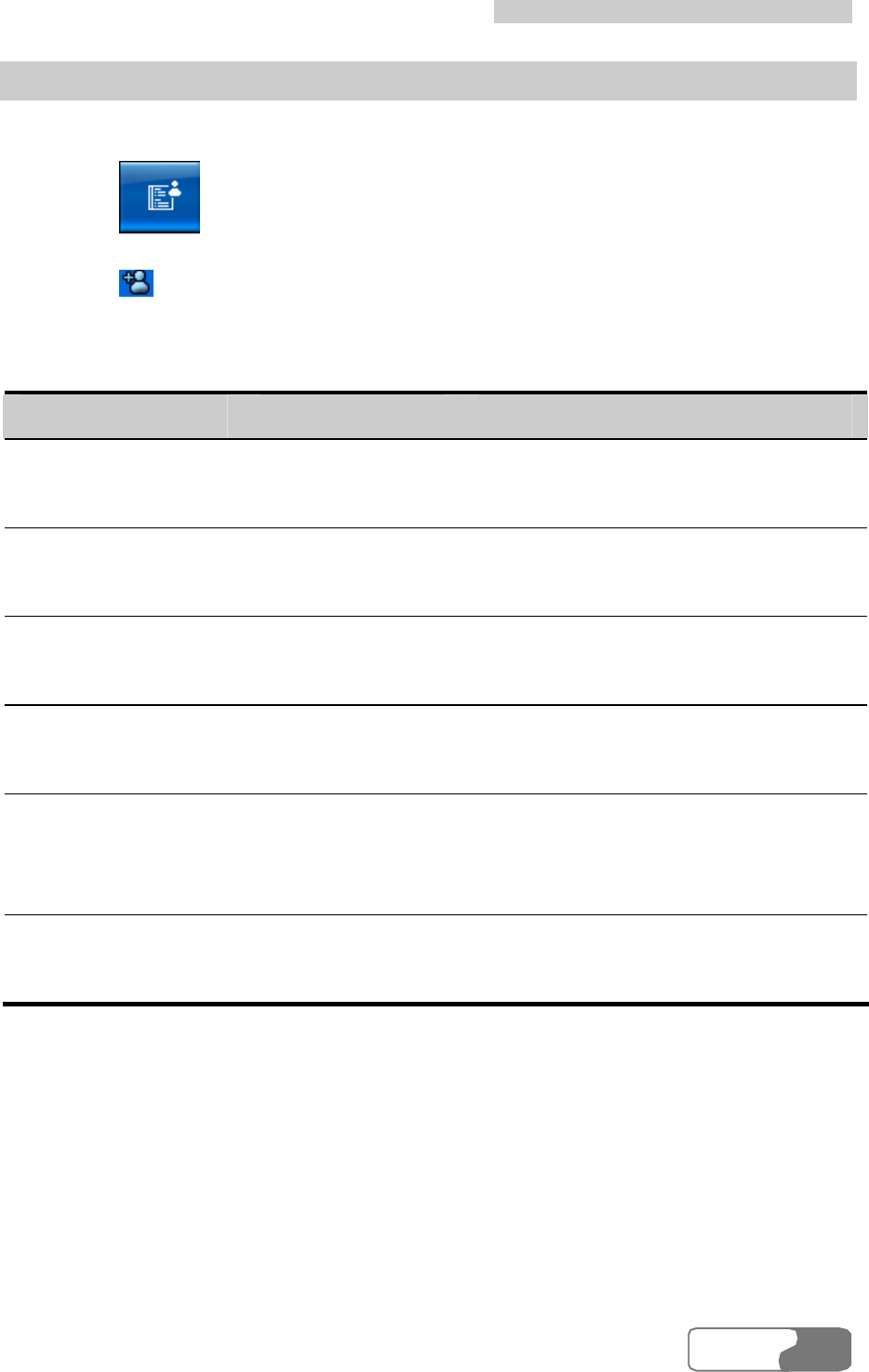
9
Phone Book Management
HUAWEI
33
Create Contacts
You can add the information of new contacts.
1. Click to display the Phone Book interface.
2. Select a group for the new contact in Local.
3. Click to display the New Contact Detail dialog box.
4. Enter the information of the contact in the dialog box, click OK.
All the input parameters and their descriptions are listed below:
Parameter Value range Description
Name Any character. The name or pet name of the
contact.
Mobile Phone Digits, "+", "#",
and "*". The mobile phone number of the
contact.
Home Phone Digits, "+", "#",
and "*". The home phone number of the
contact.
Business Phone Digits, "+","#",
and "*". The office phone number of the
contact.
E-mail Correct and
valid E-mail
address.
The E-mail of the contact.
Notes Any character. The supplementary descriptions
about the contact.
Note
l You can export the information of the new contacts to SIM/USIM
card.
l The contact name can be null, but it is not recommended for the
sake of your management.
l All the information of contact can not be null at the same time and
can not contain only spaces or symbols of word wrap.
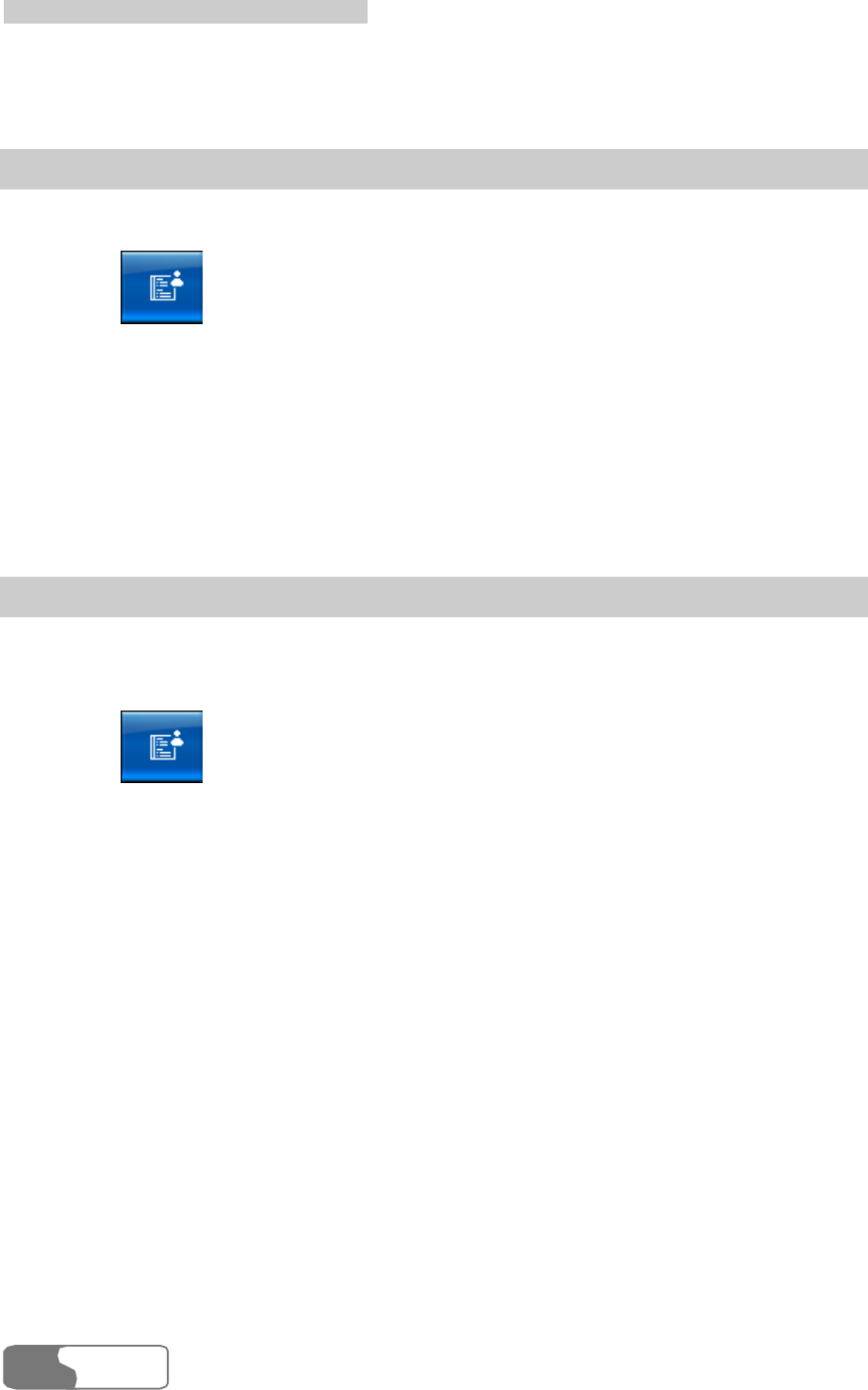
9
Phone Book Management
HUAWEI
34
l You can not create new contacts directly in the SIM/USIM card.
View Contact Details
You can view the contact information in the Data Card Management quickly.
1. Click to display the Phone Book interface.
2. Select a contact record in the list box.
3. There are two ways to display the Contact Detail dialog box:
l Double-click the contact record.
l Right-click the contact record and then select the Details in the shortcut
menu.
4. View the related information.
Modify Contacts
You can modify the contact information in the Data Card Management
quickly.
1. Click to display the Phone Book interface.
2. Double-click the contact record to display the Contact Detail dialog
box.
3. Modify the related information.
4. Click OK to save the modified information.
Note
l For details of modifying the groups of contacts in Local, refer to
Modify Groups.
l You must show SIM/USIM card in group tree successfully before
modifying the contact information in phone book of SIM/USIM card.
l When modifying the contact information in phone book of
SIM/USIM card, the name and phone number in SIM/USIM card correspond
to the name and mobile phone in the Contact Detail dialog box.
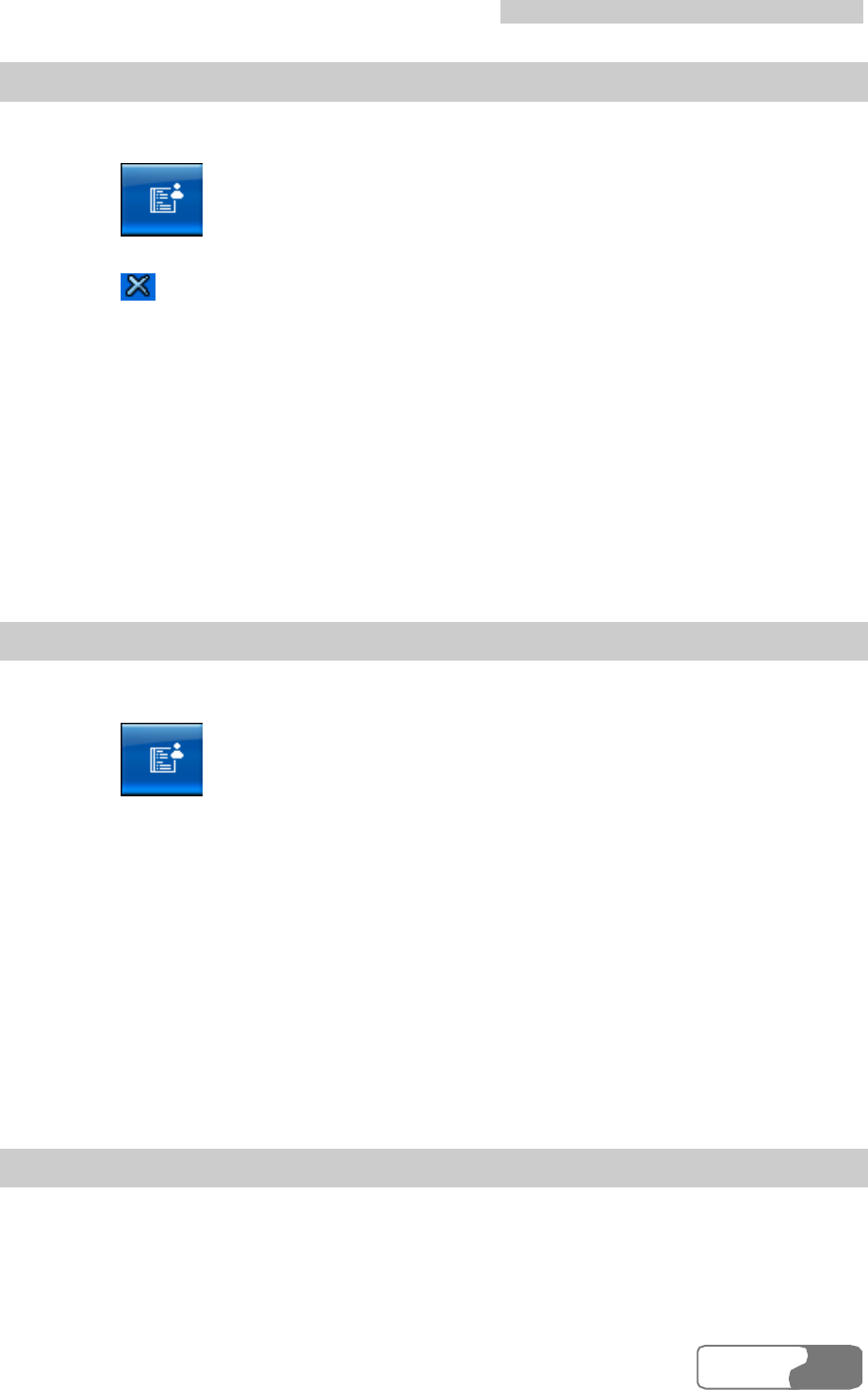
9
Phone Book Management
HUAWEI
35
Delete Contacts
You can delete the information of unwanted contacts.
1. Click to display the Phone Book interface.
2. Select the single or multiple contact records.
3. Click under the list box and the Prompt dialog box is displayed.
4. Click OK to delete the contacts information.
Note
You can press and hold Shift or Ctrl, and then click the contact records to
select multiple contact records. Press Ctrl + A to select all the contacts in a
group.
Search for Contacts
You can search for contact information by group.
1. Click to display the Phone Book interface.
2. Select a group.
3. Enter the similar information of contact name in the Search box.
Note
The list box automatically updates according to your entered content, and
displays the most matching contact information in the current group. If there
is no matching contact, no record is displayed in the list box.
Show SIM/USIM Card
You can display the SIM/USIM card in phone book to facilitate the
management of the phone book information.
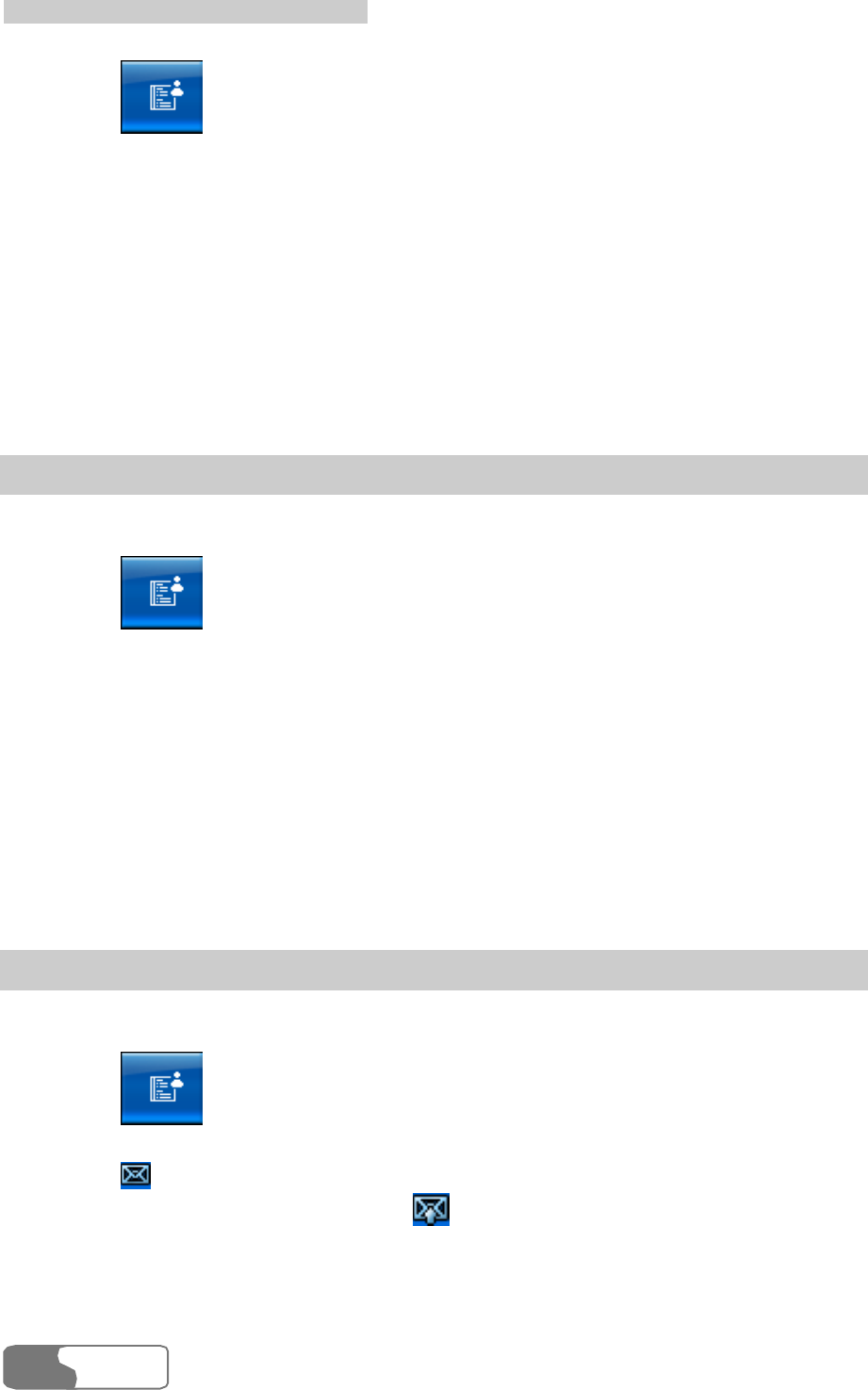
9
Phone Book Management
HUAWEI
36
1. Click to display the Phone Book interface.
2. Right-click the group tree and select Show SIM/USIM in the shortcut
menu.
Note
If reading SIM/USIM card fails, the SIM/USIM card group cannot be
displayed.
Hide SIM/USIM Card
You can hide a SIM/USIM card to shield the contact information in it.
1. Click to display the Phone Book interface.
2. Right-click the group tree and select Hide SIM/USIM in the shortcut
menu.
Note
You can hide SIM/USIM card only after you show SIM/USIM card in group
tree successfully.
Send Messages
You can select one or more contacts in the phone book to send message.
1. Click to display the Phone Book interface.
2. Select one or more contact records to send message in the list.
3. Click to display the Write interface.
4. After editing the message, click to send it.
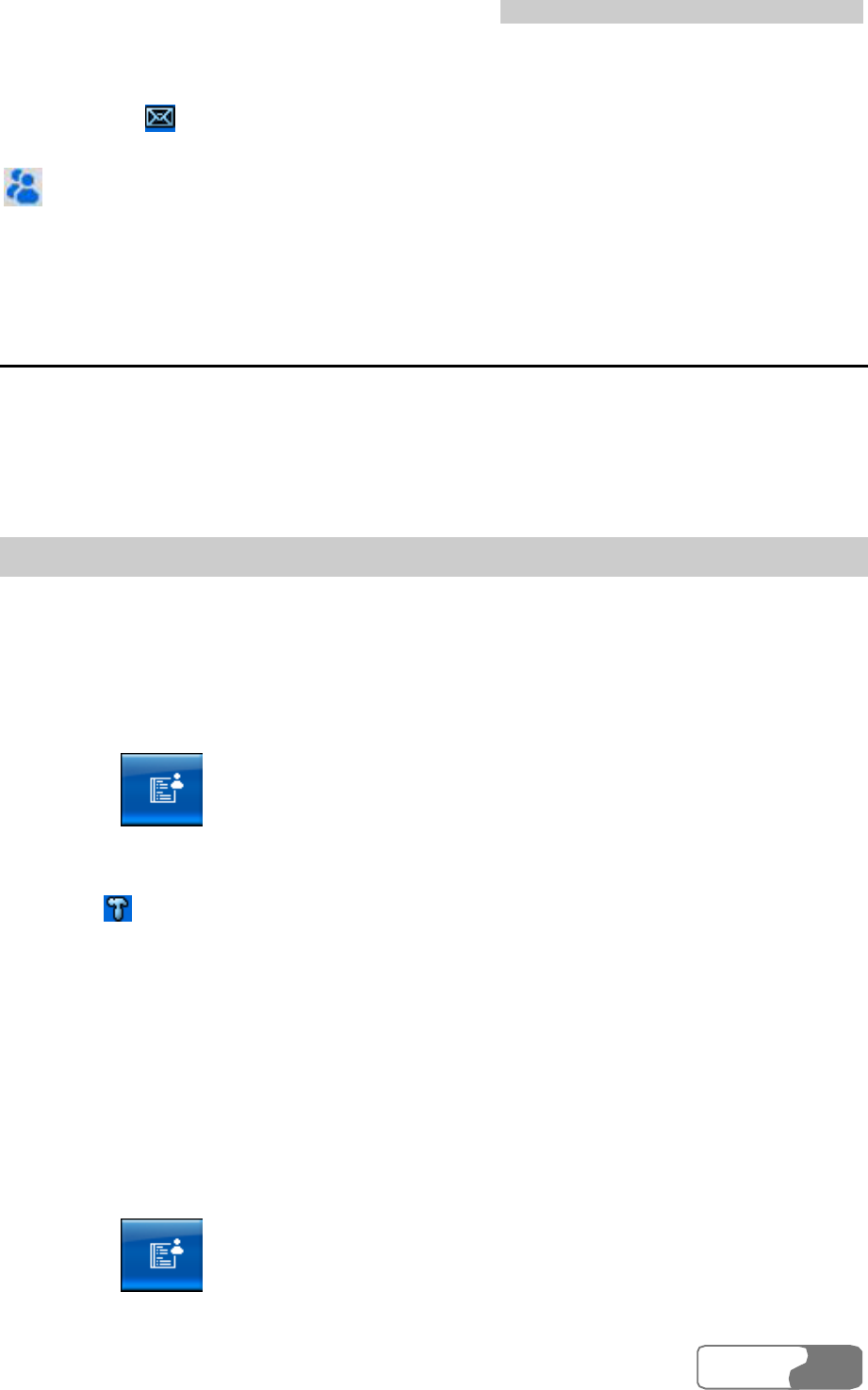
9
Phone Book Management
HUAWEI
37
Note
If you click , the Data Card Management automatically extracts your
selected mobile phone numbers and display them in the entry box behind
.
Export/Import Management
You can export and import the contact information in phone book to
facilitate the information management. In phone book, you can perform the
following operations:
Export from Phone Book
You can export the contact information from Local to the phone book in
SIM/USIM card or the *.csv and *.txt files, or export the contact information
from the phone book in SIM/USIM card to Local.
Export from Local to File
1. Click to display the Phone Book interface.
2. Click Local to display the contact list in Local.
3. There are two ways to export:
l Click to select Export all Contacts/To File... in the shortcut menu in
order to export all the contacts information.
l Right-click one or more contacts to select Export Select Contacts/To
File... in the shortcut menu in order to export the selected contacts
information.
4. In the Save As dialog box, select a directory and enter the file name.
5. Select a file format from *.csv and *.txt and click Save to export the
contact information to the specified file.
Export from Local to SIM/USIM Card
1. Click to display the Phone Book interface.
2. Click Local to display the contact list in Local.
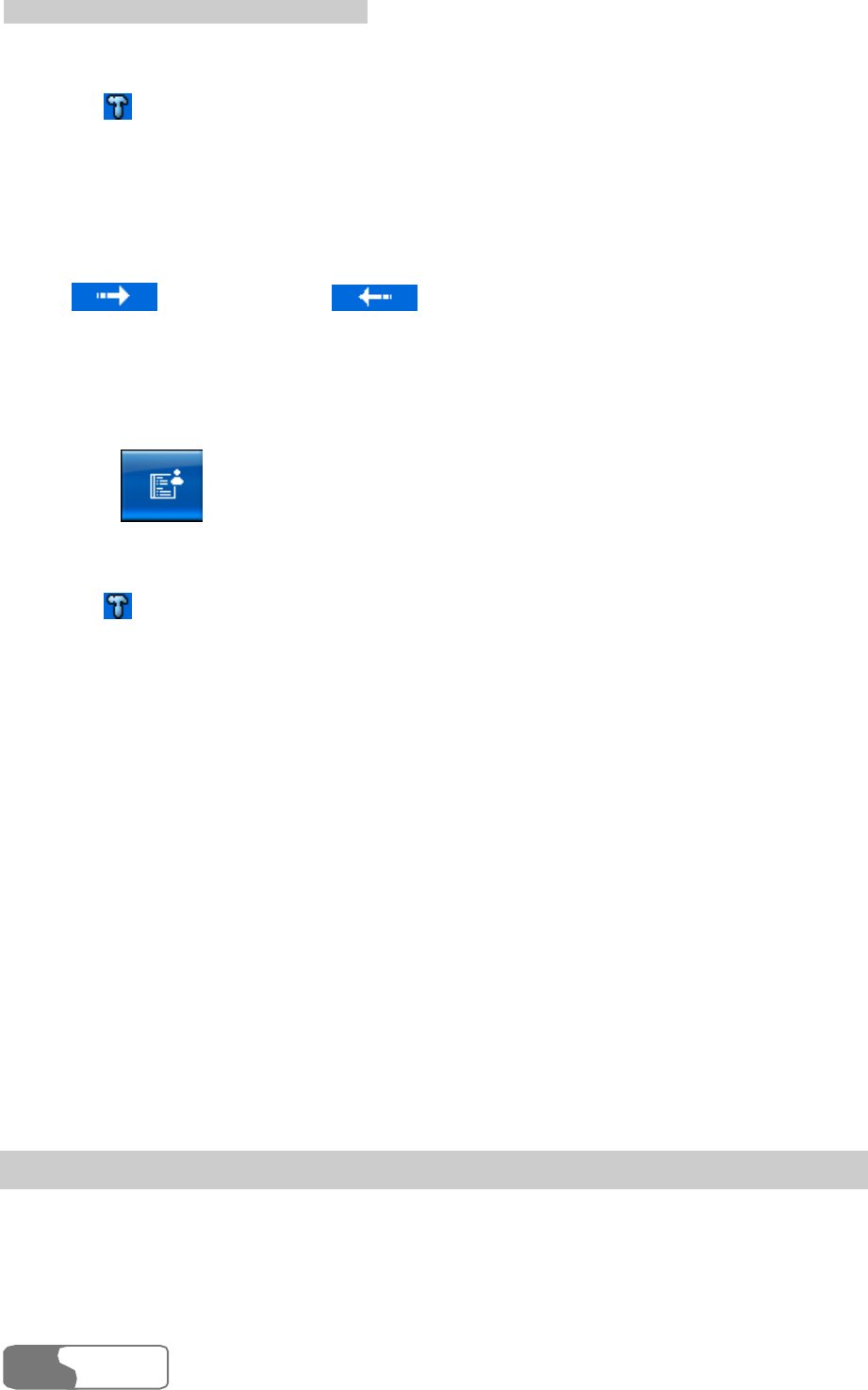
9
Phone Book Management
HUAWEI
38
3. There are two ways to export:
l Click to select Export all Contacts/To SIM/USIM Card... in the
shortcut menu in order to export all the contacts information.
l Right-click one or more contacts to select Export Select Contacts/ To
SIM/USIM Card... in the shortcut menu in order to export the selected
contacts information.
4. In the Select dialog box, select a type for the phone number to export and
click , you can click to cancel the selected phone number.
5. Click OK to export the contact information to the phone book of
SIM/USIM card.
Export SIM/USIM Card to Local
1. Click to display the Phone Book interface.
2. Click SIM/USIM to display the contact list in SIM/USIM card.
3. There are two ways to export:
l Click to select Export all Contacts/To Local... in the shortcut menu
in order to export all the contacts information.
l Right-click one or more contacts to select Export Select Contacts/To
Local... in the shortcut menu in order to export the selected contacts
information.
Note
l Click and hold single or multiple contacts in Local, drag it or them
to SIM/USIM card in group tree, and export the contact information to the
phone book of SIM/USIM card directly.
l SIM/USIM card determines the storage capacity of its phone book.
If a contact information in Local to export to SIM/USIM card exceeds the
SIM/USIM card capacity, the Data Card Management automatically
interrupts the export, but the exported content is not affected.
Import to Phone Book
You can import the contact information from the *.csv and *.txt files or the
phone book in SIM/USIM card to Local, or import the contact information
from Local into the phone book in SIM/USIM Card.
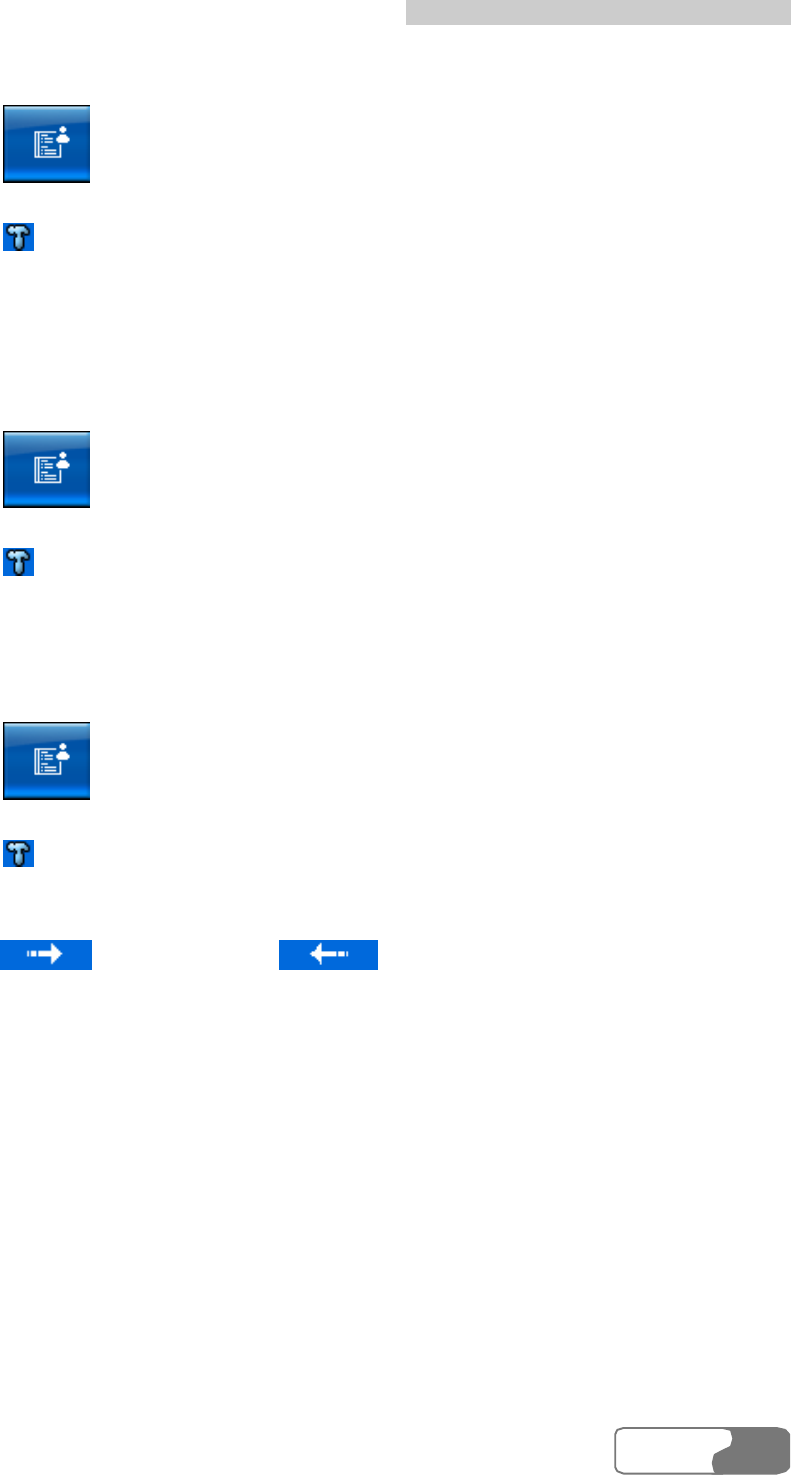
9
Phone Book Management
HUAWEI
39
Import from Files into Local
1. Click to display the Phone Book interface.
2. Click Local to display the contact list in Local.
3. Click or right-click on the contact list to select Import all
Contacts/From File... in the shortcut menu.
4. In the Open File dialog box, select a file.
5. Click Open and import the file information to Local.
Import from SIM/USIM Card into Local
1. Click to display the Phone Book interface.
2. Click Local to display the contact list in Local.
3. Click or right-click on the contact list to select Import all
Contacts/From SIM/USIM Card... in the shortcut menu in order to import
the contact information in the SIM/USIM card to Local.
Import from Local into SIM/USIM Card
1. Click to display the Phone Book interface.
2. Click SIM/USIM to display the contact list in SIM/USIM card.
3. Click or right-click on the contact list to select Import all
Contacts/From Local... in the shortcut menu.
4. In the Select dialog box, select a type for the phone number to import
and click . You can click to cancel the selected phone
number.
5. Click OK to import the contact information to the phone book in
SIM/USIM Card.
Note
l When importing the information of a specified file to the Local,
the field name in the file must have a matching field in Local. If no field
matches with each other, the Data Card Management prompts that the format
is error.
l You can click and hold single or multiple contacts in SIM/USIM
card, drag it or them to Local in order to import the contacts information to
Local directly.
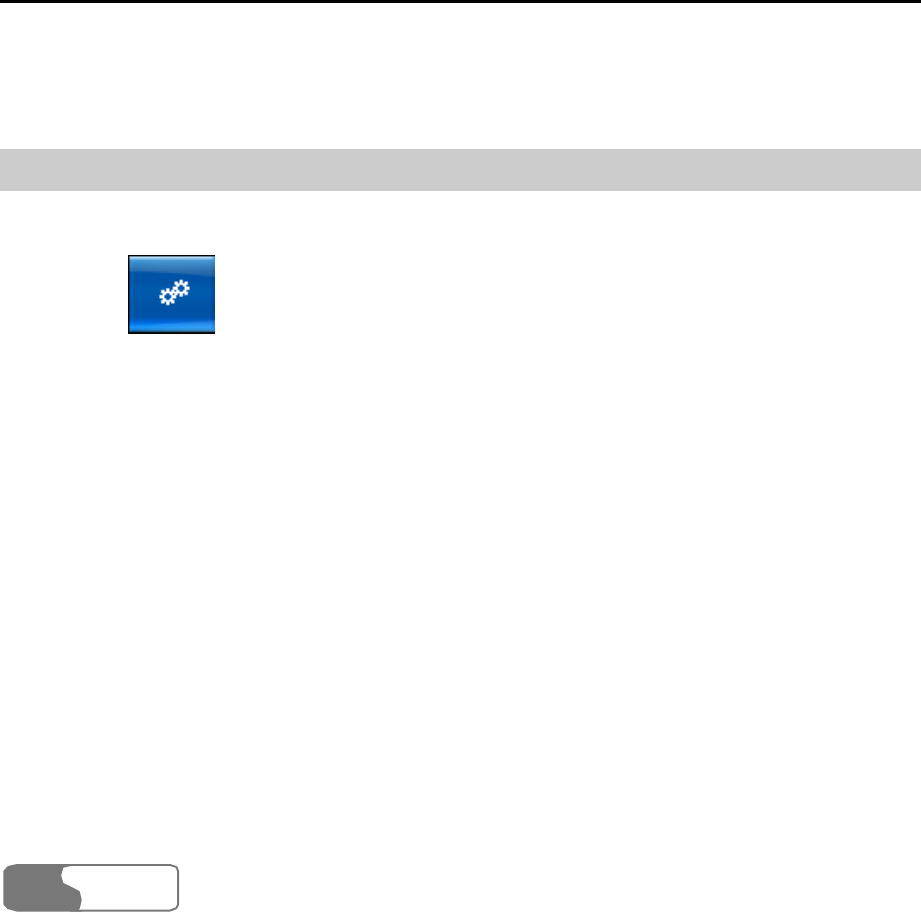
HUAWEI
40
10 Settings and Information
Query
The Data Card Management provides various setting options, so you can
build a personalized platform, and query or modify settings at any time.
Message Settings
The message settings include message alerts settings and advanced message
settings.
Message Alerts Settings
You can start or stop visual alert and ring alert as desired.
1. Click to display the Setting interface.
2. Click the General tab page to display the General dialog box.
3. In the Message Alerts Settings group box, select to start or stop the ring
alert.
l Select the Play a sound when a message is received checkbox to start the
ring alert for messages.
l Deselect the Play a sound when a message is received checkbox to stop
the ring alert for messages.
4. In the Message Alerts Settings group box, select to start or stop the
visual alert.
l Select the Display alerts when a message is received checkbox to start
the visual alert for messages.
l Deselect the Display alerts when a message is received checkbox to stop
the visual alert for messages.
5. Click Browse… to display a dialog box.
6. Select ring files, and click Open.
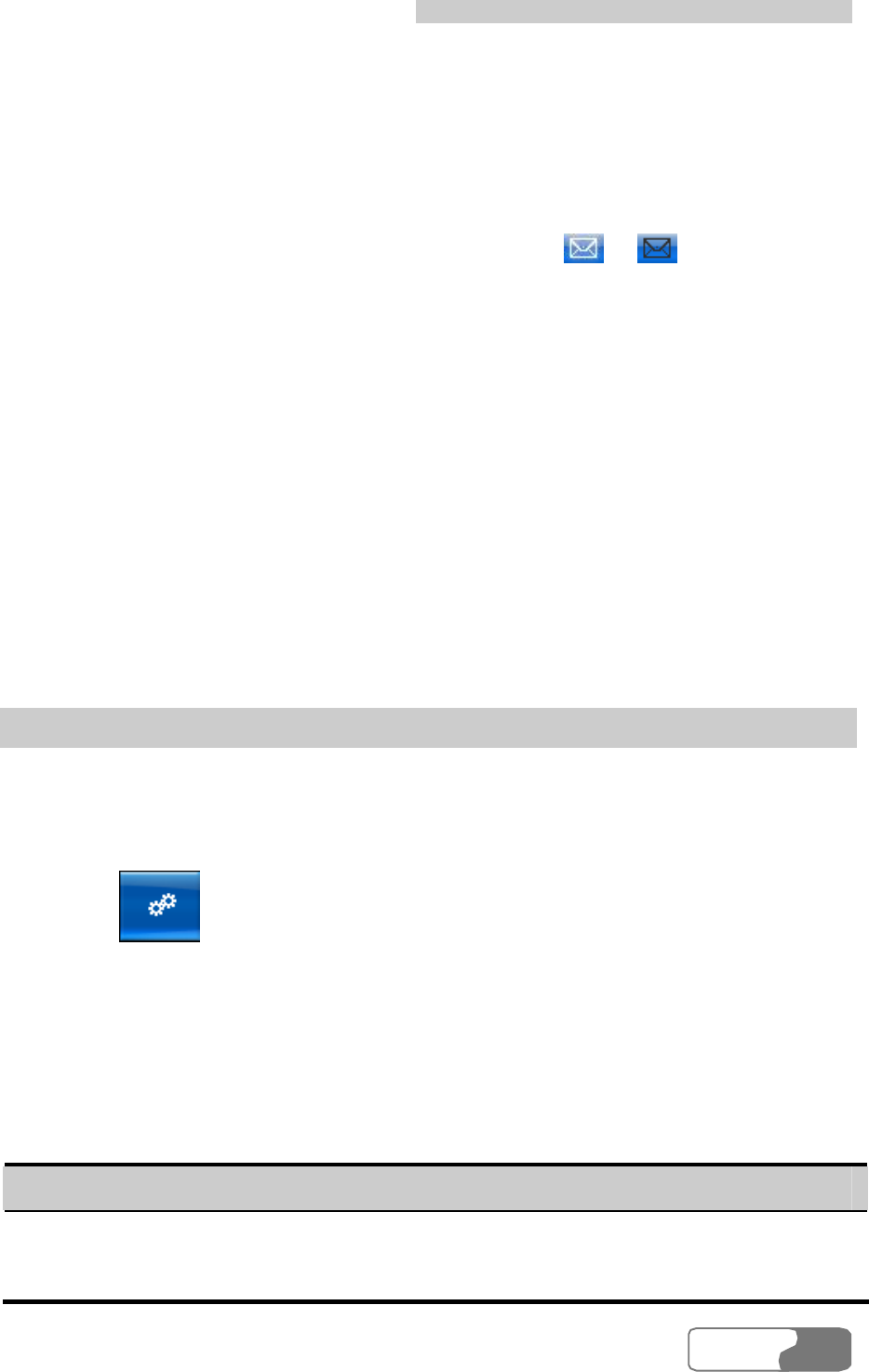
10
Settings and Information Query
HUAWEI
41
7. You can click Play to listen to rings.
8. In the setting interface, click Apply or OK.
Note
l If you select the Display alerts when a message is received
checkbox, when there is a new message, the icons / in the status
display area flash.
l If you select the Display alerts when a message is received
checkbox, there is a Prompt dialog box in the lower right corner of your
laptop screen whenever there is a new message, you can click View to see
the message in Inbox.
l If you select a ring file, the corresponding ring alert is played when
you receive a new message.
l For advanced settings such as the short message server (SMS)
center number setting, refer to Advanced Message Settings.
l Under the General tab page, click Default to restore all the default
settings in the General tab page.
Advanced Message Settings
You can set whether to allow others to use the SMS center for answering
messages through advanced message settings. You can also select the
carrying domain and valid period of messages, and set SMS center numbers.
1. Click to display the Setting interface.
2. Click the General tab page to display the General dialog box.
3. In the Message Alerts Settings frame, click Advanced….
4. Set options in the SMS Settings frame.
5. After finishing the settings, click Setting to save the settings.
The advanced message setting parameters and their descriptions are listed
below:
Parameter Description
Request status
report If you enable this function, the network sends return
notifications when messages are sent successfully.
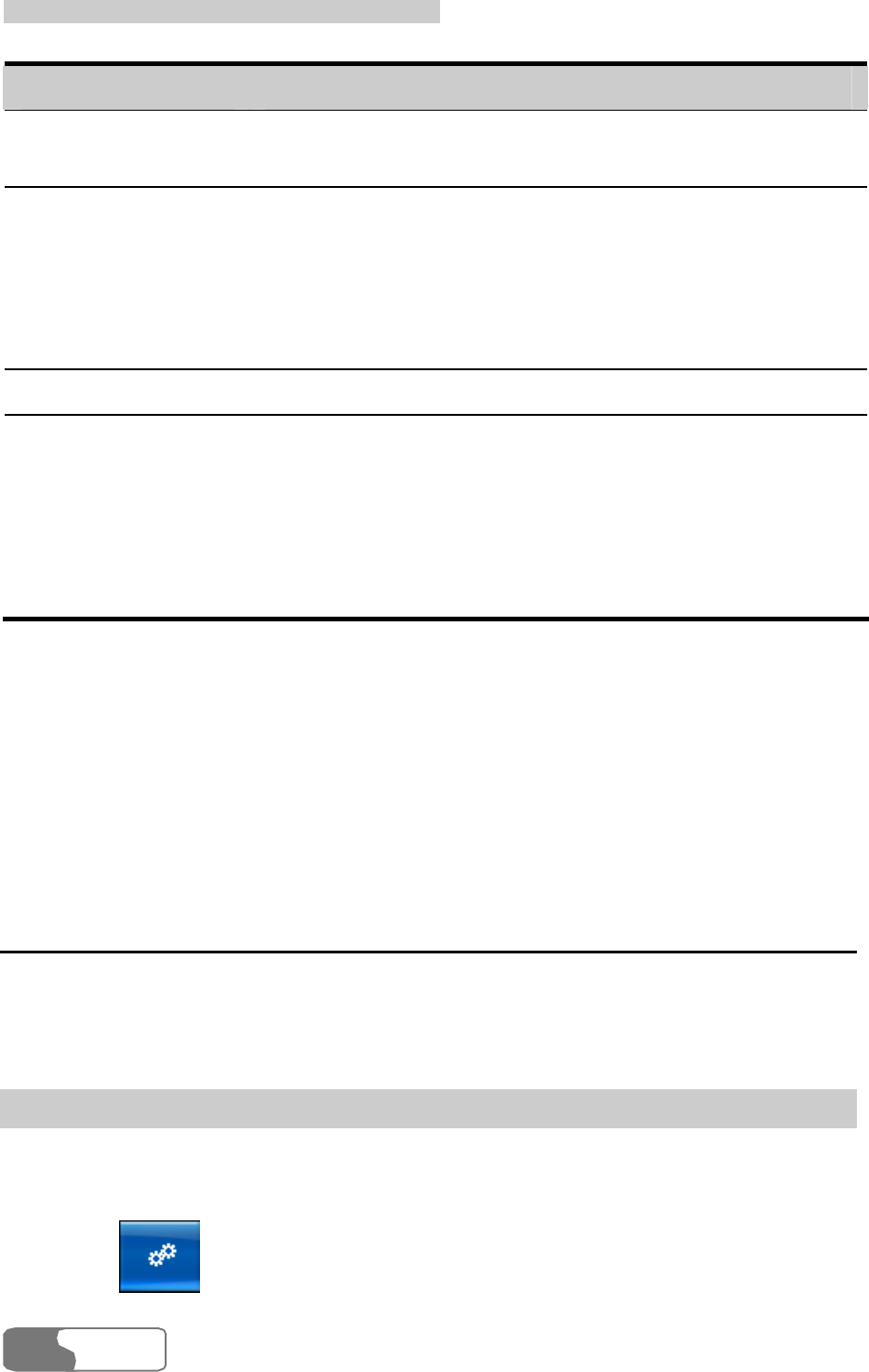
10
Settings and Info
rmation Query
HUAWEI
42
Parameter Description
Use same SMS
centre for reply Set the SMS center number of the receiving party to
that of the sending party when replying to messages.
SMS Bear The carrying domain used for sending messages:
PS Preferred: Select data domain when sending
messages.
CS Preferred: Select circuit domain when sending
messages.
Validity Select the SMS saving validity in the SMS center.
Current SMS
center
You can change the SMS center number. After
inserted the SIM/USIM card with the SMS center
number, the Data Card Management can
automatically verify the center number. If the
number is empty or you delete the number by
mistake, contact the supplier of the SIM/USIM card.
Note
Under the General tab page, click Default to restore all the default settings
in the General tab page.
Network Settings
You can select the network searching mode and connection type. Network
settings include the following operations:
Select Connection Types
You can select different network connection types to access the networks
provided by carriers.
1. Click to display the Setting interface.
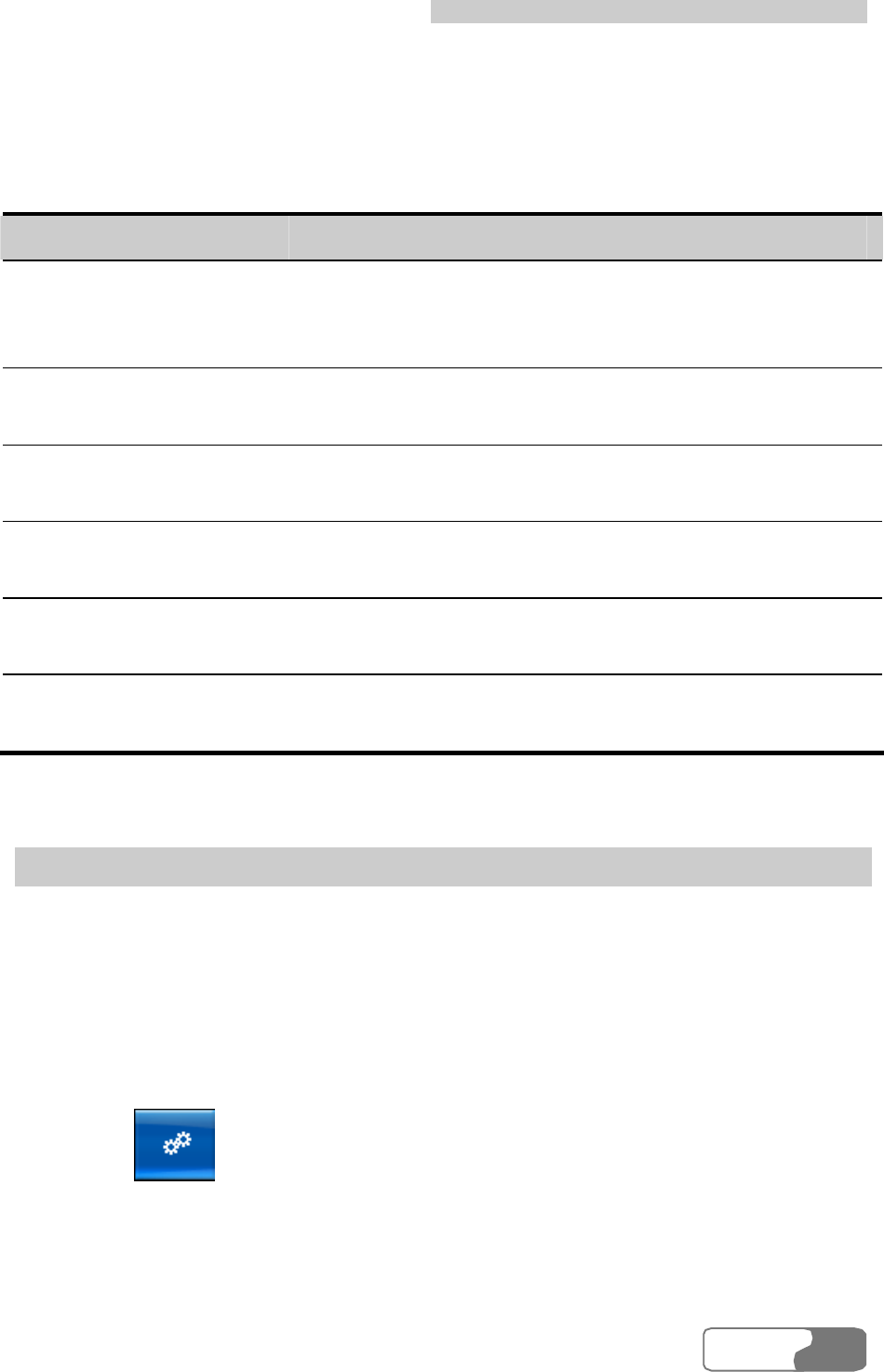
10
Settings and Information Query
HUAWEI
43
2. Select the Network tab page to display the Network dialog box.
3. In the Choose Connection Type frame, select a type and a band.
4. Click Setting to save the network connection type.
All the connection types and their descriptions are listed below:
Parameter Description
Band Select one to network connection bands. There
are three selections: All Band, GSM 1900,
GSM900/1800/WCDMA2100.
Choose Connection
Type Select one of network connection types.
GPRS/EDGE Preferred If you select this option, the Data Card first
selects GPRS/EDGE network when possible.
3G Preferred If you select this option, the Data Card first
selects 3G network when possible.
GPRS/EDGE Only If you select this option, the Data Card only
selects GPRS/EDGE network.
3G Only If you select this option, the Data Card only
selects 3G network.
Select Network Searching Modes
You can set the network searching as manual or auto mode. The settings
include:
Auto Network Searching
After you select connection types, you can set the Data Card to search for a
network automatically, and register to the carrier of the Data Card.
1. Click to display the Setting interface.
2. Select the Network tab page to display the Network dialog box.
3. Click Auto Choose Network to finish settings.
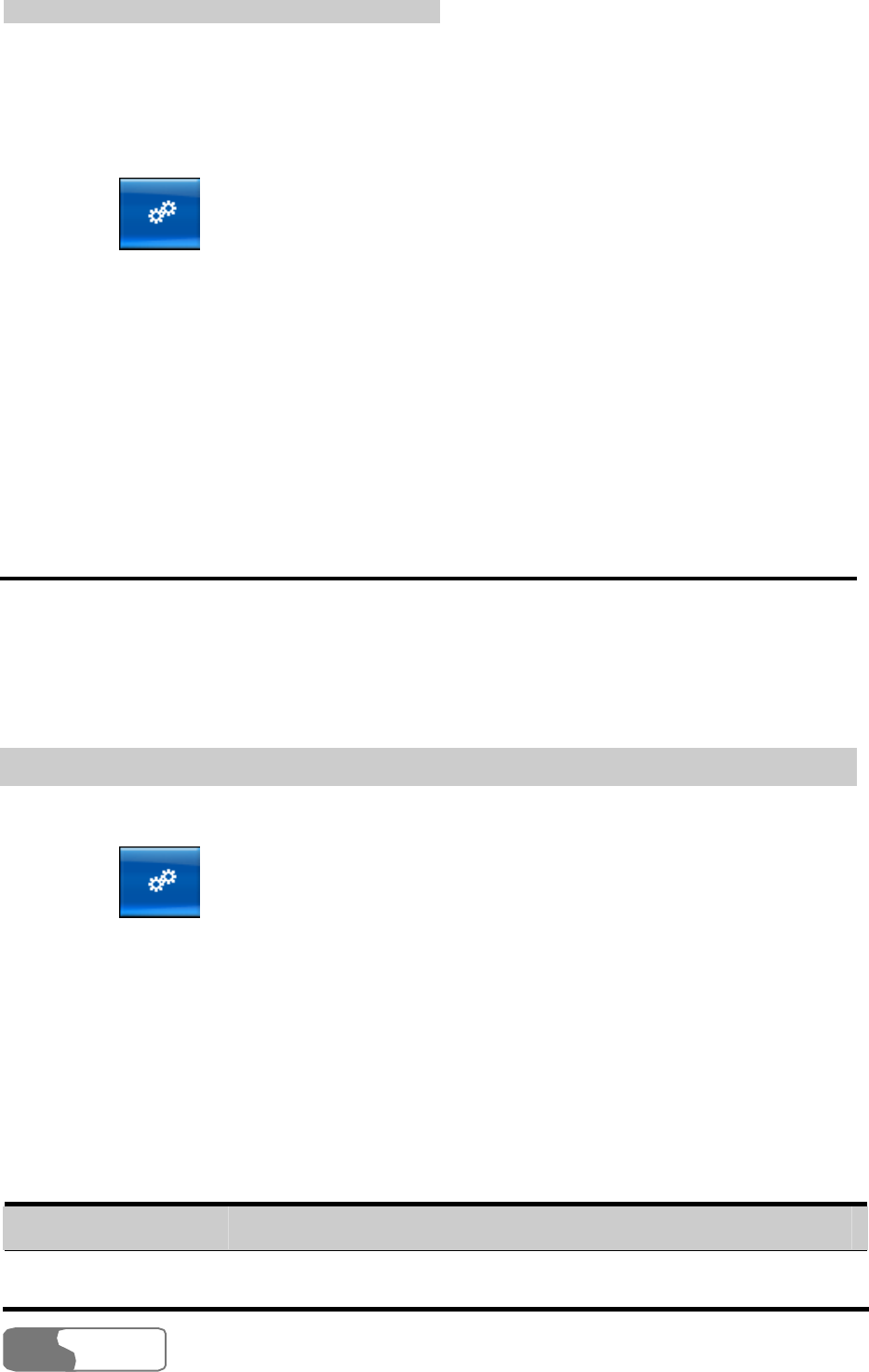
10
Settings and Information Query
HUAWEI
44
Manual Network Searching
After you select connection types, you can search for a network manually,
and register to the carrier of the Data Card.
1. Click to display the Setting interface.
2. Select the Network tab page to display the Network dialog box.
3. Click Manual Choose Network, and click Search to display a Prompt
dialog box.
4. Click Yes to display the results of the carriers in the Network Search
list.
5. Select the related carrier in the Network Search list.
6. Click Register to finish settings.
Connection Settings
You can create, modify, and delete the settings of network connection, such
as configuring network names, verifying users, and setting IP addresses. You
can perform the following operations:
Create Connections
You can make a new network connection.
1. Click to display the Setting interface.
2. Select the Connection tab page.
3. Click New and configure network profile names, verify users, and set IP
addresses and so on.
4. Click Advanced to set authentication protocol, DNS, and WINS.
5. After advanced settings, click OK.
6. After connection settings, click Save; you can click Cancel to cancel
your creation.
All the connection setting parameters and their descriptions are listed below:
Parameter Description
Profile name The profile name of the connection.
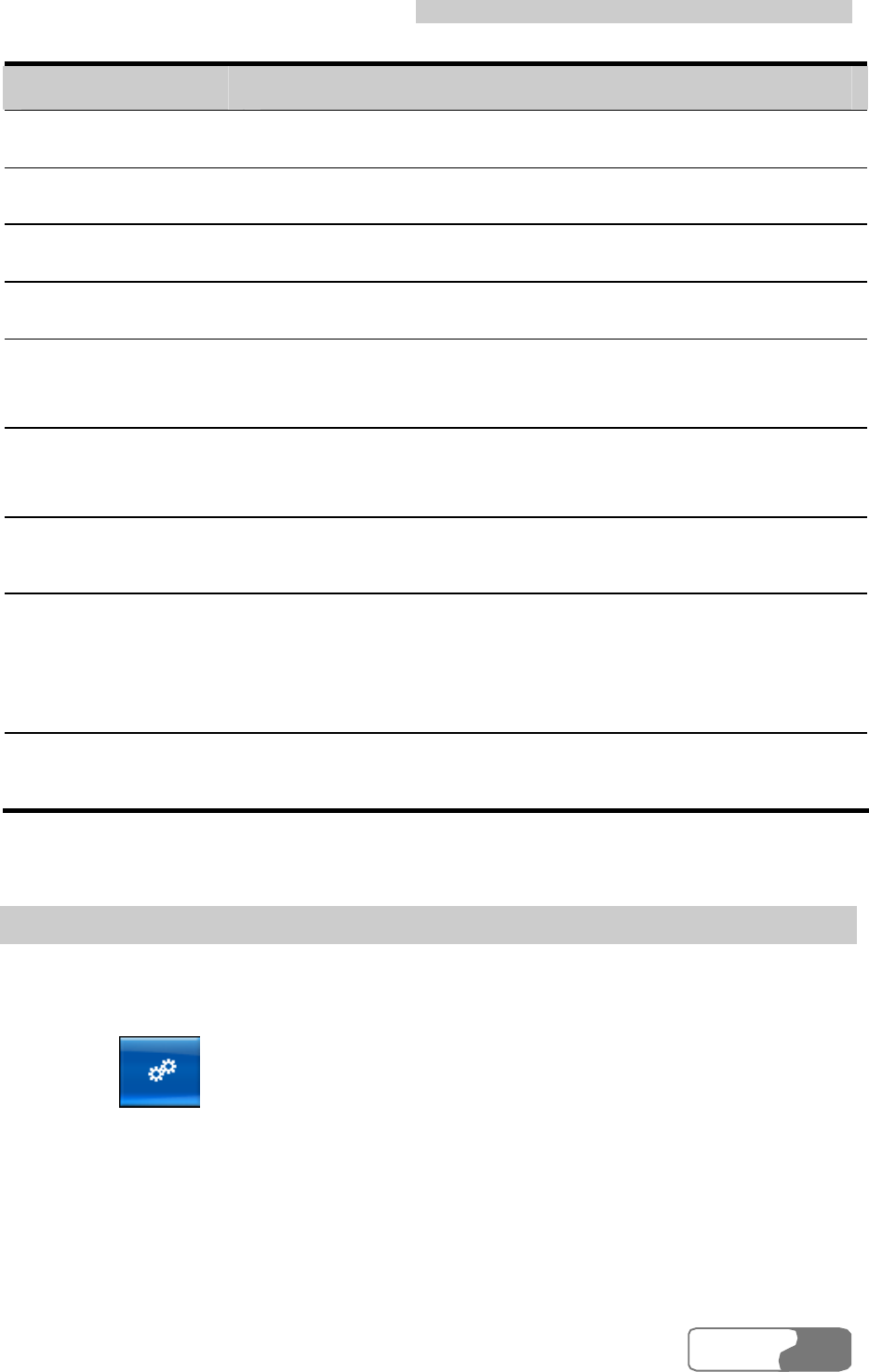
10
Settings and Information Query
HUAWEI
45
Parameter Description
Number Mandatory. For details, consult related carriers.
Username For details, consult related carriers.
Password For details, consult related carriers.
APN For details, consult related carriers.
IP The correct IP address, such as, 192.168.7.27. For
details, consult related carriers.
Primary DNS It is used to set the IP address of Domain Name
Server (DNS).
Secondary DNS When the primary DNS is unavailable, the Data Card
uses the alternative DNS.
Primary WINS Windows Internet Name Services (WINS) are to
dynamically map the IP address to the NetBIOS
name, and allow users to visit resources by names.
For details, consult related carriers.
Secondary WINS When the preferred WINS is unavailable, the Data
Card uses the alternative WINS.
Modify Connections
You can modify network connections, but you can not modify the default
network connections.
1. Click to display the Setting interface.
2. Select the Connection tab page.
3. Select a connection in the Profile Name drop-down list.
4. Click Modify to modify the profile name, verify users, and set IP
addresses.
5. Click Advanced to modify authentication protocol, DNS, and WINS
6. After advanced settings, click OK.
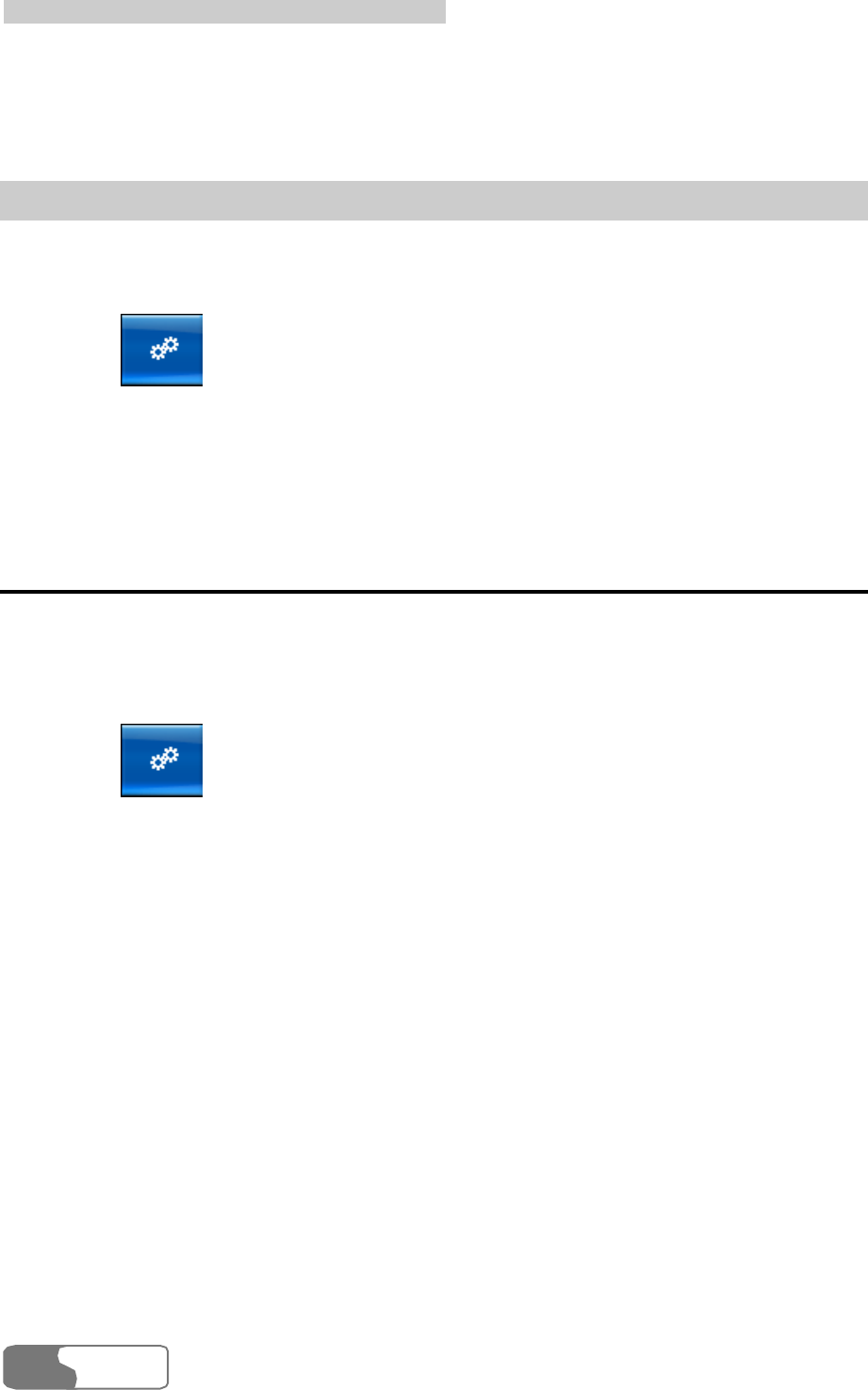
10
Settings and Information Query
HUAWEI
46
7. After connection settings, click Save; you can click Cancel to cancel
your creation.
Delete Connections
You can delete the settings of network connections, but you can not delete
the default network connections.
1. Click to display the setting interface.
2. Select the Connection tab page.
3. In the Profile Name drop-down list, select a connection to delete.
4. Click Remove.
System Settings
You can set the startup mode of the Data Card Management, that is, setting
the Data Card Management to start along with Windows or not, and setting
the interface to be minimized automatically during startup.
1. Click to display the Setting interface.
2. Select the System tab page to display the System dialog box.
3. Select whether to start the Data Card Management along with Windows.
l Select the Launch data card on windows start up checkbox, the Data
Card Management is started along with Windows.
l Deselect the Launch data card on windows start up checkbox, you need
to start the Data Card Management manually.
4. Select whether to minimize the interface of the Data Card Management
after startup.
l Select the Start main window minimized checkbox, the interface of the
Data Card Management is automatically minimized after startup.
l Deselect the Start main window minimized checkbox, the interface of
the Data Card Management is automatically displayed after startup.
5. Click Apply or OK.
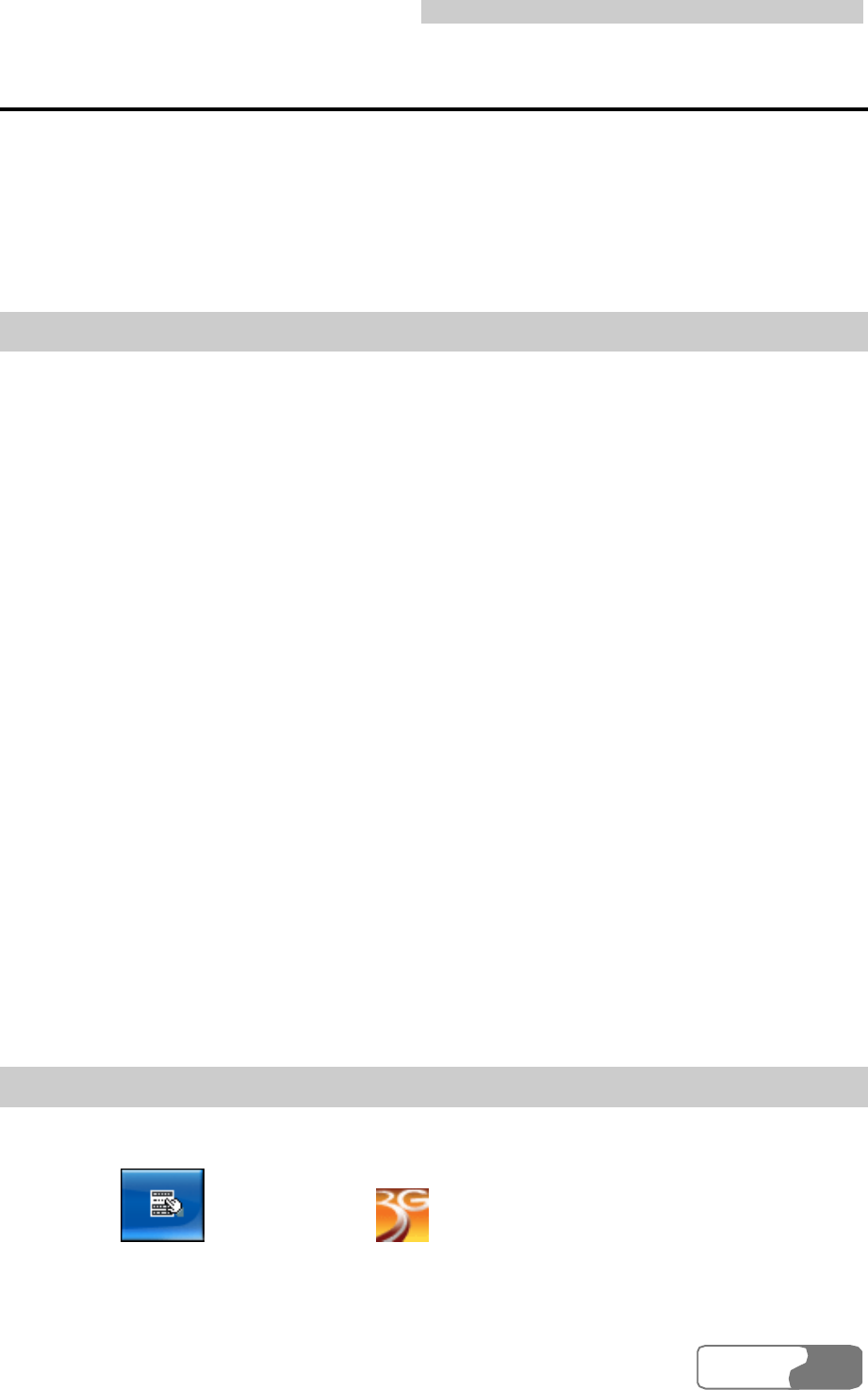
10
Settings and Information Query
HUAWEI
47
PIN Management
PIN can prevent your SIM/USIM card from illegal usage. Usually, PIN is
provided along with SIM/USIM card. You can modify PIN, or set whether
PIN is required at the Data Card Management startup or not. PIN
management includes the following operations:
Verify PIN
After you Enable PIN Protection, you must enter the correct PIN to use the
related functions of SIM/USIM card, such as accessing the Internet, sending
and receiving messages, and reading messages in SIM/USIM card.
1. After starting the Data Card Management, display the Check PIN dialog
box.
2. Enter the correct PIN in the Check PIN dialog box.
3. Click OK to finish the PIN verification.
Note
l The PIN value ranges from 4 to 8 digits.
l The Data Card Management prompts the remaining entry attempts
for PIN. If you enter the incorrect PIN three times consecutively, the Data
Card Management locks the SIM/USIM card. In this case, you must use
PUK to unlock PIN.
l If you do not use PUK to unlock PIN after SIM/USIM card is
locked, you can not use the related functions of SIM/USIM card. For
example, accessing the Internet, sending and receiving messages, and
reading message in SIM/USIM card.
Modify PIN
You can modify the current PIN, and the new PIN automatically takes effect.
1. Click or right-click in the taskbar.
2. Select PIN Operation/Change PIN in the shortcut menu to display the
Change PIN dialog box.
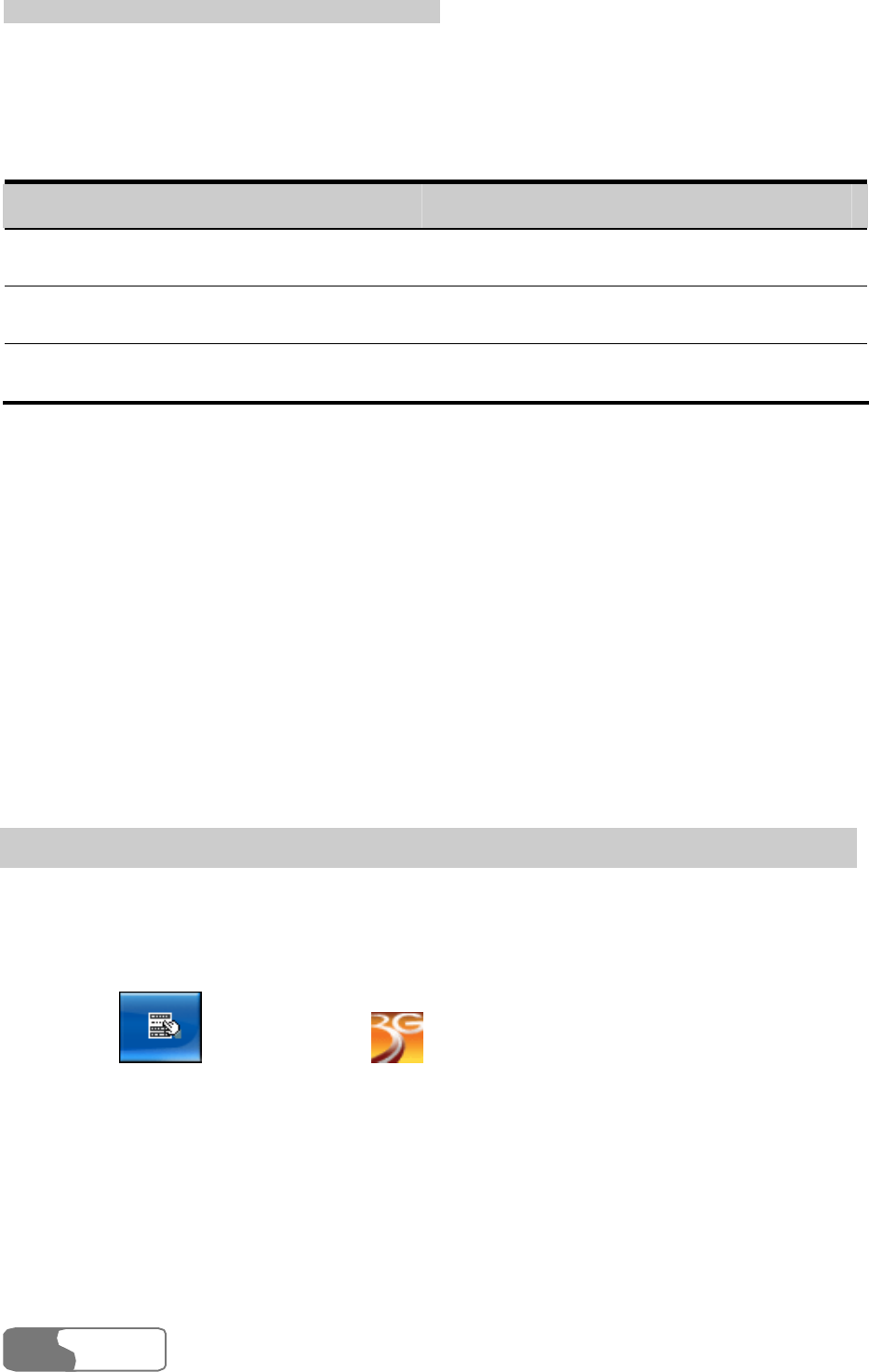
10
Settings and Information Query
HUAWEI
48
3. Enter the old PIN and the new PIN.
4. Click OK to finish the modification.
The parameters and their descriptions are listed below:
Parameter Value range
Description
Current PIN 4 to 8 digits The current PIN of the SIM/USIM.
New PIN 4 to 8 digits New PIN.
Validate PIN 4 to 8 digits New PIN confirmation.
Note
l The Data Card Management prompts the remaining entry attempts
for PIN. If you enter the incorrect PIN three times consecutively, the Data
Card Management locks the SIM/USIM card. In this case, you must use
PUK. to unlock PIN.
l If you do not use PUK to unlock PIN after SIM/USIM card is
locked, you can not use the related functions of SIM/USIM card. For
example, accessing the Internet, sending and receiving messages, and
reading message in SIM/USIM card.
Enable PIN Protection
You can enable the PIN protection of SIM/USIM card. After enabling the
protection, you must verify PIN at the next startup of the Data Card
Management.
1. Click or right-click in the taskbar.
2. Select PIN Operation/Enable PIN Check in the shortcut menu.
3. Enter the correct PIN in the Enable PIN Check dialog box.
4. Click OK in the prompt dialog box.
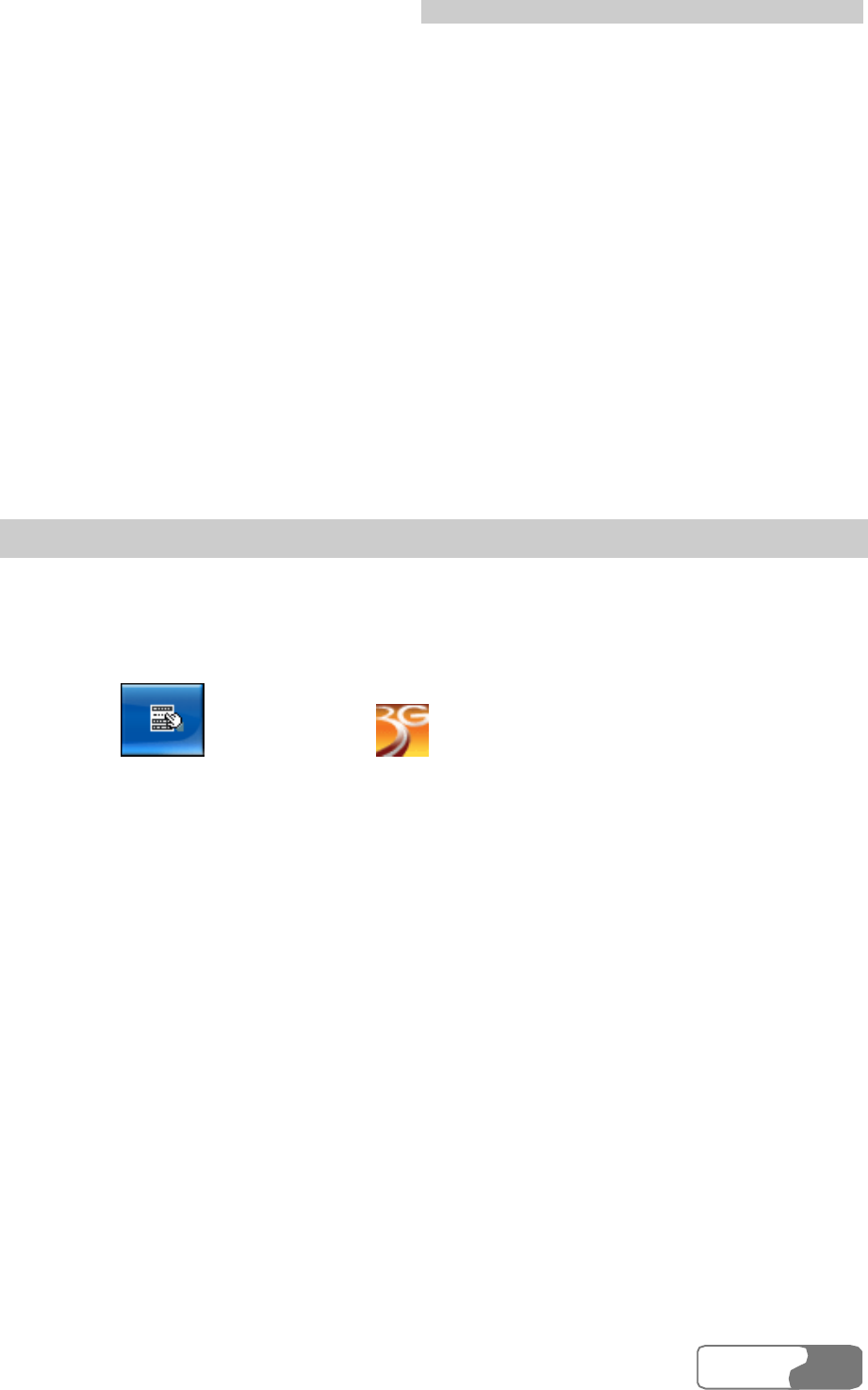
10
Settings and Information Quer
y
HUAWEI
49
Note
l After enabling the PIN protection, you can disable PIN protection
based on your requirements.
l The Data Card Management prompts you the remaining entry
attempts for PIN. If you enter the incorrect PIN consecutively for three times,
the Data Card Management locks the SIM/USIM card. In this case, you must
use PUK to unlock PIN.
l If you do not use PUK to unlock PIN after SIM/USIM card is
locked, you can not use the related functions of SIM/USIM card. For
example, accessing the Internet, sending and receiving messages, and
reading message in SIM/USIM card.
Disable PIN Protection
You can disable the PIN protection in SIM/USIM card. After disabling the
protection, you do not need to verify PIN at the next startup of the Data Card
Management.
1. Click or right-click in the taskbar.
2. Select PIN Operation/Disable PIN Check in the shortcut menu.
3. Enter the correct PIN in the Disable PIN Check dialog box.
4. Click OK to disable PIN protection.
Note
l Only after you enable PIN protection, can you disable the PIN
protection.
l The Data Card Management prompts the remaining entry attempts
for PIN. If you enter the incorrect PIN consecutively three times, the Data
Card Management locks the SIM/USIM card. In this case, you must use
PUK to unlock PIN.
l If you do not use PUK to unlock PIN after SIM/USIM card is
locked, you can not use the related functions of SIM/USIM card. For
example, accessing the Internet, sending and receiving messages, and
reading message in SIM/USIM card.
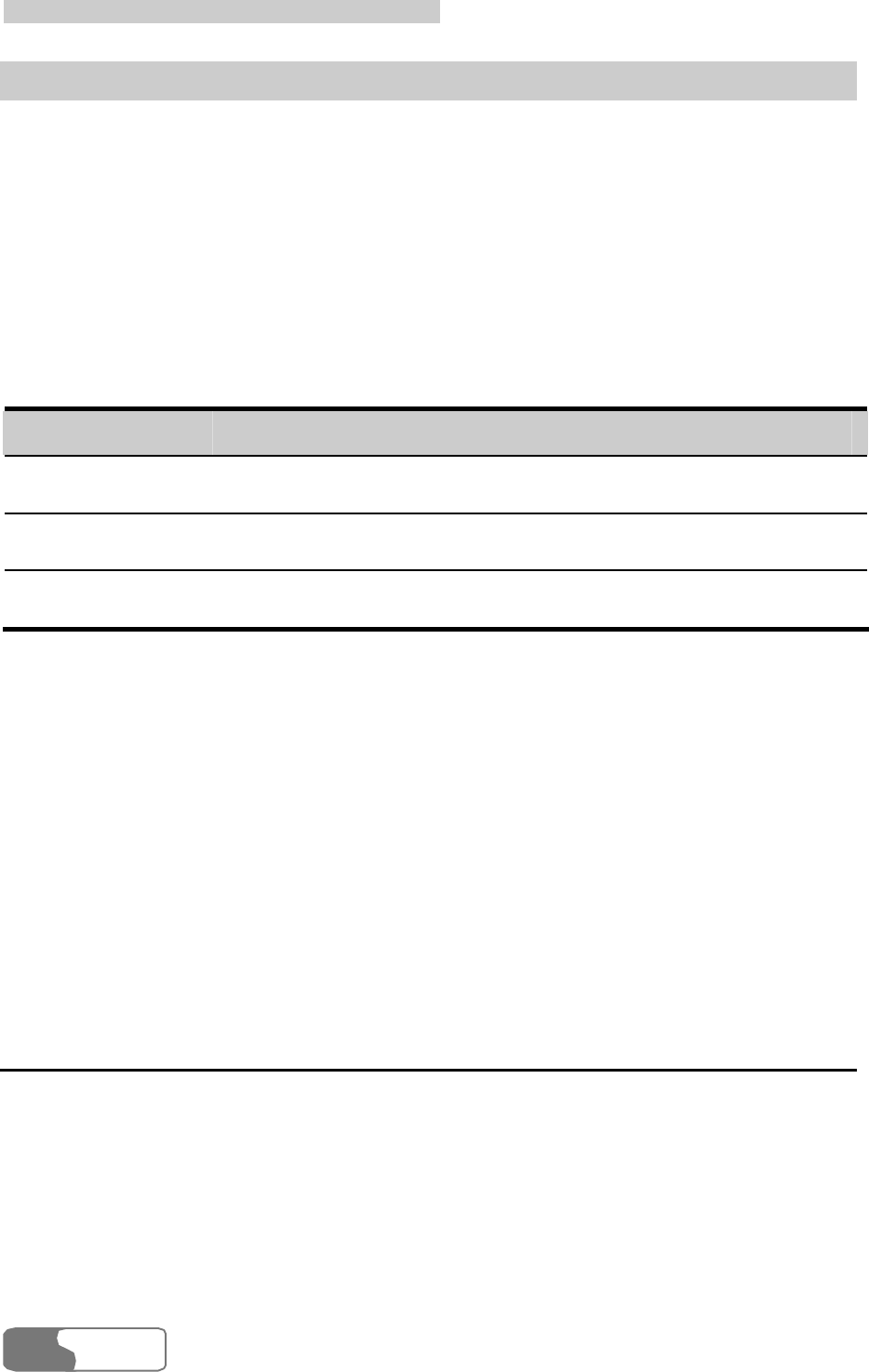
10
Settings and Information Query
HUAWEI
50
PUK Unlock
You can use PUK to unlock PIN and reset new PIN when SIM/USIM card is
locked.
1. When SIM/USIM card is locked, start the software to display the PUK
Verification dialog box.
2. Enter the correct PUK and the new PIN in the PUK Verification dialog
box.
3. Click OK to finish unlocking the PIN.
The parameters and their descriptions are listed below:
Parameter Value range
Description
Current PUK 4 to 8 digits PUK of SIM/USIM card.
New PIN 4 to 8 digits New PIN.
Validate PIN 4 to 8 digits New PIN confirmation.
Note
l The Data Card Management prompts the remnant entry times for
PUK. If you enter the incorrect PUK ten times consecutively, the SIM/USIM
card is locked permanently. In this case, please consult related carriers.
l If you do not use PUK to unlock PIN after SIM/USIM card is
locked, you can not use the related functions of SIM/USIM card. For
example, accessing the Internet, sending and receiving messages, and
reading message in SIM/USIM card.
Upgrade In-Service
While accessing the Internet by using the data card, you can upgrade the
Huawei 3G Data Card Management in either of the following ways:
l Manually upgrade
l Auto upgrade
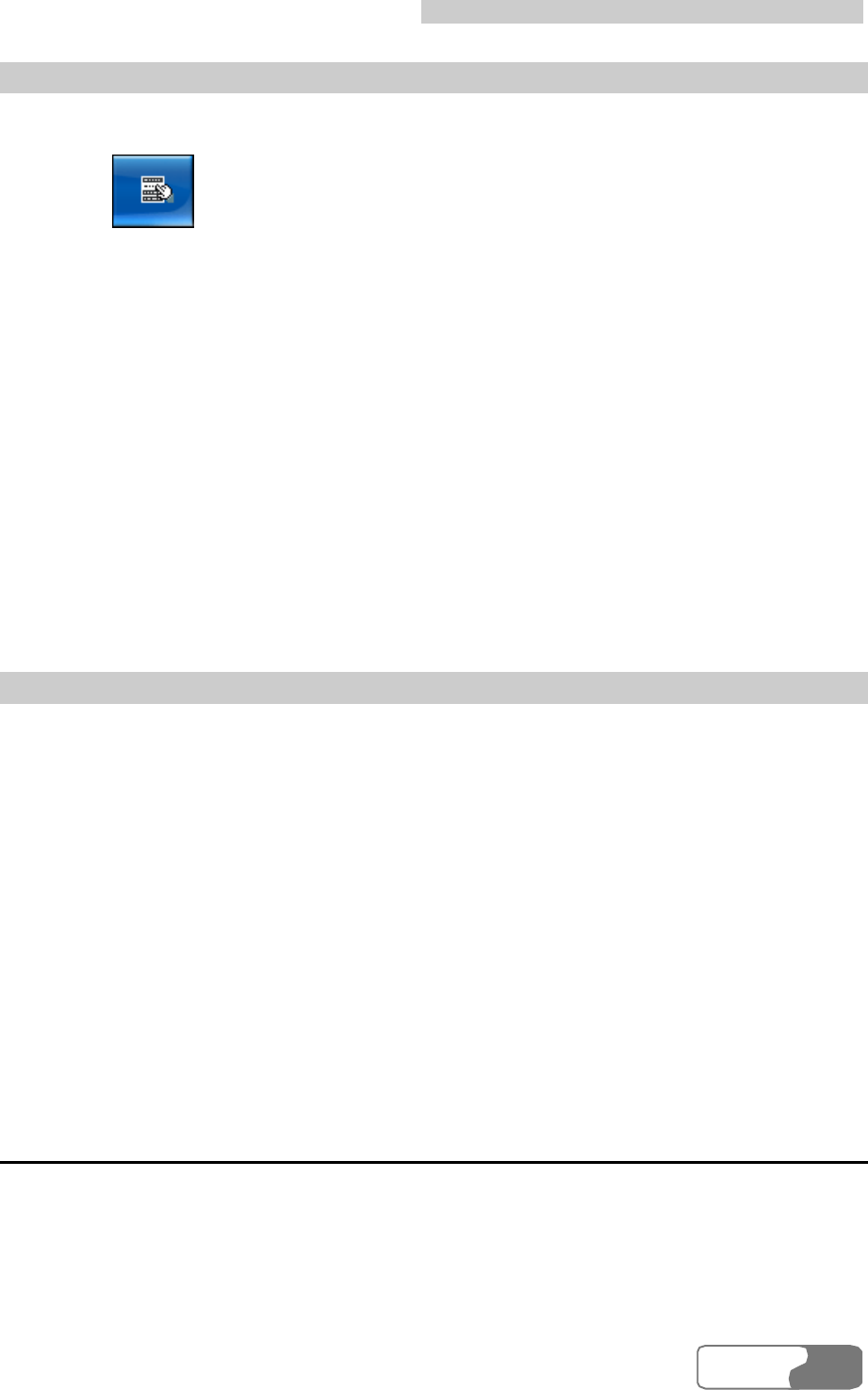
10
Settings and Information Query
HUAWEI
51
Manually Upgrade
Do the following to upgrade Huawei 3G Data Card Management manually:
1. Click and then select Online Update.
2. In the Update Via Internet dialog box double-click a server address, or
enter the server address in the Server URL: text box.
3. Click Next.
The data card starts to detect the programs for upgrading on the server.
l If succeeded, a list of programs for upgrading is displayed in the Update
Via Internet dialog box. Click Next to proceed.
l If no program is detected, it indicates that the current software is the latest.
Click Quit to quit upgrading.
4. After the programs are downloaded, exit Huawei 3G Data Card
Management. Then click Next to start upgrading.
5. Wait until the upgrading process is finished. You will see the message
"Congratulations! Upgrade completed successfully.". Click Quit to finish.
Auto Upgrade
Do the following to auto upgrade Huawei 3G Data Card Management:
1. In the Update Via Internet dialog box, select the To check latest
version when Huawei 3G Data Card Management running each time
check box.
2. Save the setting.
Whenever your PC accesses the Internet through the data card, the data card
automatically detects whether there is any newer version program on the
server. If yes, the Update Via Internet dialog box is displayed, showing the
list of programs for upgrading. Then you can choose to upgrade the program
by following the steps 4 and 5 in "Manually Upgrade".
View Diagnostics Information
In diagnostics information, you can view the quantity of messages and
contacts in SIM/USIM card, IMEI number, IMSI number, FirmWare Version,
HardWare Version, Model ID and SN.
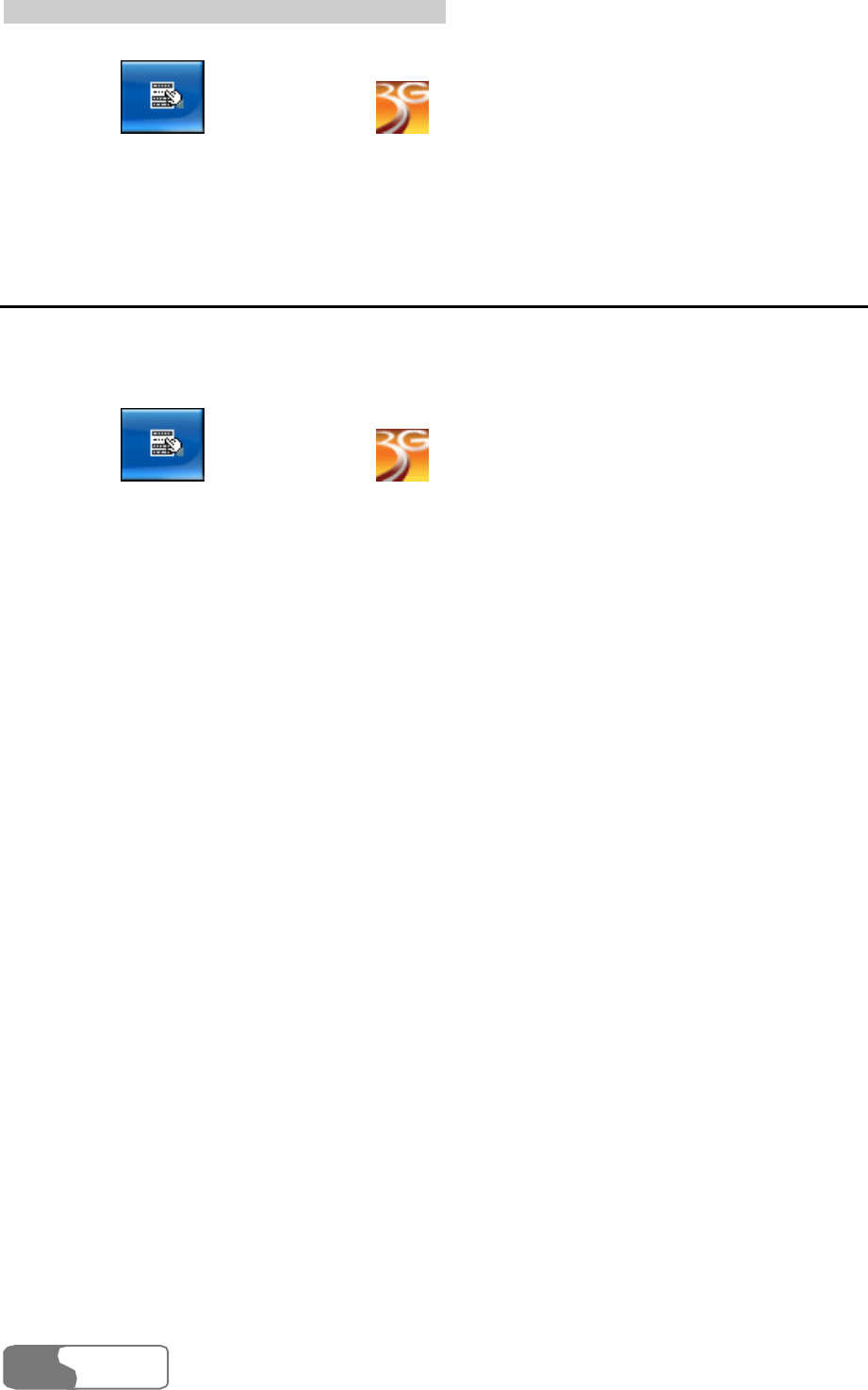
10
Settings and Information Query
HUAWEI
52
1. Click or right-click in the taskbar.
2. Select Diagnostics in the shortcut menu.
3. The Data Card Management displays the diagnostics dialog box.
About HUAWEI 3G Data Card
You can view the version of HUAWEI 3G Data Card, its copyright and so
on.
1. Click or right-click in the taskbar.
2. Select About in the shortcut menu.
3. The Data Card Management displays the About HUAWEI 3G Data
Card dialog box.
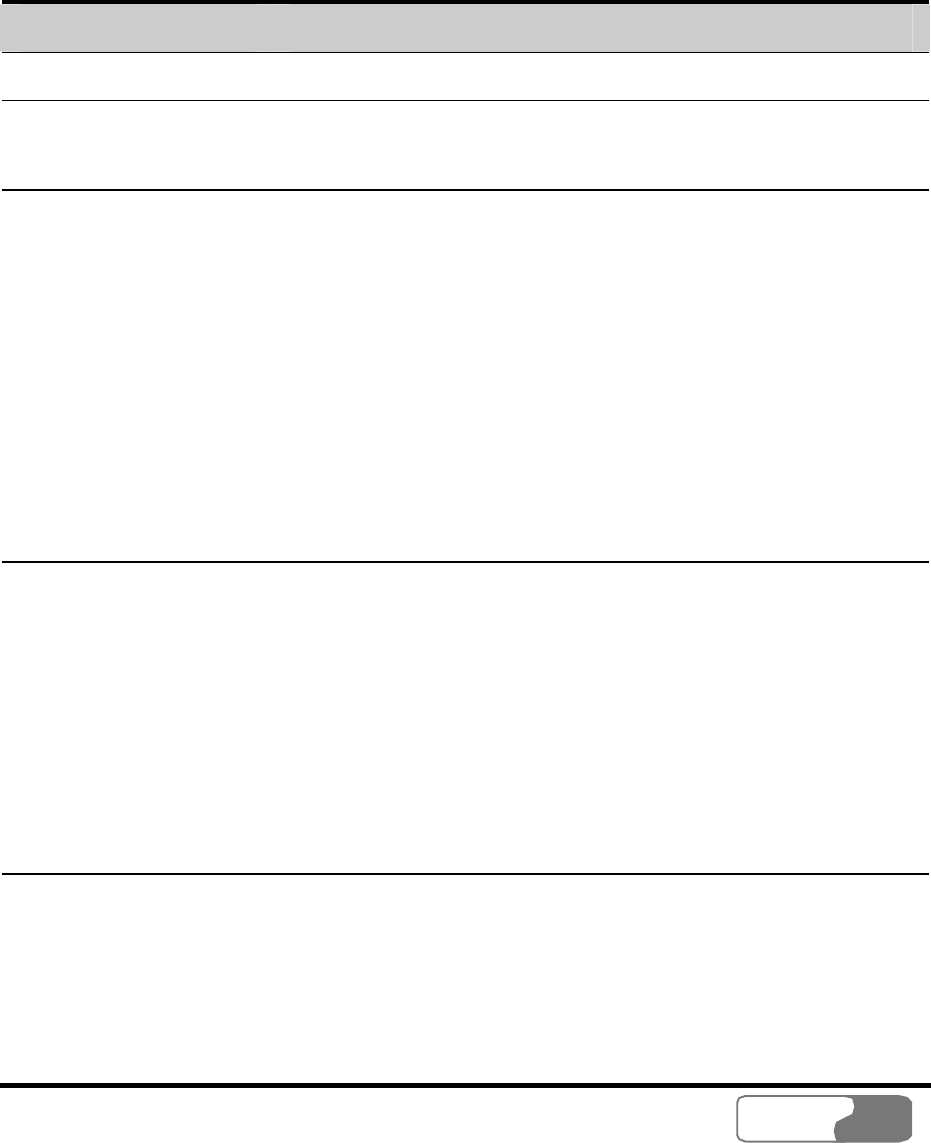
HUAWEI
53
11 Technical Parameters
Item Description
laptop card type Type II, 68 Pin, CARDBUS
Radio system GSM/GPRS/EDGE: 900MHz/1800MHz/1900MHz
HSDPA/WCDMA: 2100MHz
Radio frequency
band HSDPA/WCDMA 2100MHz: 1920MHz~1980MHz/
2110MHz~2170 MHz (Uplink / Downlink)
GSM/GPRS/EDGE 900MHz: 880MHz~915MHz/
925MHz~960MHz (Uplink / Downlink)
GSM/GPRS/EDGE 1800MHz:
1710MHz~1785MHz/ 1805MHz~1880MHz
(Uplink / Downlink)
GSM/GPRS/EDGE 1900MHz:
1850MHz~1910MHz/ 1930MHz~1990MHz
(Uplink / Downlink)
Radio power output
WCDMA/HSDPA 2100MHz: Power Class 3,
+24dBm
GSM/GPRS 900MHz: Power Class 4, +33dBm
GSM/GPRS 1800MHz/1900MHz: Power class 1,
+30dBm
EDGE 900MHz: Power Class E2, +27dBm
EDGE 1800MHz/1900MHz: Power Class E2,
+26dBm
Voice service WCDMA: AMR (12.2kbps/ 10.2kbps/ 7.95kbps/
7.4kbps/ 6.7kbps/ 5.9kbps/ 5.15kbps/ 4.75kbps)
GSM: FR, EFR, HR, AMR
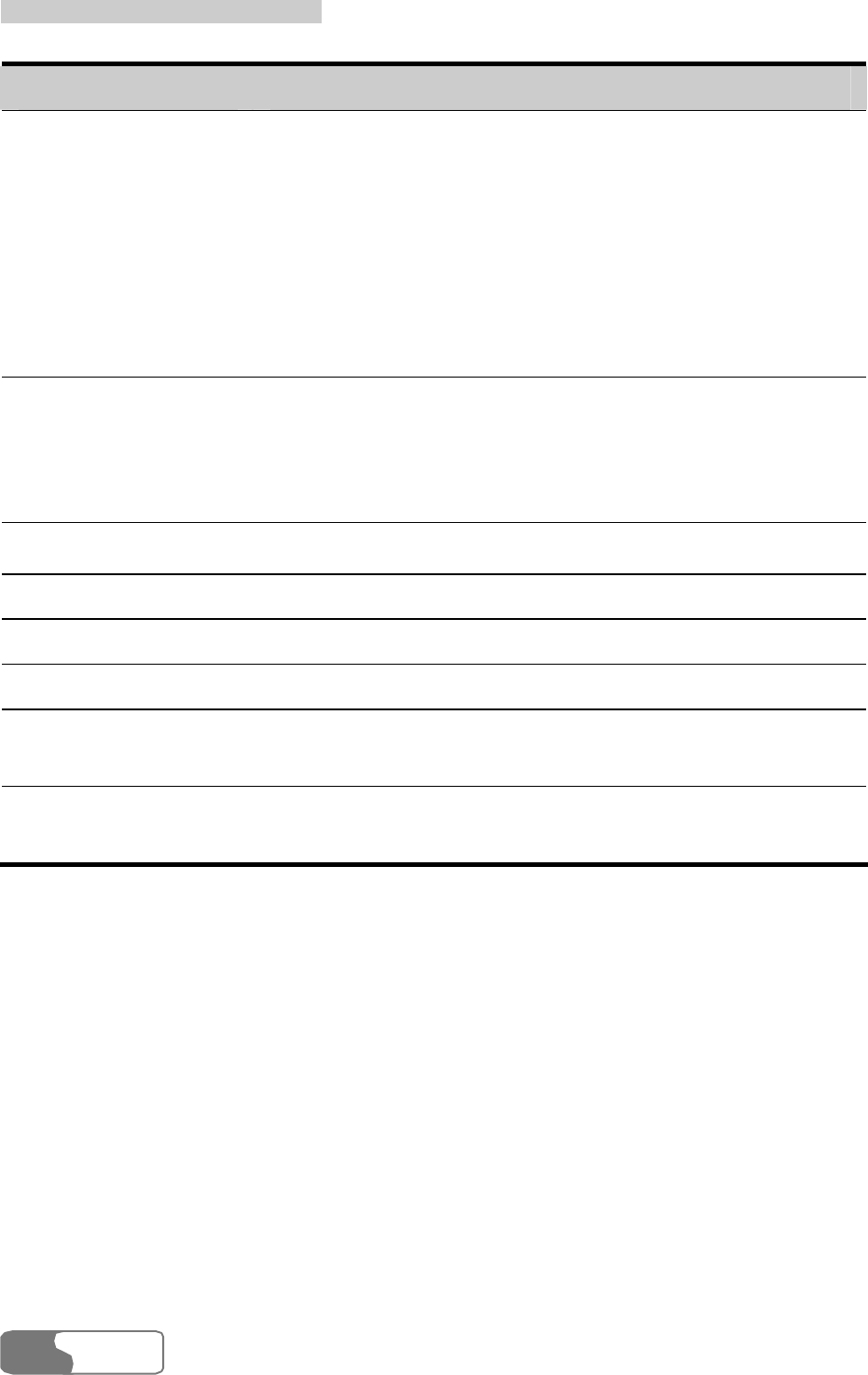
11
Technical Parameters
HUAWEI
54
Item Description
Data service GSM CS: UL 9.6kbps/DL 9.6kbps
GPRS: UL 42.8kbps/DL 85.6kbps
EDGE: UL 118.4kbps/DL 236.8kbps
WCDMA CS: UL 64kbps/DL 64kbps
WCDMA PS: UL 384kbps/DL 384kbps
WCDMA with HSDPA PS: UL 384kbps/DL
1.8Mbps
SMS service Support the SMS service based on GSM CS and
WCDMA CS domain.
Support the SMS service based on EGPRS and
WCDMA PS.
Concurrent ability one WCDMA CS voice + one WCDMA PS.
Size(D%W%H) 120 mm % 54 mm % 10 mm
Weight About 50g
Battery Powered via the laptop card slot, uses laptop battery
Operating
temperature -10oC–55oC
Storage
temperature -20oC–70oC

HUAWEI
55
12 FAQ on HUAWEI 3G Data
Card
How to Judge Whether the HUAWEI 3G Data Card has been
Installed Correctly?
After installing the HUAWEI 3G Data Card, two devices are displayed in the
device management, namely, the “HUAWEI Mobile Connect-3G Modem”
and the “HUAWEI Mobile Conncet-3G Application Interface”.
Check whether these two devices are installed correctly at first. If a yellow
exclamatory mark or other signs appear in front of the devices, it means that
the HUAWEI 3G Data Card has not been installed correctly, and you must
retry.
After the Data Card Management Software is installed, the Data
Card Management Always Prompts “Data Card not Exit”. Why?
You have probably inserted the Data Card before the completion of installing
the Data Card Management. Pull out the Data Card and insert it after the
installation of the Data Card Management is completed. Then, install the
HUAWEI 3G Data Card hardware driver by following the guide for
hardware installation.
What Shall I Do if I cannot Access the Internet?
1. Check whether you have activated the wireless online service at first.
You can ask the local network carrier on how to activate it.
2. If you affirm that the wireless online service has been activated, refer to
the section of “Internet Service” to implement relevant settings.
Only Part of the Message is Displayed After I Use the “Paste”
Function to Edit it. Why?
While editing the message, at most 500 English characters are supported in
the text. If the quantity of the pasted information exceeds the limitation, the
exceeding part will be deleted automatically.

12
FAQ on HUAWEI 3G Data Card
HUAWEI
56
When a Message is received, no Prompting Window Appears.
Why?
Because you have not set the function of “Display alerts when a message is
received”. To set the visual alert for messages, proceed as follows:
1. Click to display the setting interface.
2. Click the General tab page to display the General dialog box.
3. In the Message Alerts Settings group box, select the Display alerts
when a message is received checkbox.
4. In the setting interface, click OK.
After the Data Card Management Program is Started, the Data
Card Management Prompts “Import Message from SIM/USIM
Card?” or the like. After Selecting “No”, I Still Want to Import the
Message. What shall I Do?
Please proceed as follows:
1. Click to display the message interface.
2. Select the Inbox tab page.
3. Select SIM/USIM to enter the message area of SIM/USIM card.
4. Right-click a message record and perform the following operations in the
shortcut menu:
l Select Import to import the selected message to Local.
l Select Import All to import all the messages in SIM/USIM list to Local.
5. Click OK in the Prompt dialog box.
How to Dial the Telephone Numbers with “+” Sign?
To enter "+", press Shift and click at the same time, or input them
through the laptop keyboard.
Why cannot the Telephone Numbers be pasted?
Only telephone numbers such as “+0123456789#*” are legal. Confirm that
no other character is contained in the cut or pasted texts.
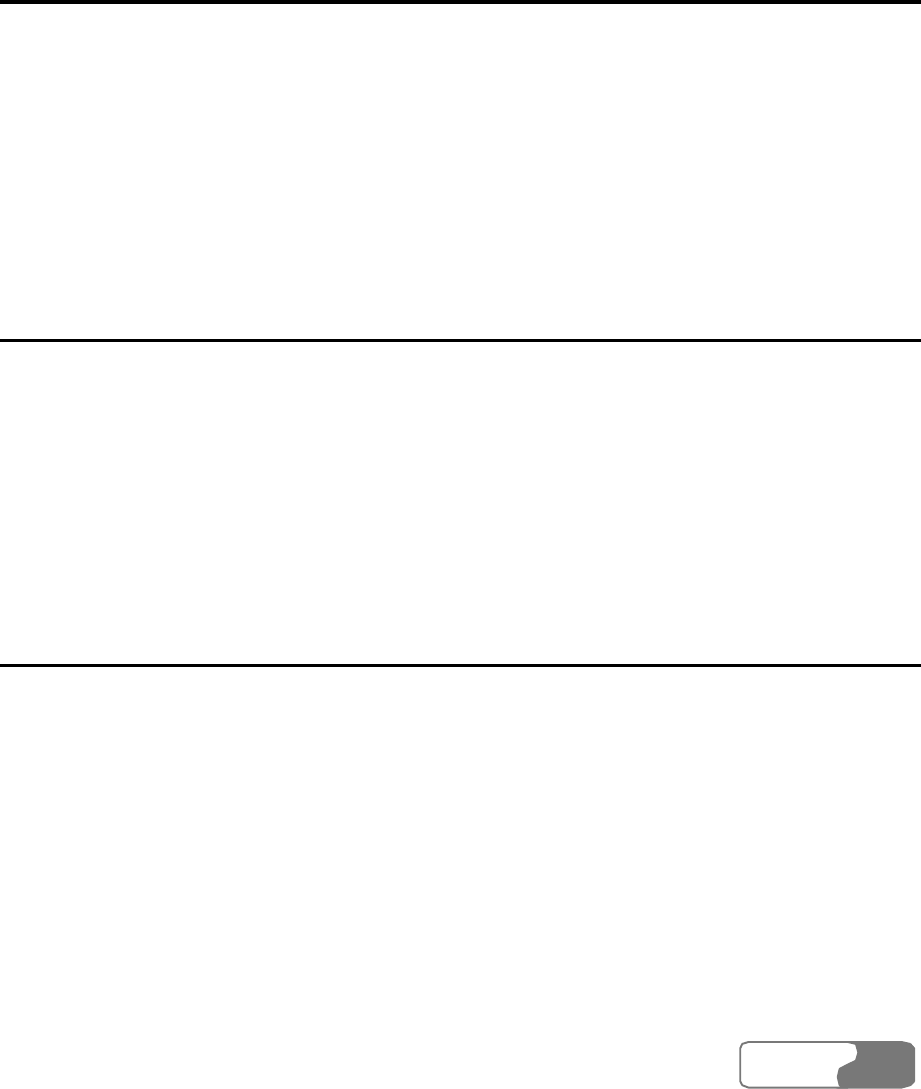
HUAWEI
57
13 Warnings and Precautions
Electronic Device
l Switch off your wireless data card near high-precision electronic devices.
The wireless data card may affect the performance of these devices.
l Such devices include hearing aids, pacemakers, fire alarm systems,
automatic gates, and other automatic-control devices. If you are using an
electronic medical device, consult the device manufacturer and confirm
whether the radio wave affects the operation of this electronic device.
Hospital
Pay attention to the following points in hospitals or health care facilities:
l Do not take your wireless data card into the operating room (OR),
intensive care unit (ICU), or coronary care unit (CCU).
l Do not use your wireless data card at places for medical treatment where it
is prohibited to use wireless devices.
Area with flammables and Explosives
In the area with inflammables and explosives, disconnect your wireless data
card from your PC and turn off the PC to avoid explosion and fire. The area
with inflammables and explosives include:
l Gas station
l Area for storing fuels (such as the bunk under the deck of a ship)
l Device/Vehicle for transporting and storing fuels or chemical products
l Area with chemical substances and particles (such as: granule, dust, metal
powder) in the air
l Area with the sign of Explosives
l Area with the sign of Turn off bi-direction wireless equipment.
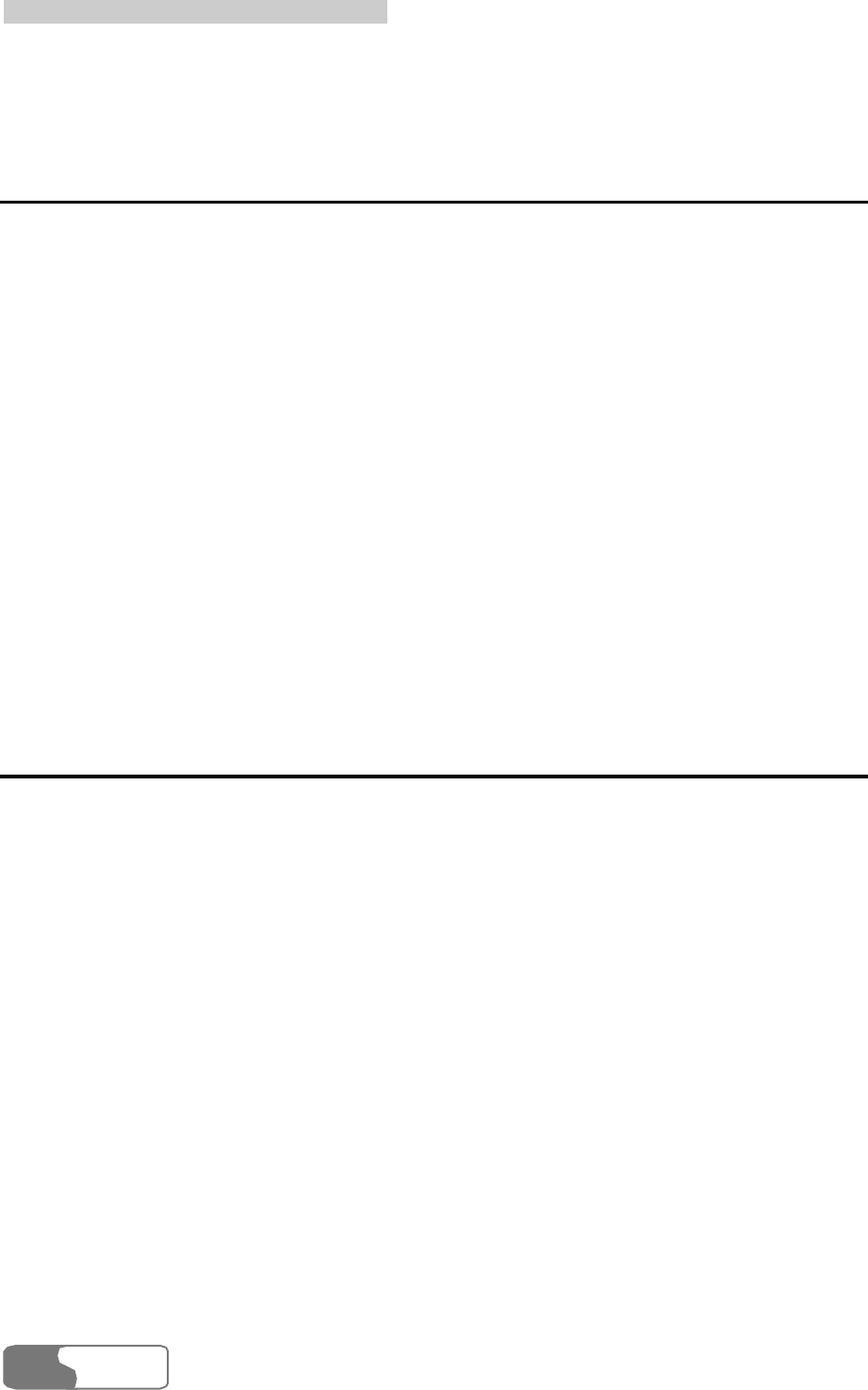
13
Warnings and Precautions
HUAWEI
58
l Area where it is generally suggested to stop the engine or a vehicle
Traffic Safety
l Please observe the relevant regulation of the area or country where you are.
Do not use your wireless data card while driving to avoid traffic accident.
l Secure the wireless data card on its holder. Do not place the wireless data
card on the seat or other places where it can get loose in a sudden stop or
collision. Use the wireless data card after the vehicle stops at a safety place.
l Do not place the wireless data card over the air bag or in the air bag
outspread area. Otherwise, the wireless data card may hurt you owing to the
strong force when the air bag inflates.
l Observe the rules and regulations of airline companies. On or nearby a
plane, disconnect the wireless data card from your PC and turn off the PC. In
areas where it is prohibited to use wireless device, do not use the wireless
data card. Otherwise, the wireless signal of the wireless data card can disturb
the plane control signals. Disconnect the wireless data card from your PC
and turn off the PC before boarding an aircraft.
Storage Environment
l Do not place magnetic storage media such as magnetic cards and floppy
disks near the wireless data card. Radiation from the wireless data card may
erase the information stored on them.
l Do not put your wireless data card in containers with strong magnetic field,
such as an induction cooker and a microwave oven. Otherwise, circuit failure,
fire, or explosion can be caused.
l Do not leave your wireless data card in a very hot or cold place. Otherwise,
malfunction of the products, fire, or explosion can be caused.
l If your PC is equipped with earphones, do not place sharp metal objects
such as pins near the earphones. The earphones may attract these objects and
hurt you when you are using the wireless data card.
l Do not put your wireless data card in the pocket on the back side of
trousers or a skirt to avoid wireless data card damage while seating.
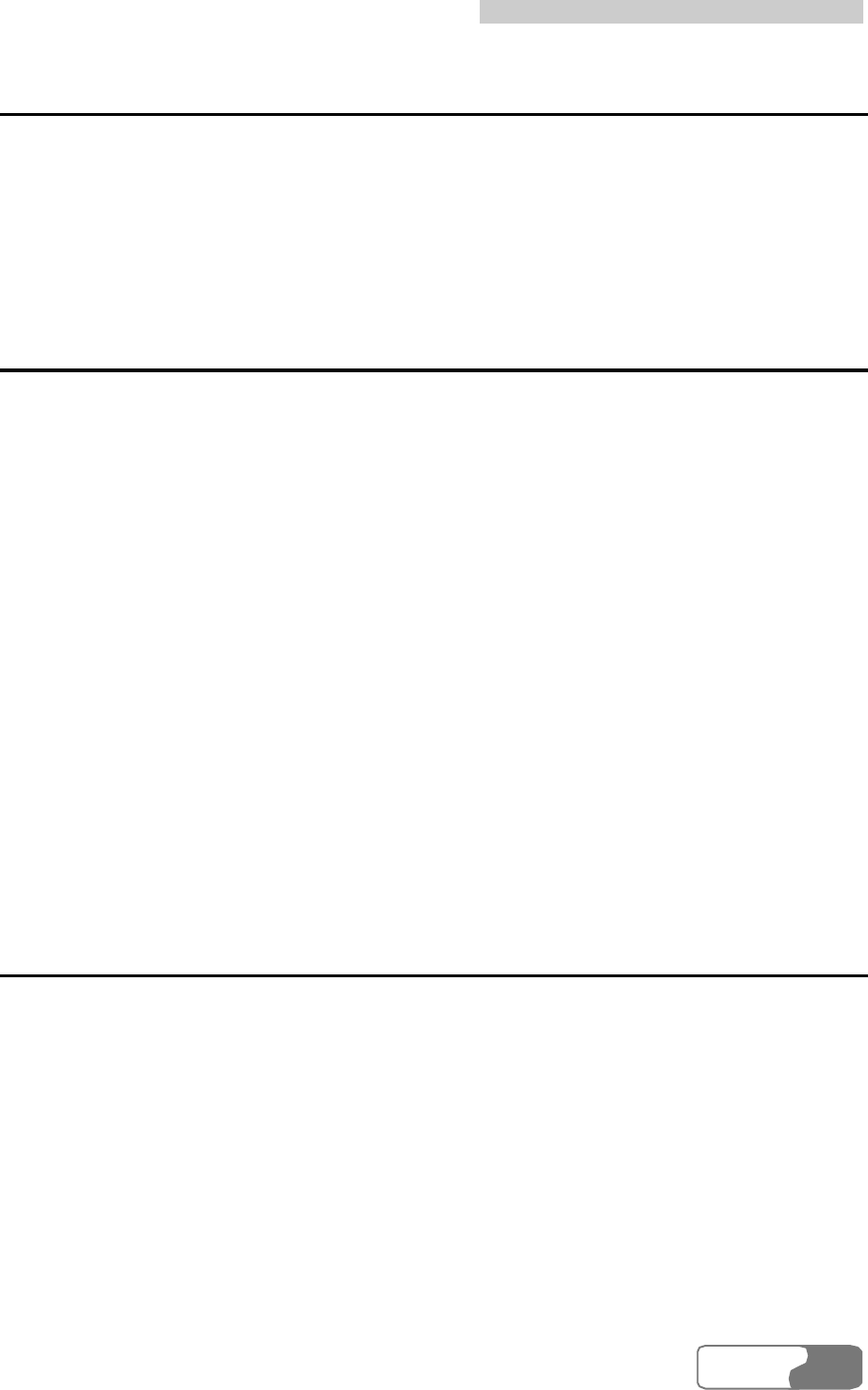
13
Warnings and Precautions
HUAWEI
59
Children Safety
l Put your wireless data card in places beyond the reach of children. Do not
allow children to use the wireless data card without guidance.
l Do not allow children to touch the small fittings. Otherwise, suffocation or
gullet jam can be caused if children swallow the small fittings.
Operating Environment
l The wireless data card is not water-resistant. Keep it dry. Protect the
wireless data card from water or vapor. Do not touch the wireless data card
with a wet hand. Otherwise, short-circuit and malfunction of the product or
electric shock can be caused.
l Do not use the wireless data card in dusty, damp and dirty places or places
with magnetic field. Otherwise, malfunction of the circuit can be caused.
l Do not connect or disconnect the wireless data card when it is near your
ears to avoid negative impact on your health.
l When you carry or use the wireless data card, keep it at least one inch (2.5
centimeters) away from your body, to avoid negative impact on your health
caused by radio frequency leakage.
l On a thunder stormy day, do not use your wireless data card outdoors.
l The wireless data card may interfere nearby TV sets and radios.
l In accordance with the international standards for radio frequency and
radiation, use wireless data card accessories approved by Huawei only.
Cleaning and Maintenance
l Before you clean or maintain the wireless data card, disconnect your
wireless data card from your PC and turn off the PC. Otherwise, electric
shock or short-circuit may be caused.
l Do not use any chemical detergent, powder, or other chemical agent (such
as alcohol and benzene) to clean the wireless data card. Otherwise, part
damage or a fire can be caused. You can clean the wireless data card with a
piece of soft antistatic cloth that is a little wet.
l Do not scratch the shell of the wireless data card. Otherwise, the shed
coating may cause skin allergy. Once it happens, stop using the wireless data
card at once and go to see a doctor.

13
Warn
ings and Precautions
HUAWEI
60
l If the wireless data card or any of its fittings does not work, turn to the
local authorize service center for help.
Environmental Care
Please observe the local regulations regarding the disposal of your packaging
materials, old wireless data card and please promote their recycling. Do not
dispose of old wireless data card in a dustbin or fire. Otherwise, explosion
can be caused
Certification Information (SAR)
THIS DEVICE MEETS THE GOVERNMENT'S REQUIREMENTS FOR
EXPOSURE TO RADIO FREQUENCY ELECTROMAGNETIC FIELD.
Your wireless data card is a low-power radio transmitter and receiver. When
it is running, it emits low levels of radio frequency energy (also known as
radio waves or radio frequency fields).
Governments around the world have adopted comprehensive international
safety guidelines, developed by scientific organizations, e.g. ICNIRP
(International Commission on Non-Ionizing Radiation Protection) and IEEE
(Institute of Electrical and Electronics Engineers Inc.), through periodic and
thorough evaluation of scientific studies. These guidelines establish
permitted levels of radio wave exposure for the public. The levels include a
safety margin designed to assure the safety of all persons, regardless of age
and health, and to account for any variations in measurements.
Specific Absorption Rate (SAR) is the unit of measurement for the amount of
radio frequency energy absorbed by the body when using a wireless data
card. The SAR value is determined at the highest certified power level in
laboratory conditions, but the actual SAR level of the wireless data card
while operating can be well below the value. This is because the wireless
data card is designed to use the minimum power required to reach the
network.
All models of Huawei’s wireless data card are designed to meet radio
frequency exposure guidelines such as European Council Recommendation
and Federal Communications Commission Notice (United States).

13
Warnings and Precautions
HUAWEI
61
European Council Recommendation: Before a wireless data card model is
available for sale to the public, it must be tested according to the technical
standard-EN 50361 and does not exceed the limit established by the
European Council Recommendation: 1999/519/EC for safe exposure.
The SAR limit adopted by the 1999/519/EC is 2.0 watts/kilogram (W/kg)
averaged over ten gram of tissue. The highest SAR value for this device type
when tested is 1.56 W/kg.
Federal Communications Commission Notice (United States): Before a
wireless data card model is available for sale to the public, it must be tested
and certified to the FCC that it does not exceed the limit established by the
government-adopted requirement for safe exposure.
The SAR limit adopted by the USA and Canada is 1.6 watts/kilogram (W/kg)
averaged over one gram of tissue. The highest SAR value reported to the
FCC and IC for this device type when tested for use is 1.53 W/kg.

HUAWEI
62
14 Abbreviations
A
APN Access Point Name
B
BDN Barred Dialing Numbers
C
CS Circuit Service
D
DNS Domain Name Services
E
EDGE Enhanced Data Rates for GSM Evolution
F
FDN Fixed Dialing Numbers
G
2G The 2nd Generation
3G The 3rd Generation
GPRS General Packet Radio Service
GSM Global System for Mobile Communications

14
Abbreviations
HUAWEI
63
H
HSDPA High Speed Downlink Packet Access
I
IP Internet Protocol
M
MCS # Modulation Coding Scheme
P
PIN Personal Identification Number
PS Packet Switched Service
PUK PIN Unblocking Key
S
SDN Service Dialing Numbers
SIM Subscriber Identity Module
U
UMTS Universal Mobile Telecommunications System
USIM UMTS Subscriber identity module
W
WCDMA Wideband CDMA
WINS Windows Internet Name Service
BOM
:
310158
34
Ver: V1.13